- Market Segmentation in Tourism (What It Is & Why It Matters)

Pete Sherwood , Director of Content Strategy


Pete Sherwood
Director of content strategy.
Don’t let the ever-present hat fool you (he took it off for this one photo), Pete is "all business" when it comes to taking websites from good to great. Pete writes compelling copy for users as well as search engines, and while he's sensitive about his overuse of em-dashes, he's constantly churning out succinct, targeted copy for clients in a variety of industries.
- eCommerce Content Marketing Tips (That Work)
- E-Commerce Use Case: Corinthian Marine
- E-commerce: Market segmentation strategies can grow your sales
- The Pillars of Branding for Credit Unions
- Why Hire a Copywriter
- The Digital Patient Journey: Turning searches into conversions
- Medical on Mobile: Why Responsive and Mobile First Design Are Vital to the Healthcare Industry
March 22, 2023 | Reach an Audience

Originally published April 11, 2017 Updated March 26, 2023
As the tourism industry continues to advance, competition among businesses intensifies. To excel, you must understand your customers’ diverse needs and preferences.
This is where travel market segmentation comes in. This process divides a larger market into smaller groups of consumers with similar needs and characteristics.
Market segmentation is essential for travel and tourism businesses to effectively reach and engage with their target audience.
By identifying specific travel segments, such as solo travelers, adventure seekers, or luxury travelers, you can tailor your offerings and marketing messages to meet their unique needs.
In fact, a report by McKinsey & Company shows 71% of consumers expect companies to deliver personalized interactions .
This report indicates the increasing significance of market segmentation in the tourism industry. Companies that excel at demonstrating customer intimacy generate faster revenue growth rates than their peers.
In this blog post, I’ll explore the importance of market segmentation in tourism, why it’s important, and how you can use it to improve your marketing strategy.
What Is Market Segmentation in Tourism?
Market segmentation in tourism is the process of dividing the market into smaller groups of consumers with similar needs or characteristics . This helps tourism businesses tailor their offerings and marketing messages. Travel market segmentation also increases customer satisfaction and loyalty.
Why Is Market Segmentation Important in the Tourism Industry?
Travel market segmentation is a crucial strategy in the tourism industry. Travel segments divide customers into distinct groups based on their needs, interests, behaviors, and demographics.
Travel segments also help businesses tailor their marketing efforts and develop targeted products and services for each group. As a result, travel and tourism companies can maximize revenue and customer satisfaction.
Here are some key reasons why market segmentation is important in the tourism industry:
Helps businesses understand their customers : By segmenting the market, you can better understand your customers and create more personalized experiences and products.
Allows for targeted marketing : Customer segments help you create marketing messages and campaigns tailored to each unique group. This can increase the effectiveness of your marketing efforts and improve customer engagement.
Increases customer satisfaction : Offering products and services customized to your customers will likely satisfy their experience. This can lead to repeat business and positive word-of-mouth.
Boosts revenue : Creating targeted products and services that appeal to specific customer segments can increase revenue. You can attract and retain more customers, which improves profitability.
What Are the 4 Types of Traveler Segmentation?
There are several different ways to segment the travel market. The four main tourism market segments include:
- Demographic segmentation in tourism : Dividing customers based on age, gender, income, education, and other demographic factors.
- Geographic segmentation in tourism : Segmenting customers based on location, such as country, region, or city.
- Psychographic segmentation in tourism : Dividing customers based on their lifestyle, interests, values, and personality traits.
- Behavioral segmentation in tourism : Segmenting customers based on their behaviors and actions, such as travel frequency, spending habits, and travel motivations.
Using these travel segments, you can develop targeted marketing strategies, improve customer satisfaction, increase loyalty, and boost revenue.
For instance, a business that focuses on adventure travel may target customers with a high interest in outdoor activities and a willingness to take risks.
Some popular segment names for the travel and tourism industry are escapists, learners, planners, and dreamers.
What Are Examples of Market Segmentation in Tourism?
Here are five brief tourism market segmentation examples. They illustrate how businesses can tailor their offerings to specific customer needs.
- Hotel targeting business travelers by offering conference rooms and fast Wi-Fi.
- Tour company targeting adventure seekers by offering hiking and extreme sports packages.
- Cruise line targeting families by offering kid-friendly activities and childcare services.
- Luxury resort targeting customers with a high income and a preference for exclusive amenities and experiences.
- A destination marketing organization targeting retirees by promoting cultural events and attractions.
Businesses that leverage tailored travel segments gain a competitive edge in the tourism industry.
Seize the (Micro) Moment in Travel Market Segmentation
Market segmentation in tourism requires you to think critically about your target audience and how they move through the customer journey.
Often, tourism and travel market segments are created by one, or a combination, of the following:
- Age / life stage (e.g., millennial, retiree)
- Socioeconomic status
- Type of travel (e.g., business, leisure, extended stay)
With online research easier and more portable than ever, we like to think about travel segments a little differently.
Travel brands and destination marketers should consider the moments your potential customers may jump online from their phone or computer—as the biggest marketing opportunity.
While the who still matters when you’re trying to reach an audience—the when is more vital than ever.
For example, think about how you planned your last vacation. If you were like most, you bounced back and forth between dreaming about and loosely planning your next getaway—zooming in on a destination and quickly bouncing around in search of inspiration only to zoom out and consider all the options yet again.
This quick spurt of research to answer an immediate need (usually turning to a search engine) has been coined “a micro-moment” by Google.
Such micro-moments represent a huge opportunity for destination marketing organizations and are the key to attracting and earning a savvy traveler’s consideration.
Often, we pull in focus groups to test our theories on user motivation and needs. From on-paper prototypes and discussion groups to high-fidelity wireframes and user-experience videos—we pick from our bag of user-testing methods to ensure content and calls-to-action are placed in the best places possible.
How to Use Travel Segments in Your Marketing Strategy
What if your brand or location could be in front of your potential customers during the exact moments they are dreaming about getting away, planning their visit, and eventually booking their vacation? What content should you create at what moments?
Knowing how to leverage travel market segmentation and the power of micro-moments is the key to upping your travel industry marketing game.
It’s how you keep your messaging laser focused and your audience satisfied. As a result, your travel or tourism company will see increased customer satisfaction, loyalty, and revenue!
Market Segmentation in Tourism FAQ
Answers to common questions about tourism market segmentation.
Why Do We Segment the Tourism Market?
The travel market is far too large and diverse to reach effectively in one fell swoop. Tourism marketers use segmentation to understand customer needs better and allocate marketing dollars effectively.
Effective travel market segmentation is based on extensive quantitative research focusing on large numbers of people. Then grouping them based on shared characteristics such as:
- Demographics
- Behavioral patterns
- Cognition ratings
Once identified, these groups are referred to as particular segments. You can target them with specific product offerings, services, and tailored marketing messages.
What Are the Components of the Tourism Industry?
There are six main components of tourism, each with sub-components. The six components of travel and tourism include attractions, activities, accessibility, accommodation, amenities, and transportation.
Travel Segments vs Personas: What’s the Difference?
Personas are used to encourage a design for real people with real needs. They break down the user’s context, needs, motivations, and pain points on a personal basis.
Travel segments aim to pinpoint and measure the size of different groups at a high level.
Market segmentation isn’t persona research. Sure, they’re very similar tools that group current and potential customers into manageable buckets. However, you can’t create a detailed buyer persona without first diving into market research.
Nonprofit Web Design Best Practice: Increasing Donations
B2b content marketing trends, four tips for marketing to older adults, hire gravitate. get results., web design & development.
We deliver compelling digital experiences to drive brands forward, engage target audiences, and drive results.
Digital Marketing
We evolve and continually enhance your digital presence to drive traffic and improve conversions.
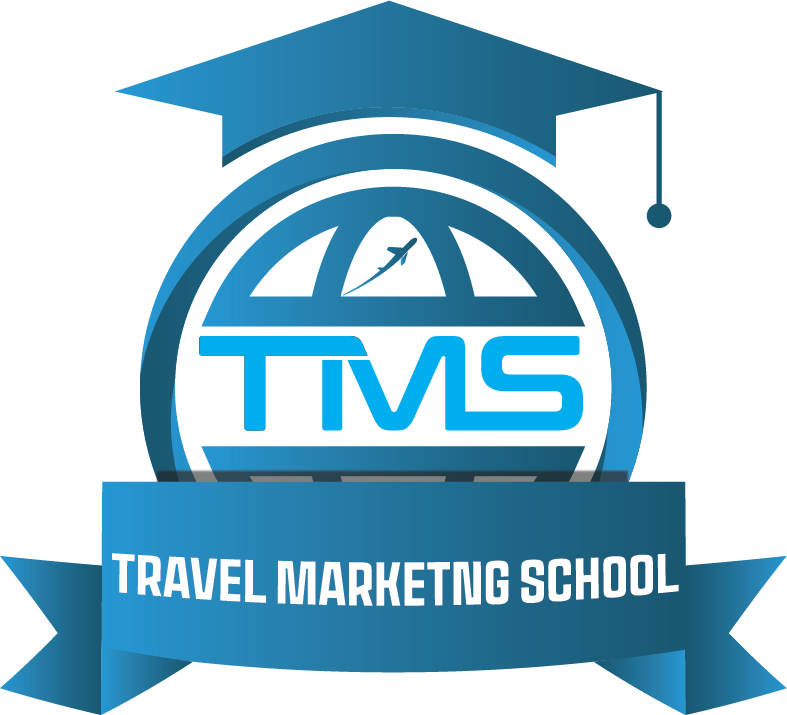
The Ultimate Guide To Types of Tourism: From Active to Zoological and More
Finding The Ideal Client For Your Travel & Tourism Brand
Welcome to our ultimate guide to types of tourism! This collection is a comprehensive exploration of the diverse world of travel.
In this guide, we delve into an extensive array of tourism types, each offering unique experiences and perspectives on the world. From thrill-seekers to animal enthusiasts and more, this guide covers a spectrum that caters to every traveler’s preference and style.
Our aim is to enlighten both seasoned and novice tourism professionals and providers about the myriad ways people can explore, learn, and interact with different cultures, environments, and communities.
Join us as we journey through each type of tourism, uncovering the nuances and specialties that make each one distinct and worthwhile.
3 Benefits to Understanding Types of Tourism
3 limitations of tourism typologies, active tourism, adventure tourism, accessible tourism, agritourism, alternative tourism, archaeological tourism, birth tourism, business tourism or mice tourism, bird tourism, coffee tourism, community-based tourism, craft tourism, cruise tourism, culinary tourism or food tourism, cultural tourism, dark tourism, dental tourism, disaster tourism, domestic tourism, drug tourism, educational tourism, enotourism/wine tourism, experiential tourism, extreme tourism, fashion tourism, film tourism, genealogy tourism, halal tourism, health tourism, heritage tourism, honeymoon tourism, industrial tourism, jungle tourism, justice tourism, lgbt tourism, literary tourism, medical tourism, militarism heritage tourism, music tourism, nautical tourism, ocean tourism, photography tourism, political tourism, rail tourism, regenerative tourism, religious tourism, rural tourism, science tourism, senior tourism, sex tourism, slow tourism, slum tourism, snow and ice tourism, space tourism, sports tourism, sustainable tourism, virtual tourism, voluntourism, war tourism, wellness tourism, wildlife tourism, zoological tourism, what other types of tourism are out there, what are the benefits of understanding types of tourism.
As you explore this guide, consider both the benefits and limitations of these tourism types.
Use them as a lens to view the vast, dynamic landscape of travel, keeping in mind that the real essence of tourism often lies in the unique, unclassifiable experiences that transcend these categories.
This guide aims to spark ideas, foster understanding, and offer a structured overview while celebrating the diversity and complexity of travel experiences worldwide.
- Identifying Personal Preferences and Destination Offerings – By exploring the different types of tourism, you can better understand what appeals to you as a traveler or what your destination can uniquely offer. This knowledge helps in tailoring travel experiences to personal tastes or in marketing a destination effectively.
- Competitive Analysis – For travel professionals and destination planners, understanding the breadth of tourism types provides a valuable tool for competitive analysis. By seeing what other destinations are doing, you can identify trends, gaps, and opportunities in the market.
- Learning from Successes and Failures – This guide serves as a repository of diverse tourism practices, allowing you to see what works and what doesn’t in different contexts. Such insights are invaluable for refining strategies and offerings in the tourism industry.
- Academic Orientation – While the categorization of tourism types is insightful, it’s important to recognize that this approach can be somewhat academic. The way these categories are defined and discussed may not always align with the more fluid, real-world experiences of travelers and industry practitioners.
- Tourist Self-Identification – Many tourists may not consciously identify with specific tourism labels like “wellness tourism seekers” or “adventure tourists.” Their motivations and behaviors might overlap across several types of tourism, making it challenging to pigeonhole their experiences into a single category.
- Guidelines, Not Rules – Consequently, it’s crucial to view these categories as flexible guidelines rather than rigid classifications. They offer a framework for understanding the broad spectrum of tourism, but they should be adapted and interpreted in the context of real-world experiences and market dynamics.
Now, I would like to begin expanding our list of types of tourism. I would like to give you 5 at a time. For each type of tourism, please give a 4-5 sentence paragraph explaining generally what this type of tourism consists of. Then give 3 bullets of examples from around the world that classify this type of tourism. Does that sound doable?
64 Types of Tourism (and Counting!)
Active tourism is centered around travel experiences that involve physical activities and outdoor adventures. It’s ideal for those who seek an energetic and health-conscious way to explore new destinations.
This type of tourism includes a range of activities such as hiking tours, cycling tours, and running tours, each offering a unique way to connect with the landscape and culture of a place.
Examples of active tourism :
- Hiking Tours in the Swiss Alps – Trekking through scenic mountain trails and enjoying breathtaking views.
- Cycling Tours in the Loire Valley, France – Exploring picturesque villages and vineyards on bike.
- Run Tours in the Italian Dolomites – Self-guided and guide-led tours through one of the most challenging and dramatic run destinations.
Adventure tourism is characterized by its focus on active, outdoor experiences that often involve an element of risk or physical exertion. It caters to travelers seeking excitement, adrenaline, and exploration in natural or exotic environments.
This type of tourism usually involves activities like trekking, mountain biking, rock climbing, or water sports. It appeals to those who want to step outside their comfort zone and embrace nature’s challenges.
Examples of Adventure Tourism :
- Trekking in the Himalayas, Nepal – Offering some of the world’s most breathtaking treks, including the famous Everest Base Camp trek.
- White-water Rafting in the Grand Canyon, USA – Navigating the rapids of the Colorado River amidst stunning canyon scenery.
- Safari Adventure in Kruger National Park, South Africa – Experiencing wildlife up close on guided safaris and bush walks.
Accessible tourism ensures travel and tourism opportunities are available to all people, regardless of their physical limitations, disabilities, or age.
This form of tourism focuses on creating inclusive environments, from transportation to accommodations and attractions, ensuring accessibility for everyone. It’s about removing barriers to travel and embracing a diverse range of travelers.
Examples of accessible tourism :
- Barrier-Free Travel in Berlin, Germany – Known for its accessible public transportation and facilities.
- Accessible Beaches in Gold Coast, Australia – Featuring beach wheelchairs and accessible walkways.
- Disney World, Florida, USA – Offering extensive accessibility options for visitors with various disabilities.
Agritourism, or agricultural tourism, involves visiting a working farm or any agricultural, horticultural, or agribusiness operation to enjoy, be educated, or be involved in activities.
This type of tourism includes a wide range of activities like fruit picking, farm stays, wine tasting, and learning about rural ways of life. It’s a way for tourists to experience and understand the agricultural landscape and traditions.
Examples of agritourism :
- Wine Tours in Tuscany, Italy – Exploring vineyards and tasting world-class wines.
- Farm Stays in Vermont, USA – Participating in farm activities and enjoying local, farm-to-table meals.
- Tea Plantation Tours in Kerala, India – Witnessing tea production and enjoying scenic plantation walks.
Alternative tourism is an approach that emphasizes travel outside of the conventional mass tourism model. It focuses on smaller groups, less trodden destinations, and experiences that promote environmental sustainability, cultural understanding, and local community engagement.
This type of tourism often involves eco-friendly practices, cultural immersion, and responsible travel ethics.
Examples of alternative tourism:
- Eco-Lodges in the Amazon Rainforest, Brazil – Providing sustainable accommodation and immersive rainforest experiences.
- Community-based Tourism in Chiang Mai, Thailand – Engaging with local hill tribes and participating in their daily activities.
- Responsible Wildlife Tours in Galapagos Islands, Ecuador – Promoting conservation and responsible interaction with unique wildlife.
Archaeological tourism involves traveling to sites of historical and archaeological significance. It appeals to those interested in the ancient history and civilizations of different cultures.
Tourists get to explore ruins, artifacts, and museums, often with the guidance of experts to enrich their understanding of the site’s historical context.
Examples of archaeological tourism :
- Pyramids of Giza, Egypt – Exploring one of the most iconic and ancient wonders of the world.
- Machu Picchu, Peru – Visiting the well-preserved ruins of an Incan city set high in the Andes Mountains.
- Roman Colosseum, Italy – Touring the remains of the ancient Roman amphitheater, rich in historical significance.
Birth tourism refers to the practice of traveling to another country for the purpose of giving birth in that country. The primary motivation is often to obtain certain benefits for the child, such as citizenship or access to superior healthcare.
This type of tourism involves extended stays and often requires considerable planning and understanding of the destination’s legal and medical systems.
Examples of birth tourism :
- Canada and the United States – Popular destinations for birth tourism due to the automatic right to citizenship for children born in these countries.
- Brazil – Known for its high-quality healthcare facilities attracting birth tourists.
- Germany – Offers excellent healthcare and allows children born to foreign parents to apply for citizenship under certain conditions.
Business tourism, also known as corporate or MICE (Meetings, Incentives, Conferences, and Exhibitions) tourism, involves travel for business-related purposes. This includes attending conferences, meetings, trade shows, and corporate events.
It’s a major sector of the tourism industry, often involving high-level logistics and luxury accommodations.
Examples of business tourism/MICE tourism :
- Dubai, UAE – Frequently hosts international business conferences and exhibitions.
- Las Vegas, USA – Known for its large convention centers and hosting major trade shows.
- Singapore – A hub for corporate meetings and international business events in Asia.
Bird tourism, or birding, is a form of natural tourism where individuals travel specifically to observe and study birds in their natural habitat. This type of tourism is popular among wildlife enthusiasts and nature photographers.
It contributes to conservation efforts and promotes awareness of bird species and their environments.
Examples of bird tourism :
- Costa Rica – Home to a diverse range of bird species, attracting bird watchers from around the world.
- Kruger National Park, South Africa – Offers birding safaris to see African bird species.
- Papua New Guinea – Known for its endemic bird species, including the famous Birds of Paradise.
Coffee tourism centers around visiting coffee plantations, learning about the coffee production process, and tasting various types of coffee. It provides insight into the journey of coffee from bean to cup, including cultivation, harvesting, and roasting.
This type of tourism is especially popular among coffee enthusiasts and those interested in agritourism. It’s also a way to understand the cultural and economic importance of coffee in different regions.
Examples of coffee tourism :
- Coffee Plantations in Colombia – Exploring the renowned coffee-growing regions and experiencing the rich flavor of Colombian coffee.
- Café Tours in Vienna, Austria – Discovering the historic coffee houses and the city’s coffee culture.
- Coffee Farms in Uganda – A special recommendation from Travel Marketing School’s founder, as he conducted a research project in Uganda, delving into the local coffee industry and its impact on communities.
Community-based tourism focuses on local communities and their cultures, traditions, and daily lives. It’s a form of sustainable tourism that aims to benefit local residents directly, often through immersive cultural experiences.
This tourism type encourages respectful and meaningful interactions between tourists and host communities.
Examples of community-based tourism :
- Sapa, Vietnam – Visitors engage with local hill tribes and experience traditional lifestyles.
- Masai Mara, Kenya – Offers cultural experiences with the Maasai people, including village tours and traditional dance performances.
- Oaxaca, Mexico – Known for community-based cultural tours, artisan workshops, and local cuisine.
Craft tourism involves traveling to destinations known for unique local crafts and artisanal products. Tourists get the chance to see artisans at work, learn about traditional crafting techniques, and purchase handmade goods.
This type of tourism supports local artisans and preserves cultural heritage.
Examples of craft tourism :
- Marrakech, Morocco – Famous for its souks with traditional crafts like pottery, leather goods, and textiles.
- Kyoto, Japan – Offers experiences in traditional Japanese crafts such as kimono making and woodworking.
- Santa Fe, New Mexico, USA – Known for Native American and Spanish colonial crafts, including jewelry and pottery.
Cruise tourism involves traveling on cruise ships that offer various on-board amenities and stop at multiple destinations. It’s a unique way to explore different places while enjoying the luxury and entertainment provided on the cruise.
This type of tourism is popular for its convenience, all-inclusive packages, and the ability to visit multiple locations in a single trip.
Examples of cruise tourism :
- Caribbean Cruises – Known for their scenic island stops and vibrant on-board activities.
- Mediterranean Cruises – Offering a journey through historic ports in countries like Italy, Greece, and Spain.
- Alaskan Cruises – Showcasing stunning glacier views, wildlife, and unique shore excursions.
Culinary tourism, also known as food tourism, involves traveling primarily for experiencing the food and culinary traditions of a particular region.
This type of tourism is not just about dining out, but also includes activities like food tours, cooking classes, wine tastings, and visiting farmers’ markets. It appeals to those keen on exploring a destination’s culture through its gastronomy.
Examples of culinary tourism or food tourism :
- Bologna, Italy – Known for its rich food culture, including dishes like Bolognese sauce and Parmigiano Reggiano cheese.
- Bangkok, Thailand – Famous for its street food tours offering a taste of authentic Thai cuisine.
- Oaxaca, Mexico – Offers culinary experiences centered around traditional Mexican cuisine, including mole and mezcal tasting.
Cultural tourism involves traveling to experience the culture, traditions, and lifestyle of a particular area. This includes visiting historical sites, festivals, art galleries, theaters, and experiencing local customs.
Cultural tourists seek to gain an authentic experience and a deeper understanding of the destination’s heritage.
Examples of cultural tourism :
- Kyoto, Japan – Renowned for its temples, traditional tea ceremonies, and Geisha culture.
- Paris, France – Offers a rich cultural experience with its world-famous museums, art galleries, and historical architecture.
- Marrakech, Morocco – Known for its vibrant souks, historic palaces, and Berber culture.
Dark tourism involves visiting sites associated with death, suffering, or tragedy. This controversial form of tourism is often educational and thought-provoking, aiming to commemorate and remember historical events.
It includes visiting war zones, genocide memorials, disaster sites, and prisons.
Examples of dark tourism :
- Auschwitz-Birkenau, Poland – A former Nazi concentration and extermination camp, now a museum and memorial.
- Chernobyl, Ukraine – Tours to the site of the Chernobyl nuclear disaster.
- Ground Zero, New York, USA – The site of the September 11 attacks, now home to a memorial and museum.
Dental tourism involves traveling abroad for affordable dental care, surgery, or procedures that are more expensive in one’s home country. It’s often combined with the opportunity to vacation and relax during the recovery period.
This type of tourism is popular due to the cost savings and quality of care available in certain countries.
Examples of dental tourism :
- Bangkok, Thailand – Known for high-quality dental services at a fraction of the cost compared to Western countries.
- Budapest, Hungary – A popular destination for dental care, offering modern clinics and experienced dentists.
- Costa Rica – Attracts dental tourists with its combination of professional dental care and beautiful vacation spots.
Disaster tourism is the practice of visiting locations that have experienced natural or man-made disasters. It can be controversial, but when managed ethically, it can offer educational value and support for the affected communities through tourism revenue.
This type of tourism includes visiting areas hit by hurricanes, earthquakes, or industrial catastrophes.
Examples of disaster tourism :
- New Orleans, USA – Tours of areas affected by Hurricane Katrina, focusing on the disaster’s impact and recovery efforts.
- Pompeii, Italy – An ancient city preserved in volcanic ash from Mount Vesuvius, offering insights into the life and sudden end of a Roman city.
- Fukushima, Japan – Guided tours in the regions affected by the 2011 tsunami and nuclear disaster, focusing on the impacts and ongoing recovery.
Domestic tourism involves traveling within one’s own country rather than going abroad. This type of tourism allows individuals to explore different regions, cultures, and attractions within their national borders. It’s a way to support local economies and discover the diversity of one’s own country.
Domestic travel can range from weekend getaways to extended tours and can include a variety of activities like city breaks, countryside excursions, or coastal holidays.
Examples of domestic tourism :
- The Lake District, England – Known for its stunning landscapes, hiking trails, and quaint villages.
- Yellowstone National Park, USA – Attracts visitors with its geothermal features and wildlife.
- Great Ocean Road, Australia – A scenic drive famous for its rugged coastline, including the Twelve Apostles.
Drug tourism refers to travel to a region to obtain or use drugs that are illegal in one’s home country. This controversial type of tourism often involves substances that are culturally or legally accepted in the destination.
It’s important to approach this topic with an understanding of the legal and ethical implications involved.
Examples of drug tourism :
- Amsterdam, Netherlands – Known for its coffee shops where certain types of cannabis are legally sold and consumed.
- Ayahuasca Retreats in Peru – Offering spiritual experiences with the traditional Ayahuasca brew, often under the guidance of a shaman.
- Certain States in the USA – Where the recreational use of cannabis is legal, attracting tourists from other states or countries.
Ecotourism focuses on responsible travel to natural areas, conserving the environment, and improving the well-being of local people. It emphasizes minimizing the impact of tourism, promoting environmental awareness, and providing direct financial benefits for conservation and community development.
Ecotourism experiences often include wildlife viewing, nature hikes, and educational activities about local ecosystems.
Examples of ecotourism :
- Costa Rica – A global leader in ecotourism, known for its rainforest tours and conservation efforts.
- The Galapagos Islands, Ecuador – Offers unique wildlife experiences with a strong emphasis on preserving the islands’ delicate ecosystem.
- Kenya – Renowned for its safari experiences in national parks that combine wildlife viewing with conservation efforts.
Educational tourism is travel aimed at acquiring knowledge or learning something new, including student exchanges, study tours, and academic sabbaticals.
This type of tourism can encompass a wide range of subjects, from language learning to cultural studies, and is often facilitated by educational institutions.
Examples of educational tourism :
- Language Schools in Spain – Offering immersive Spanish language learning experiences.
- Historical Tours in Rome, Italy – Focusing on the city’s rich ancient history and architecture.
- Cooking Schools in Thailand – Where tourists learn to cook traditional Thai dishes in a hands-on setting.
Enotourism, or wine tourism, involves visiting vineyards, wineries, wine festivals, and tasting rooms to experience the process of wine production and to taste wines in their natural setting.
This type of tourism often includes learning about viticulture and winemaking processes, and experiencing the culture and cuisine associated with wine regions.
Examples of enotourism or wine tourism :
- Bordeaux, France – Famous for its wine tours and tastings in renowned vineyards.
- Napa Valley, California, USA – Known for its world-class wineries and beautiful landscapes.
- Tuscany, Italy – Offers picturesque vineyards, wine tastings, and tours of historic wineries.
Experiential tourism focuses on creating immersive experiences for travelers, allowing them to actively engage with the history, people, culture, food, and environment of a destination. Instead of being passive observers, tourists are encouraged to participate actively in the local way of life.
This type of tourism often involves authentic, hands-on activities that provide a deeper understanding of the local culture.
Examples of experiential tourism :
- Live Like a Local in Bali, Indonesia – Engaging in traditional Balinese daily activities, from rice farming to temple rituals.
- Culinary Classes in France – Learning to cook regional French dishes with local chefs.
- Maori Cultural Experiences in New Zealand – Immersive experiences in Maori history, art, and traditional ceremonies.
Extreme tourism caters to tourists seeking adrenaline-pumping activities and experiences that involve a high level of risk. This type of tourism is for thrill-seekers who enjoy challenging themselves physically and mentally.
Activities often take place in extreme or unusual environments, from remote wilderness to harsh climates.
Examples of extreme tourism :
- Mount Everest Expeditions, Nepal – Attempting to summit the world’s highest peak.
- Volcano Boarding in Nicaragua – Sliding down the slopes of an active volcano on a specialized board.
- Ice Diving in Antarctica – Exploring underwater environments beneath the ice.
Fashion tourism revolves around traveling to destinations known for their influence in the world of fashion. This includes visiting fashion capitals for events like Fashion Week, exploring famous shopping districts, and attending fashion shows.
It’s a blend of travel and the love of fashion, style, and shopping.
Examples of fashion tourism :
- Milan Fashion Week, Italy – Attending one of the most prestigious events in the fashion world.
- Shopping in Paris, France – Exploring high-end fashion boutiques in areas like the Champs-Élysées.
- Garment District Tour in New York City, USA – Discovering the heart of America’s fashion industry.
Film tourism involves visiting locations where famous movies or TV shows were filmed. This type of tourism allows fans to connect with their favorite media by seeing and experiencing the actual places featured on screen.
It includes guided tours of film sets, themed attractions, and visiting iconic locations from popular films.
Examples of film tourism :
- Hobbiton Movie Set, New Zealand – Exploring the filming location of “The Lord of the Rings” and “The Hobbit” trilogies.
- Game of Thrones Tours in Dubrovnik, Croatia – Visiting key filming locations from the popular TV series.
- Harry Potter Studio Tour in London, England – Experiencing the behind-the-scenes of the Harry Potter movie series.
Genealogy tourism, or ancestry tourism, involves individuals traveling to explore their family roots and heritage. This journey often includes visiting ancestral hometowns, exploring archives and libraries, and connecting with distant relatives.
It’s a personal form of tourism that provides a deeper understanding of one’s family history and cultural background.
Examples of genealogy tourism :
- Visiting Ellis Island, USA – Exploring the gateway for millions of immigrants and searching historical records.
- Ancestral Villages in China – Travelers visit their ancestral villages to learn about family history and participate in traditional customs.
- Genealogy Research in Ireland – Utilizing resources like the National Library of Ireland to trace Irish ancestry and visiting ancestral homes.
Geotourism focuses on the geographical characteristics of a destination, including its culture, aesthetics, heritage, and well-being of its inhabitants. It emphasizes a deep respect and appreciation for the intrinsic natural and cultural features of a place.
Geotourism often involves exploring unique geological features, landscapes, and local traditions in a sustainable manner.
Examples of geotourism :
- Grand Canyon, USA – Marveling at one of the world’s most renowned geological wonders.
- Icelandic Geothermal Springs – Experiencing geysers, hot springs, and volcanic landscapes.
- The Great Barrier Reef, Australia – Exploring the world’s largest coral reef system, renowned for its vibrant marine life.
Halal tourism caters to Muslim travelers who wish to adhere to their Islamic beliefs while traveling. This includes access to Halal food, prayer facilities, and accommodation that aligns with Islamic practices.
Halal tourism also often involves experiences that respect Islamic culture and heritage.
Examples of halal tourism :
- Istanbul, Turkey – Offering a rich Islamic heritage, Halal-friendly hotels, and mosques.
- Kuala Lumpur, Malaysia – Known for its Halal culinary scene and Islamic art museums.
- Dubai, UAE – Providing luxury Halal travel experiences, from shopping to accommodation.
Health tourism involves traveling to improve one’s physical or mental health, often including medical treatments, wellness retreats, or fitness programs.
This type of tourism can range from spa and wellness retreats to undergoing medical procedures or therapies in specialized facilities abroad.
Examples of health tourism :
- Spa Retreats in Bali, Indonesia – Offering holistic wellness experiences, including traditional Balinese treatments.
- Yoga Retreats in Rishikesh, India – Known as the ‘Yoga Capital of the World’, offering a range of yoga and meditation retreats.
- Thermal Baths in Budapest, Hungary – Famous for its thermal springs and spa culture.
Heritage tourism involves visiting sites of historical or cultural significance to understand and appreciate the past. It includes exploring ancient ruins, historical landmarks, museums, and culturally rich neighborhoods.
This type of tourism is about connecting with the history, traditions, and heritage of a place.
Examples of heritage tourism :
- The Pyramids of Giza, Egypt – Exploring one of the most significant archaeological sites in the world.
- The Historic Center of Rome, Italy – Immersing in the rich history of the Roman Empire.
- The Great Wall of China – Visiting the iconic symbol of China’s historical defense architecture.
Honeymoon tourism caters to newlyweds seeking a romantic and memorable experience post-wedding. It often involves luxury accommodations, picturesque settings, and romantic activities.
Destinations range from tropical beaches to cozy mountain retreats, tailored to provide an intimate and special experience for couples.
Examples of honeymoon tourism :
- Maldives – Known for its overwater bungalows and idyllic island settings.
- Paris, France – Often dubbed the ‘City of Love’, popular for its romantic ambiance.
- Santorini, Greece – Famous for its stunning sunsets, white-washed buildings, and beautiful beaches.
Industrial tourism involves visiting industrial sites, factories, or other facilities to learn about their history, operations, and contributions to society. This type of tourism offers insight into various industries, from traditional manufacturing to high-tech sectors.
Visitors get a chance to see how products are made and understand the industrial heritage of a region.
Examples of industrial tourism :
- Boeing Factory Tour, Seattle, USA – Observing the assembly of airplanes in the world’s largest building by volume.
- Guinness Storehouse, Dublin, Ireland – Exploring the history and production of the famous beer.
- BMW Welt, Munich, Germany – Showcasing the brand’s history and offering insights into modern car manufacturing.
Jungle tourism focuses on exploring dense rainforests or jungles, offering an immersive experience in rich, biodiverse environments. This type of tourism often includes guided treks, wildlife watching, and learning about the ecosystem and indigenous cultures.
It’s popular among nature enthusiasts and adventure seekers.
Examples of jungle tourism :
- Amazon Rainforest, Brazil – Experiencing the world’s largest tropical rainforest and its diverse wildlife.
- Taman Negara, Malaysia – Exploring one of the world’s oldest rainforests with guided jungle treks.
- Madagascar – Visiting unique ecosystems with a vast array of endemic species, from lemurs to exotic plants.
Justice tourism is a form of travel concerned with social justice and human rights. It involves visiting places significant to historical or contemporary struggles for justice and equality.
This type of tourism aims to educate travelers about issues like poverty, oppression, and civil rights, often involving interactions with local communities.
Examples of justice tourism :
- Robben Island, South Africa – The prison where Nelson Mandela was held, now a symbol of the struggle against apartheid.
- Civil Rights Trail, USA – Visiting key sites of the American Civil Rights Movement.
- Memorial to the Murdered Jews of Europe, Berlin, Germany – Reflecting on the history and impact of the Holocaust.
LGBT tourism caters to members of the LGBT community and is focused on destinations, accommodations, and events that are welcoming and inclusive. This type of tourism includes pride festivals, cruises, and destinations known for their supportive and vibrant LGBT scenes.
It promotes a safe and open environment for LGBT travelers.
Examples of LGBT tourism :
- San Francisco, USA – Known for its inclusive and vibrant LGBT community and history.
- Amsterdam, Netherlands – Hosting one of the world’s most famous pride parades and offering a welcoming atmosphere.
- Mykonos, Greece – A popular LGBT-friendly island with a lively nightlife and beautiful beaches.
Literary tourism involves visiting locations associated with famous authors, literary works, or literary history. This can include authors’ homes, settings of famous novels, or literary festivals.
It appeals to book lovers and those interested in the world of literature and storytelling.
Examples of literary tourism :
- Stratford-upon-Avon, England – The birthplace of William Shakespeare, with various related sites and theaters.
- Brontë Parsonage Museum, England – The former home of the Brontë sisters, set in the landscape that inspired their novels.
- Joyce’s Dublin, Ireland – Exploring the city through the lens of James Joyce’s works, particularly “Ulysses.”
Medical tourism involves traveling to another country for medical care, often driven by lower costs, higher quality services, or access to specific treatments not available in one’s home country.
This can include a wide range of medical services, from elective procedures like cosmetic surgery to complex treatments such as organ transplants or fertility therapy.
Examples of medical tourism :
- Bangkok, Thailand – Renowned for high-quality medical care at affordable prices, especially in cosmetic and reconstructive surgery.
- India – Offers advanced medical treatments like cardiac surgery and orthopedics at competitive prices.
- South Korea – Known for its advanced medical technology, particularly in areas like dermatology and plastic surgery.
Militarism heritage tourism involves visiting sites significant to military history, such as battlefields, war memorials, and military museums.
This type of tourism is aimed at understanding the historical context of wars and conflicts and honoring the memory of those who served.
Examples of militarism heritage tourism :
- Normandy, France – Visiting the D-Day landing beaches and war cemeteries from World War II.
- Gettysburg, USA – Exploring the site of the pivotal battle in the American Civil War.
- Hiroshima Peace Memorial, Japan – Reflecting on the impact of the atomic bomb and promoting peace.
Music tourism is travel motivated by the love of music, whether it’s visiting famous music destinations, attending concerts and festivals, or exploring the history of certain music genres.
This type of tourism can include a variety of musical experiences, from classical music concerts to rock festivals.
Examples of music tourism :
- Nashville, USA – Known as the “Music City” and famous for its country music scene and attractions like the Grand Ole Opry.
- Vienna, Austria – Celebrated for its classical music heritage and venues like the Vienna State Opera.
- New Orleans, USA – Renowned for its jazz music, lively music festivals, and vibrant street performances.
Nautical tourism encompasses activities and experiences related to sailing and boating. This can include yacht chartering, sailing regattas, and visiting maritime museums.
Nautical tourism is popular among those who enjoy the sea and water-based activities.
Examples of nautical tourism :
- Greek Islands Yacht Tour – Exploring the Aegean Sea and visiting various Greek islands by boat.
- Croatian Coastline – Offering sailing experiences along its scenic Adriatic coast.
- Monaco Yacht Show – One of the most prestigious nautical events showcasing luxury yachting.
Ocean tourism focuses on activities and experiences in and around the ocean. This includes a wide range of water-based activities such as scuba diving, snorkeling, ocean kayaking, and whale watching.
It’s ideal for those who wish to explore marine life and oceanic environments.
Examples of ocean tourism :
- Great Barrier Reef, Australia – World-famous for scuba diving and snorkeling, showcasing an array of marine life.
- Whale Watching in Maui, Hawaii – Offering opportunities to see humpback whales in their natural habitat.
- Surfing in Bali, Indonesia – Known for its excellent surfing spots and vibrant marine life.
Photography tourism caters to those who travel specifically to capture photographs of scenic, cultural, or unique subjects. This can include wildlife photography safaris, visits to picturesque landscapes, or urban photography tours.
It’s ideal for both amateur and professional photographers looking to expand their portfolios with diverse and compelling images.
Examples of photography tourism :
- Iceland – Popular for capturing natural phenomena like the Northern Lights and dramatic landscapes.
- Masai Mara, Kenya – A prime destination for wildlife photography, especially during the Great Migration.
- Paris, France – Offering classic urban photography opportunities with iconic landmarks like the Eiffel Tower.
Political tourism involves traveling to sites of significant political interest, including historical landmarks, political institutions, or locations known for political events.
This type of tourism is aimed at those interested in political history, activism, or contemporary political scenes.
Examples of political tourism :
- Washington D.C., USA – Visiting the U.S. Capitol, White House, and various political memorials.
- Berlin, Germany – Exploring sites like the Berlin Wall and Reichstag building, rich in political history.
- Beijing, China – Home to the Forbidden City and Tiananmen Square, significant in Chinese political history.
Rail tourism is centered around journeys on trains, offering a unique way to view landscapes and explore regions. This can range from luxury train experiences to scenic rail routes that traverse through picturesque countryside, mountains, or coastal areas.
It appeals to those who enjoy the romance and nostalgia of train travel.
Examples of rail tourism :
- Trans-Siberian Railway, Russia – One of the world’s longest train journeys, crossing diverse landscapes from Moscow to Vladivostok.
- The Ghan, Australia – A coast-to-coast rail journey across the Australian continent, from Darwin to Adelaide.
- Glacier Express, Switzerland – Renowned for its panoramic views of the Swiss Alps.
Regenerative tourism goes beyond sustainability, aiming to leave a place better than it was found. This approach involves engaging in travel practices that restore and enhance the environment, local culture, and community well-being.
It’s about creating a positive impact and contributing to the regeneration of the ecosystems and communities visited.
Examples of regenerative tourism :
- Reforestation Projects in the Amazon Rainforest, Brazil – Participating in efforts to replant and restore parts of the rainforest.
- Cultural Preservation Programs in Bali, Indonesia – Supporting initiatives that maintain and rejuvenate traditional Balinese arts and crafts.
- Ecosystem Restoration Camps, Various Locations – Joining camps that focus on restoring degraded landscapes and promoting ecological health.
Religious tourism, or pilgrimage, involves traveling to religious sites, temples, churches, or regions significant to specific faiths.
This type of tourism can be a spiritual journey or a way to explore the historical and cultural aspects of different religions.
Examples of religious tourism :
- Mecca, Saudi Arabia – The holiest city in Islam, visited by millions of Muslims for the Hajj pilgrimage.
- Vatican City – Attracting millions of Christian pilgrims and tourists to St. Peter’s Basilica and the Sistine Chapel.
- Varanasi, India – One of the oldest and most sacred cities in Hinduism, famous for its ghats and temples.
Rural tourism focuses on visiting rural areas to experience and understand the rural lifestyle, culture, and traditions. It often involves staying in villages, farmhouses, or homestays, and participating in activities like hiking, local crafts, and agriculture.
This type of tourism is popular among those seeking a tranquil and authentic experience away from urban centers.
Examples of rural tourism :
- Tuscany, Italy – Known for its picturesque countryside, vineyards, and traditional farm stays.
- Shirakawa-go, Japan – Offers a unique experience in traditional thatched-roof villages.
- Lancaster County, Pennsylvania, USA – Provides insight into the Amish lifestyle and culture.
Science tourism is centered around visiting sites of scientific interest, such as observatories, science museums, and research facilities. It appeals to those interested in learning about various scientific fields, from astronomy to geology.
This type of tourism often includes educational tours and interactive experiences designed to enhance understanding of scientific principles and discoveries.
Examples of science tourism :
- CERN, Switzerland – Touring the world’s largest particle physics laboratory.
- Kennedy Space Center, Florida, USA – Exploring NASA’s launch complex and space exploration exhibits.
- Galapagos Islands, Ecuador – Known for their unique biodiversity, offering insights into evolutionary biology.
Senior tourism caters to older travelers, often offering tailored travel experiences that are accessible and comfortable for them. This can include cultural tours, cruise trips, and leisure destinations with a focus on health, relaxation, and low-impact activities.
Senior tourism prioritizes ease of access, quality of services, and opportunities for social interaction.
Examples of senior tourism :
- Cruise trips in the Mediterranean – Providing accessible and leisurely travel experiences with stops at historical cities.
- Health resorts in Baden-Baden, Germany – Offering therapeutic spa treatments in a serene environment.
- Cultural tours in Japan – Guided tours with a focus on comfort and accessibility, exploring traditional Japanese culture.
Sex tourism involves traveling to engage in sexual activities, often with commercial sex workers. This controversial and often illegal form of tourism raises significant ethical and legal concerns.
It’s important to approach this topic with an understanding of the legal, social, and human rights implications involved.
Examples of sex tourism :
- Bangkok, Thailand – Known for its red-light districts, though this aspect is controversial and subject to legal and ethical scrutiny.
- Amsterdam, Netherlands – Notable for its legalized and regulated Red Light District, though the city has been taking measures to address issues related to sex tourism.
- Nevada, USA – Certain areas in Nevada have legal brothels, though this is a highly regulated industry.
Slow tourism emphasizes taking time to enjoy and experience the destination deeply rather than trying to see everything in a rush. It’s about immersing oneself in the local culture, environment, and way of life, often involving longer stays, and sustainable and mindful travel practices.
Examples of slow tourism :
- Canal Boating in France – Exploring the countryside at a leisurely pace through its network of canals.
- Walking tours in Tuscany, Italy – Enjoying the landscape, cuisine, and culture at a relaxed pace.
- Stay in a Ryokan, Japan – Experiencing traditional Japanese hospitality and culture in a serene setting.
Slum tourism involves visiting impoverished urban areas to see firsthand the life of residents in these communities. While it can raise awareness about poverty and social issues, it also raises ethical concerns about exploitation and voyeurism.
Responsible slum tourism should focus on respectful engagement and supporting local communities.
Examples of slum tourism :
- Dharavi, Mumbai, India – Guided tours that aim to break stereotypes and highlight the industriousness of the community.
- Township tours in South Africa – Visits to townships with a focus on cultural exchange and understanding the local history and social challenges.
- Favela tours in Rio de Janeiro, Brazil – Offering insights into the vibrant culture and community resilience in favelas.
Snow and ice tourism is all about travel experiences in cold and snowy environments. This type of tourism is popular for winter sports enthusiasts and those who enjoy the beauty of snowy landscapes.
Activities include skiing, snowboarding, ice skating, and visiting ice hotels or festivals.
Examples of snow and ice tourism :
- Skiing in Aspen, Colorado, USA – Offering world-class ski resorts and winter sports facilities.
- Ice Hotel Stay in Jukkasjärvi, Sweden – Experiencing unique accommodation entirely made of ice and snow.
- Harbin Ice Festival, China – Visiting one of the world’s largest ice and snow sculpture festivals.
Space tourism represents the cutting-edge of travel, offering civilians the opportunity to experience space. This emerging type of tourism includes suborbital flights that provide a few minutes of weightlessness and an incredible view of Earth from space.
It’s a frontier for wealthy adventurers and science enthusiasts.
Examples of space tourism :
- Virgin Galactic – Offering suborbital spaceflights for tourists.
- SpaceX – Developing orbital space tourism missions.
- International Space Station – Proposed private visits facilitated by companies like Axiom Space.
Sports tourism involves traveling to participate in or observe sporting events. This includes international competitions like the Olympics, marathons, football matches, or golf tournaments.
Sports tourism appeals to fans and athletes alike, offering them a chance to experience the excitement and camaraderie of sports in different locales.
Examples of sports tourism :
- FIFA World Cup, Various Locations – Attending one of the most prestigious and widely-viewed sports events in the world.
- Boston Marathon, USA – Participating or spectating in one of the oldest annual marathons.
- The Masters Golf Tournament, Augusta, USA – Observing one of the four major championships in professional golf.
Sustainable tourism focuses on traveling in a way that minimizes environmental impact and promotes conservation while benefiting local communities.
It involves responsible travel practices, supporting eco-friendly accommodations, and participating in activities that respect local culture and the environment.
Examples of sustainable tourism :
- Eco-lodges in Costa Rica – Staying in accommodations dedicated to conservation and sustainability.
- Community-based Eco Tours in Kenya – Participating in wildlife safaris that support conservation efforts and community development.
- Responsible Trekking in Nepal – Following eco-friendly practices and supporting local Sherpa communities.
Virtual tourism offers the experience of visiting a place through digital means, such as virtual reality (VR), augmented reality (AR), or online tours. It’s a way to explore destinations from home, making travel accessible to those unable to travel physically.
Virtual tours can cover historic sites, museums, natural wonders, and more.
- Virtual Reality Tours of the Louvre, France – Exploring the world-famous museum from the comfort of home.
- Online Guided Tours of the Great Wall of China – Experiencing one of the world’s most iconic landmarks digitally.
- Augmented Reality Experiences of Rome’s Ancient Sites – Using AR technology to see historical ruins in their original glory.
Voluntourism combines travel with volunteering for a cause, typically involving work towards environmental conservation, education, or community development.
While it allows travelers to contribute to positive change, it’s important to choose programs that genuinely benefit the local community and environment.
Examples of voluntourism :
- Teaching English in Rural Schools, Nepal – Assisting in educational institutions in underprivileged areas.
- Marine Conservation in the Great Barrier Reef, Australia – Participating in coral reef restoration and research projects.
- Community Building Projects – Helping construct basic infrastructure like schools and healthcare facilities.
War tourism involves visiting sites significant to wartime history, such as battlefields, war memorials, and museums.
It’s a form of tourism that seeks to understand the history of conflicts and honor the memories of those who fought in them.
Examples of war tourism :
- Vietnam War Sites, Vietnam – Exploring locations like the Cu Chi Tunnels and War Remnants Museum.
- Normandy Beaches, France – Visiting WWII D-Day landing sites and memorials.
- Somme Battlefields, France – Touring sites and cemeteries from one of the largest battles of the First World War.
Wellness tourism is centered around health and well-being, offering activities and experiences that promote physical, mental, and spiritual health. This type of tourism often includes spa retreats, yoga and meditation workshops, fitness programs, and holistic wellness therapies.
Examples of wellness tourism :
- Yoga Retreats in Rishikesh, India – Engaging in yoga and meditation in the birthplace of yoga.
- Thermal Spas in Iceland – Relaxing in natural hot springs surrounded by unique landscapes.
- Wellness Resorts in Bali, Indonesia – Participating in holistic wellness programs in a serene, tropical setting.
Wildlife tourism involves traveling to observe and interact with animals in their natural habitats. It’s a way for tourists to experience wildlife up close while promoting conservation and awareness of biodiversity.
Activities can include safaris, wildlife sanctuaries, and bird watching.
Examples of wildlife tourism :
- African Safaris, Kenya or Tanzania – Experiencing the diverse wildlife of the African savannah, including the “Big Five.”
- Gorilla Trekking in Rwanda and Uganda – Encountering mountain gorillas in their natural rainforest habitat.
- Penguin Colonies in Antarctica – Observing penguins and other Antarctic wildlife in one of the most remote areas of the world.
Zoological tourism focuses on visiting zoos, aquariums, and wildlife parks where visitors can see and learn about various animal species.
This form of tourism is educational, often highlighting conservation efforts and providing insights into animal behavior and habitats.
Examples of zoological tourism :
- San Diego Zoo, USA – Known for its vast variety of species and conservation efforts.
- Singapore Zoo, Singapore – Offering an immersive experience with its open-concept enclosures and diverse wildlife.
- Monterey Bay Aquarium, USA – Renowned for its marine life exhibits and ocean conservation education.
Have we missed any types of tourism that you think should be included on this list? Are there other examples you’d like to share? Send us a message and let us know what else should be included on this list.
6 Steps To Create an Ideal Customer Profile for Travel and Tourism
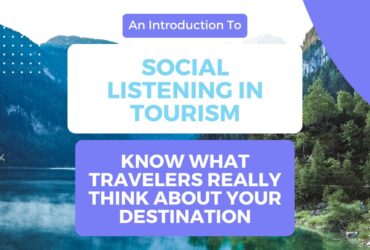
Social Listening in Tourism: A Key Tool for Destination Marketers

The Ultimate Guide to Brand Archetypes in Travel & Tourism
Tourism Marketing
Travel and tourism marketing is the systematic and coordinated execution of business policies by the both private or public and public sector tourism organizations operating at the local, regional, national, or international level to achieve the optimal satisfaction of the needs of identifiable tourist groups, and in doing so to achieve an appropriate return .
Travel agencies in the pre-deregulation, pre-liberalization, and pre-globalization era were often contended to take whatever business that come along this way and sold them on a straight commission basis without bothering about the extensive marketing. Moreover, their scope of the operation was small and was not much complex, sophisticated and competitive.
But today the travel companies are becoming larger, more sophisticated and more automated in management. Similarly, the clients/tourists are also becoming more trained, experienced, erudite and demanding higher quality services and packages.
Therefore, in this volatile travel business environment, marketing knowledge and skill are more necessary ingredients than the product knowledge and enthusiasm, for a travel agency’s long-term survival and growth. Thus, this has led to the use of tourism marketing which is recent phenomena.
History of Tourism Marketing
The ‘ marketing concept ‘ is not very old. I came into the scene in the 2nd half of the 20th century. In the beginning, it was linked with the number of closely associated factors for achieving volume sales.
The development of the marketing concept, in fact, is the outcome of political, technological, social, economic and business pressures. However, the importance of marketing within travel and tourism industry has been the level of economic and business growth throughout the 20th century, which has led to the improvement in living standards, an enlargement of the population and an increase in discretionary income and time.
These changes have also led to the construction of infrastructure, accommodation, transport , and other recreational facilities. Within a very short period, travel and tourism have become one of the most important and leading industry in the world.
Modern tourism marketing has evolved as a business reaction to changes in the Socio-Economic environment, with the most successful tourism companies or tourism bodies have demonstrated a keen sense of providing the right of organizational structure and products offer for the visitors/tourists.
Interestingly, the tourism companies have recognized the significance of key factors such as needs, wants, and satisfaction in the planning and designing of the tourism product. In the tourism industry, every tourist wants to be treated as a special client and any organization catering to this attitude of the tourist will naturally be head of other competitions.
Definitions of Tourism Marketing
According to Kotler, ” Marketing is a social and managerial process by which consumers obtain what they need and want through creating and exchanging product services and values with other .” He has emphasized more on wants, needs, satisfaction, demand, and marketers.
According to the British Chartered Institute of Marketing, ” It is the management process responsible for the identification, anticipating, assessing and satisfying the customer’s client’s requirements profitable .”
The modern marketing concept is not limited only to the identification and satisfaction of customers. It is a comprehensive process which encompasses research and analysis of society’s as well as consumer’s needs, asserts the company’s resources and marketplace and delivers the products/services to those whose experience provides a set of satisfactions which are preferable to those of the competitors.
Krippendorf defines tourism marketing,” as the systematic and coordinated execution of business policies by both private or public sector tourism organizations operated at the local, regional, national, or international level to achieve the optimal satisfaction of the needs of identifiable tourist groups, and in doing so to achieve an appropriate return .”
According to Paynter (1993), ” tour marketing is a systematic process consisting of marketing objective, strategies, schedules, marketing media, focused on the specific market segment and based on a substantial return on investment. ”
World Tourism Organisation (UNWTO) at Ottawa Seminar, has defined tourism marketing as,” a management philosophy which, in the light of tourist demand, makes it possible through research, forecasting and selection of tourism products/services from suppliers, on the line with organization’s purpose and tourist satisfaction .”
The following aspects can be identified from the above definitions:
- Tourism marketing is a thought-provoking process.
- Identification and selection of the target market.
- Positioning and product lifecycle is important.
- Future tourism marketing strategies.
- Innovative/proactive marketing.
Unique Features of Tourism Marketing
Tour package as a specialized product creates a number of significant considerations which need to be fully analyzed. The management of tour package cannot be divorced from the management of service and quality. Thus, the marketing of the tour package is different from other products because the tour package is a service product where instead of selling physical goods an intangible experience is sold.
An understanding of the complexity of the tourism product concept is an essential pre-requisite for effective tour package marketing in this context. The specific features of tourism marketing are:
- The demand for tour package is highly elastic and seasonal in nature.
- Tour package is a combination of various service ingredient.
- Designing, developing and marketing of tour package a number of intermediaries are involved. Bed experience at one level can spoil the entire image of the package as well as the tour operator .
- A tourist does not only by the tour package in advance because it is consumed and felt at the same time at a particular destination.
It is not possible to evaluate/demonstrate/sample the tour package in advance because it is consumed and felt at the same time at a particular destination.
Tour Package Marketing
A tour marketing plan is a structured guide for carrying out marketing operations. It provides a common structure and focuses on all the company’s management activities. The purposes of a marketing plan include:
- It provides a clear direction for marketing operations.
- It coordinates the resources of the organization in order to eliminate confusion and misunderstanding and achieving cooperation.
- Identifying different market segments.
- Setting targets/goals.
- Identifying the organization’s strengths and weaknesses.
- Corporate mission and goals.
- External and Internal Audit.
- Business situation analysis.
- Creating the objectives.
- Providing an effective marketing mix strategy.
- Monitoring the plan.
Thus, it has become imperative to discuss the tour marketing segment, tourist generating market, and tour marketing mix before developing a tour marketing plan.
Tour Market Segmentation
It involves a division of the prospective market into identifiable groups. The reasoning behind this is that a tour package can be sold more effectively if efforts are concentrated towards those groups which are most potential.
According to Middleton, “ Market segmentation is the process whereby producers organize their knowledge of customer groups and select for particular attention those whose needs and wants they are best able to meet their product .”
The main purpose of tour market segmentation in tourism marketing are:
- Segment the tourists generating markets.
- Identify the network of intermediaries.
- Identify the nature of demand for one’s product.
- Identify the prospective tourists.
An effective market strategy will determine exactly what the target market will be and to attempt to reach only those markets. The target market is that segment of a total potential market to which the tourist attraction would be most saleable.
Targets markets are defined geographically, demographically and so forth market segmentation must be employed in the marketing programmes to both the long-term strategies. Every tourism attraction can appeal to a multitude of market segments, and the market segment can overlap a great deal. The tour manager must look at market segments and determines which one offer the promising potential for his/her service.
Tour market segment further categories into the following types:
- Geographic Segment
- Demographic Segment
- Psychographic Segment
- Socio-Economic Segment
- Price Segment
Geographic Tourism Market Segmentation
This segment is based on the idea that customer needs differ according to geographic regions.
Demographic Segmentation
Under this segmentation, the tourism market is divided into various groups, keeping in view the demographic variables such as age, income, sex family size, occupation, education, religion etc.
Behavioral Segmentation
In this segmentation, prospective tourists are segmented on the basis of their knowledge, attitude, use or response to the tour product. Under this segmentation, the marketing strategies of a four-company include:
- User Status
- Loyalty Status
- Buyer Readiness Stages
Psychographic Segmentation
Under this, the tourists are divided into different group on the basis of their social status, lifestyles, and personality characteristics. For example, upper class, upper middle, lower classes, product preferences, adventure sports, etc.
Price Segmentation
Price ranges often come in handy in segmenting the tourist markets, such as
- Those who want to take a low priced vacation.
- Those who may take a moderately priced vacation.
Price ranges communicate to the tourists the quality expectation of a product along with the producer’s image. While determining the price of a tour package a tour planner must understand the paying capacity of the tourist.
Tour Marketing Mix
In the competitive tourism marketplace, a tour operator can be successful if it’s complete marketing mix offer matches what the tourist wants. It is planned and coordinated by marketers so that the input can be contributed in such a way that the company will be able to maximize demand and satisfaction of the tourists.
The concept of the tour marketing mix is equally relevant in the case of tourism products as it is in the case of other services and goods. Tour marketing manager must constantly search for the right marketing mix, the right combination of elements that will produce a profit. The marketing mix is composed of every factor that influences marketing efforts such as:
- BrandsPricing – In the Ratio of quality and value
- Product features
- Channels of distribution – both international and national
- Advertising
- Selling techniques
- Public relation
The fundamental starting point for the creation of a successful tour marketing mix to ensure that the target market is clearly defined. The target market is the focus of all marketing mix activities. Generally, the marketing mix constitutes four P’s . These four P’s are following as:
However, besides these four P’s in the tourism industry fifth P – People, Process, Physical evidence is also of most relevance.
Developing Tour Marketing Plan
The marketing of the package tour is materially different than the marketing of other tourism products. The reasoning behind this is that the type of tours offered by one tour company and another are different, and the marketing strategies also differ from company to company.
Each company has a wide range of tours and marketing strategies. No other travel and tourism industry component have such a wide range of specialization.
This fact should be recognized, that the effective and profitable marketing strategies are based on the tour marketing plan which is a complete ‘mechanism’ for the success of a tour company. The mechanism includes several components. These component and stages of making a tourism marketing plan are following as:
Developing a tour marketing plan
Marketing Budget
Plan Strategies
Prepare Plan Schedules
Decide Media Plan
Developing Advertising Plan
Developing Public Relation Plan
Preparing an Annual Sales Plan
Feedback and Evaluation Plan
Guide To Different Types Of Tourism And Their Features
Home » Corporate Travel » Guide To Different Types Of Tourism And Their Features
Since the beginning of time, travel has been an indispensable part of human life. In the modern world, the various aspects of travel have been accommodated into an organized word ‘Tourism’. With the ease of booking travel, the industry has grown rapidly over the past few decades. Therefore, it becomes important to segregate the industry into various types for convenience of defining the purpose of each kind of travel. Let us explore some of the main types of tourism and how they differ from each other.
Different types of tourism
1. leisure tourism.
Evident from the names, leisure tourism entails the activities and locations that will help one unwind, relax and enjoy the various aspects of their trip. Typically, leisure tourism includes an escape into the natural landscape, exploring manmade architectures while staying at a comfortable and hospitable accommodation. The tourists on leisure travel will book a stay in the luxury resort or can take shelter in offbeat homestays. It is generally an amalgamation of numerous things to do such as trying local cuisine, going shopping in the regional market, and participating in recreational activities.
- Focuses on relaxation and enjoyment
- Involves sightseeing, shopping, and cultural experiences
- Often centered around beach vacations, city breaks, and entertainment
- Offers a break from routine and an opportunity to recharge
2. Business Tourism (MICE)

Business tourism or MICE tourism (Meetings, incentives, conferences and exhibitions) explores the realm of trips taken by the employees of various organizations. As working professionals, individuals are expected to attend meetings, conferences, seminars, exhibitions and other events to expand the reach of the business. Business tourism requires meticulous planning, budget forecasting, and comprehensive reporting by the admins and employees both.
- Serves professionals attending meetings, conferences, and exhibitions
- Provides networking opportunities and knowledge sharing
- Contributes to economic development and industry growth
- Requires specialized facilities and services to cater to business needs
3. Adventure Tourism
Among the most exciting types of tourism, adventure tourism brings in the opportunity to indulge in thrilling activities revolving around natural settings. The exhilaration and physical challenges involved in this kind of tourism makes it rank among the top tourism types. The activities include skydiving, paragliding, base jumping, rafting, dune bashing, and whatnot. The excitement only gets elevated when friends and family are involved during the activities.
- Emphasizes exciting and challenging experiences
- Includes activities like trekking, rock climbing, and bungee jumping
- Appeals to thrill-seekers and those seeking adrenaline rushes
- Provides opportunities for personal growth and pushing boundaries
4. Cultural Tourism
Cultural tourism allows travelers to immerse themselves in the traditions, history, and lifestyle of a destination. The engagement required in cultural tourism is of the highest level. Tourists can visit various museums, historical sites, art galleries, traditional markets and much more. Additionally, the opportunity to meet the local community and participate in various events increases the fun all the more.
- Centers around exploration of a region’s history, traditions, and arts
- Involves visiting museums, historic sites, and attending cultural events
- Encourages interactions with locals to learn about their way of life
- Enhances cross-cultural understanding and appreciation
Suggested Read: Top 10 Business Travel Management Companies In India
5. Ecotourism
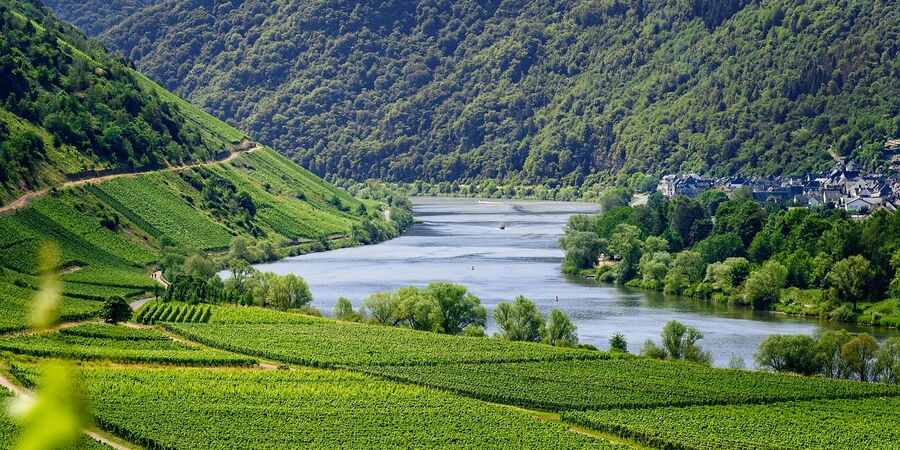
It is the type of tourism that deals with responsible travel to natural areas. Ecotourism promotes conservation of natural resources for the utilization of the future generations and consolidates sustainability. Travelers experience nature firsthand through activities like bird watching, nature walks, and wildlife safaris. The goal is to appreciate and protect the environment while supporting local authorities and communities.
- Focuses on responsible travel to natural areas
- Aims to support conservation efforts and sustainable practices
- Includes wildlife observation, nature walks, and eco-friendly accommodations
- Offers opportunities to connect with nature and learn about ecosystems
6. Culinary Tourism
Culinary tourism is a delightful and immersive way to experience the heart of any destination – its food. It focuses on inviting travelers to try top authentic food of any specific country or region. Travelers savor the flavors, aroma, and traditional cooking techniques of local cuisines. The journey involves visiting numerous restaurants, participating in food events, going to offbeat destinations for original tastes, meeting worldwide chefs and much more. Travelers may also be enticed to cook alongside a teacher and learn new ways of cooking.
- Revolves around exploring local cuisine and food culture
- Includes food tasting, cooking classes, and market visits
- Provides insights into regional flavors, ingredients, and cooking techniques
- Celebrates the role of food in cultural identity
7. Pilgrimage
Religious tourism or pilgrimage is a type of tourism involving spiritual upliftment of the travelers by visiting sacred sites, places of worship, and participating in religious events. It offers travelers a chance to know more about various religions while learning about the different practices of diverse cultures. Many travelers and worshippers believe it to be an opportunity to unite with God and find peace in their lives.
- Focuses on visiting sacred sites, pilgrimage destinations, and religious events
- Provides spiritual experiences and connections to faith traditions
- Involves participating in rituals, ceremonies, and cultural practices
- Encourages reflection and personal growth
8. Wellness Tourism
To calibrate well-being, individuals can head to wellness tourism. Rooting from the seeds of self-care, well tourism provides the various leaves and branches for a holistic development and rejuvenation. Common activities may include spa escapes, yoga practices, sampling nourishing and healthy food, massages, etc. Hiking and trekking can also be part of the wellness plan. Tourists can visit various wellness centers for the betterment of body and mind.
- Centers on promoting physical and mental well-being
- Involves spa treatments, yoga retreats, and meditation practices
- Offers relaxation, stress relief, and rejuvenation
- Emphasizes self-care and a healthy lifestyle
9. Rural Tourism
Rural tourism presents a serene escape to the idyllic countryside. It’s a journey that invites individuals to step away from the bustling urban landscape and embrace the simplicity and authenticity of rural living. Encompassing an array of enriching experiences, rural tourism offers the chance to participate in hands-on activities such as farming, tending to animals, and partaking in time-honored rural traditions.
- Offers a retreat to rural areas and countryside
- Involves farm stays, agricultural activities, and rural experiences
- Provides a chance to reconnect with nature and experience traditional lifestyles
- Supports local communities and sustainable agriculture
Tourism is a vast industry expanding with every day of the year. Though there are numerous types of tourism, embarking on the journey with a purpose remains constant. Hope the blog was able to provide you with the basics of various types of tourism and how the industry spreads out in several other branches.
Suggested Read: 7 First Time Business Travel Tips For A Flawless Trip
Types Of Tourism FAQs
What are the key features of leisure tourism.
Leisure tourism emphasizes relaxation and enjoyment, involves sightseeing, cultural experiences, and is often centered around beach vacations, city breaks, and entertainment. It offers a break from daily routines and a chance to recharge.
What are the distinctive features of business tourism (MICE)?
Business tourism provides networking opportunities, contributes to economic development, and requires meticulous planning, budgeting, and reporting.
What is ecotourism, and what is its primary focus?
Ecotourism is a type of tourism that promotes responsible travel to natural areas. Its primary focus is on conservation of natural resources, sustainability, and experiencing nature firsthand through activities like wildlife observation, nature walks, and eco-friendly accommodations.
Pratyush is a traveling enthusiast who always looks for innovations in business travel management. He has 5 years of experience writing content on corporate travel management and working closely with expert business travel facilitators.
Related Posts

Top Tips On Corporate Hotel Booking In Dubai
Dubai is a city of wonders and one of the biggest business centers in the Gulf. It has numerous corporate offices, tourist destinations, and shopping complexes. The continuous influx of professionals and tourists have offered Read more…

Corporate Travel
4 grand business hotels in pune, maharashtra.
Pune, a city renowned for its thriving business environment, is home to a selection of top-tier hotels that cater to the discerning needs of business travelers. These establishments seamlessly blend modern amenities, strategic locations, and Read more…

Top Car Rental Apps With Pros And Cons
Availing car rentals sounds like a task that involves long queues and tons of paperwork. However, the ground reality has changed drastically over the years. Modern day car rental services use intuitive applications for conducting Read more…
Let's get started!

Thanks for submitting your details.
We'll get back to you shortly.
Exploring the World of Tourism: A Comprehensive Guide to 49 Types of Tourism
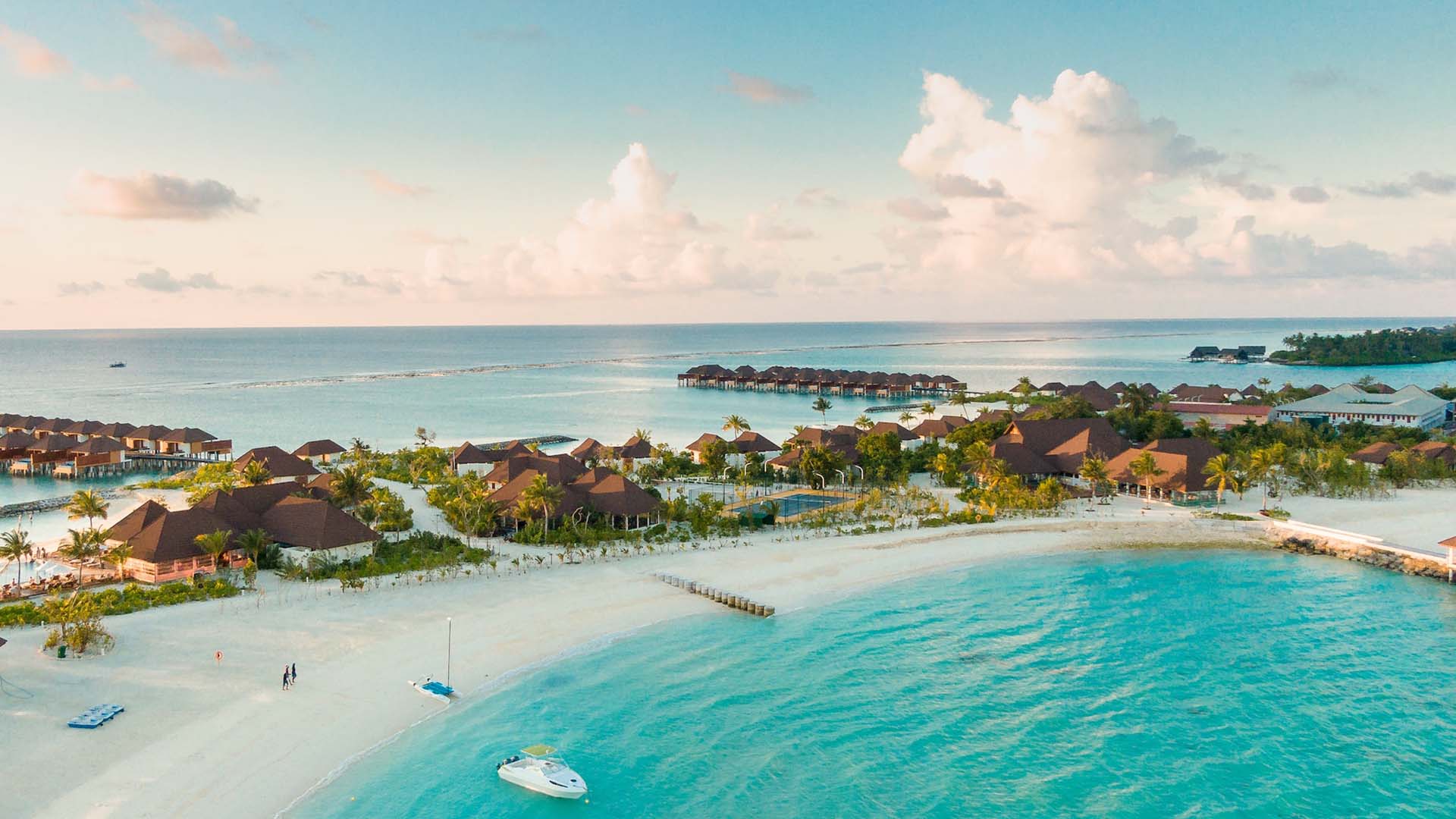
Have you ever thought about how many types of tourism there are in the world? From adventure tourism to medical tourism, the tourism industry offers a wide range of experiences for travelers.
Tourism is a rapidly growing industry, contributing greatly to the global economy . With the rise of globalization and advancements in technology, traveling has become more accessible and affordable for people all around the world.
As a result, the tourism industry has diversified and expanded to cater to the different interests and preferences of travelers.
If you are a travel enthusiast, you might be surprised to know that there are over 40 different types of tourism to choose from. Each type of tourism offers a unique experience, ranging from cultural immersion to extreme sports.
In this article, we will explore the different types of tourism in the world, giving you a glimpse into the vast array of options available to you.
Tourism is a social, cultural and economic phenomenon which entails the movement of people to countries or places outside their usual environment for personal or business/professional purposes.
49 Types of Tourism in the World
The tourism sector is constantly evolving, expanding beyond the basics of domestic, inbound, and outbound tourism.
As travel agencies, it is crucial to stay informed about the diverse range of tourism types to develop effective strategies and fuel the growth of your business. This comprehensive guide presents 62 types of tourism, offering valuable insights and opportunities for your agency to thrive in the dynamic world of travel.
Traditional Forms of Tourism
Leisure tourism.

Leisure tourism encompasses a range of activities that provide relaxation, entertainment, and cultural enrichment to travelers. Let's explore some popular forms of leisure tourism in more detail:
1. Beach Tourism
Beach tourism revolves around vacations and holidays spent in coastal areas, offering sun, sand, and various recreational activities such as swimming, sunbathing, beach volleyball, and water sports like snorkeling, surfing, and jet skiing.
Beach destinations around the world, such as Bali, Maldives, and the Caribbean, attract millions of tourists seeking relaxation and enjoyment in idyllic seaside settings.
2. Adventure Tourism
Adventure tourism caters to thrill-seeking individuals who seek exciting and adrenaline-pumping experiences. It includes activities like hiking, rock climbing, zip-lining, white-water rafting, paragliding, and bungee jumping in natural and adventurous settings.
Destinations like New Zealand, Costa Rica, and Switzerland offer breathtaking landscapes and thrilling adventure opportunities that attract adventure enthusiasts from across the globe.
3. Cultural Tourism
Cultural tourism focuses on exploring the rich heritage, traditions, and artistic expressions of a destination.
It involves visits to museums, historical sites, cultural festivals, and interactions with local communities to gain insight into their customs, rituals, and way of life. Destinations renowned for their cultural attractions include Rome with its ancient ruins, Kyoto with its traditional temples, and Istanbul with its diverse blend of cultures.
4. Wildlife Tourism
Wildlife tourism centers on observing and experiencing a particular region's diverse fauna and flora.
It includes activities such as safaris, birdwatching, nature walks, and visits to national parks and wildlife reserves. Destinations like South Africa's Kruger National Park, the Galapagos Islands in Ecuador, and the Serengeti in Tanzania offer incredible wildlife encounters and opportunities for conservation education.
Business Tourism

Business tourism, also known as MICE tourism (Meetings, Incentives, Conferences, and Exhibitions), caters to individuals traveling for business-related purposes.
Let's explore some key components of business tourism:
5. Meetings, Incentives, Conferences, and Exhibitions (MICE) Tourism
MICE tourism encompasses corporate meetings, conferences, conventions, trade shows, and exhibitions. It provides a platform for professionals to network, exchange knowledge, showcase products and services, and forge business relationships.
Major cities and convention centers worldwide, such as London, Dubai, and Las Vegas, host numerous MICE events, driving economic growth and fostering industry collaboration.
6. Trade Shows and Conventions
Trade shows and conventions are industry-specific events where businesses exhibit their products or services to potential clients, partners, and investors. These events serve as valuable marketing platforms, allowing companies to showcase their latest innovations, generate leads, and gain industry insights.
Trade shows like CES (Consumer Electronics Show) and Hannover Messe attract businesses from diverse sectors, facilitating business-to-business interactions and promoting industry growth.
7. Corporate Retreats and Team-Building Activities
Corporate retreats and team-building activities aim to foster teamwork, boost employee morale, and enhance organizational productivity. These events often take place in scenic locations, away from the usual office environment, and incorporate team-building exercises, workshops, brainstorming sessions, and recreational activities.
Corporate retreats not only strengthen internal relationships but also provide opportunities for strategic planning, innovation, and professional development.
Niche and Special Interest Tourism

Ecotourism promotes responsible travel practices that focus on preserving and conserving natural environments while providing educational and enriching experiences for travelers.
Let's delve into some facets of ecotourism:
8. Rainforest Exploration
Rainforest exploration allows travelers to immerse themselves in the lush biodiversity and unique ecosystems of tropical rainforests. Guided hikes, canopy walks, and wildlife spotting tours provide opportunities to witness rare flora and fauna, learn about sustainable conservation efforts, and contribute to local communities.
Destinations like the Amazon Rainforest in South America, Borneo's rainforests in Southeast Asia, and Costa Rica's Monteverde Cloud Forest offer captivating rainforest experiences.
9. Wildlife Conservation Tours
Wildlife conservation tours allow travelers to actively participate in conservation initiatives, contributing to the protection of endangered species and their habitats. These tours often involve volunteer work, such as monitoring wildlife, assisting in research projects, and habitat restoration efforts.
Popular wildlife conservation destinations include the Galapagos Islands, where visitors can help preserve unique marine and terrestrial ecosystems, and South Africa's game reserves, where wildlife conservation programs support endangered species.
10. Sustainable Travel Practices
Sustainable travel practices promote environmentally friendly behaviors, aiming to minimize negative impacts on natural resources, local communities, and cultures. These practices may include reducing carbon footprint, supporting local businesses, respecting local traditions, and engaging in activities that promote environmental stewardship.
Travelers can choose eco-lodges, and eco-friendly transportation options, and participate in community-based tourism initiatives to ensure their travel has a positive impact on the destination.
Wellness Tourism

Wellness tourism focuses on enhancing and rejuvenating one's well-being through various activities and experiences that prioritize physical, mental, and spiritual health.
Let's explore some aspects of wellness tourism:
11. Spa Retreats
Spa retreats offer a serene environment where travelers can indulge in relaxation, pampering treatments, and wellness therapies. From soothing massages and rejuvenating facials to holistic healing practices like yoga and meditation, spa retreats provide a sanctuary for rejuvenation and stress relief.
Destinations such as Bali, Thailand, and California's Napa Valley are renowned for their luxurious and holistic spa retreats.
12. Yoga and Meditation Retreats
Yoga and meditation retreats provide opportunities for individuals to deepen their mindfulness and spiritual practices in tranquil and picturesque settings. These retreats often combine daily yoga sessions, meditation practices, healthy cuisine, and workshops focused on personal growth and self-awareness.
Destinations like Rishikesh in India, Ubud in Bali, and Sedona in the United States are renowned for their yoga and meditation retreats.
13. Health and Wellness Resorts
Health and wellness resorts offer comprehensive programs designed to improve physical fitness, promote healthy lifestyles, and provide personalized wellness experiences. These resorts may offer fitness classes, nutritional guidance, spa treatments, wellness consultations, and activities like hiking, yoga, and mindfulness workshops.
Wellness-focused destinations such as Switzerland's renowned Swiss Alps resorts, Thailand's wellness retreats, and the wellness resorts in Arizona's Sonoran Desert cater to those seeking a holistic approach to well-being.
Culinary Tourism

Culinary tourism revolves around the exploration and appreciation of a destination's cuisine, culinary traditions, and gastronomic experiences. Let's discover the different aspects of culinary tourism:
14. Food and Wine Tours
Food and wine tours allow travelers to savor the local flavors, taste traditional dishes, and indulge in culinary delights unique to a particular region. These tours often include visits to local markets, food tastings, cooking demonstrations, and wine tastings at vineyards.
Destinations like Italy's Tuscany, France's Bordeaux region, and Japan's Kyoto are renowned for their culinary heritage and offer exceptional food and wine tours.
15. Cooking Classes and Culinary Experiences
Cooking classes and culinary experiences provide hands-on opportunities for travelers to learn about the local cuisine, traditional cooking techniques, and regional specialties. Under the guidance of expert chefs or local home cooks, participants can prepare and savor authentic dishes, gaining insights into the culinary culture of the destination.
Cities like Bangkok, Marrakech, and Barcelona are known for their immersive cooking classes and culinary workshops.
16. Farm-to-Table and Gastronomic Experiences
Farm-to-table experiences involve visits to local farms, orchards, and vineyards to witness the production process of fresh, organic ingredients. Gastronomic experiences encompass fine dining at renowned restaurants, tasting menus curated by celebrity chefs, and exploring local street food scenes.
Destinations like California's Napa Valley, France's Lyon, and Thailand's Chiang Mai provide exceptional farm-to-table and gastronomic experiences.
Adventure and Outdoor Tourism
Mountain tourism.

Mountain tourism attracts adventurous travelers seeking exhilarating experiences in breathtaking alpine landscapes. Here are some popular activities within mountain tourism:
17. Hiking and Trekking
Hiking and trekking adventures take travelers through scenic mountain trails, allowing them to explore the pristine wilderness, enjoy stunning vistas, and challenge themselves physically.
Destinations like the Himalayas in Nepal, the Swiss Alps, and the Rocky Mountains in North America offer a range of hiking and trekking opportunities suitable for different skill levels.
18. Mountaineering and Rock Climbing
Mountaineering and rock climbing appeal to those with a passion for conquering towering peaks and vertical rock formations.
From scaling iconic summits like Mount Everest and Mount Kilimanjaro to rock climbing in Yosemite National Park or the Dolomites, these activities offer a thrilling combination of physical endurance, technical skill, and awe-inspiring natural surroundings.
19. Skiing and Snowboarding
Skiing and snowboarding attract winter sports enthusiasts who enjoy gliding down snow-covered slopes and experiencing the adrenaline rush of downhill descents.
Popular ski destinations include Aspen in the United States, Whistler Blackcomb in Canada, and the Swiss Alps, where skiers and snowboarders can enjoy diverse terrains, world-class facilities, and picturesque mountain landscapes.
Water Tourism

Water tourism encompasses a wide range of activities centered around bodies of water, including oceans, lakes, rivers, and coastal areas. Let's explore some popular water-based tourism experiences:
20. Scuba Diving and Snorkeling
Scuba diving and snorkeling allow travelers to explore vibrant underwater ecosystems, encounter marine life, and marvel at coral reefs.
Destinations like the Great Barrier Reef in Australia, the Maldives, and the Red Sea in Egypt are renowned for their exceptional diving and snorkeling sites, offering opportunities to witness the beauty and biodiversity of the marine world.
21. Surfing and Water Sports
Surfing and water sports, such as paddleboarding, kayaking, and windsurfing, cater to adrenaline seekers looking to ride the waves and engage with the power of the ocean. Destinations like Hawaii's North Shore, Bali's Uluwatu, and California's Huntington Beach are renowned for their world-class surf breaks and water sports scenes.
22. Sailing and Yachting
Sailing and yachting experiences provide a luxurious and leisurely way to explore coastal regions, island hopping, and cruise along scenic coastlines. Chartering a yacht or joining a sailing excursion offers the opportunity to relax, soak in breathtaking seascapes, and visit remote islands and hidden coves.
Destinations like the Greek Islands, the Caribbean, and the French Riviera are popular sailing and yachting destinations.
Wildlife Tourism

Wildlife tourism appeals to nature enthusiasts and animal lovers who seek encounters with diverse wildlife species in their natural habitats.
Here are some popular wildlife tourism experiences:
23. Safari and Wildlife Photography
Safari adventures take travelers into national parks and game reserves, providing opportunities to spot iconic wildlife species like lions, elephants, giraffes, and zebras. Wildlife photography enthusiasts can capture stunning images of animals in their natural environment.
Destinations like Botswana's Okavango Delta, Tanzania's Serengeti National Park, South Africa's Kruger National Park, and India's Ranthambore National Park offer exceptional safari and wildlife photography experiences.
24. Birdwatching and Nature Reserves
Birdwatching enthusiasts flock to nature reserves and sanctuaries known for their rich avian biodiversity. These destinations offer opportunities to observe and identify a wide array of bird species in their natural habitats.
Places like Costa Rica's Monteverde Cloud Forest Reserve, Australia's Kakadu National Park, and Ecuador's Galapagos Islands are renowned for their birdwatching opportunities.
25. Whale Watching and Marine Wildlife Tours
Whale-watching tours provide an up-close and personal experience with these magnificent marine creatures. Travelers can observe whales breaching, swimming, and interacting in their natural habitat.
Destinations such as Iceland, Canada's Vancouver Island, and the Azores in Portugal are popular for whale watching and marine wildlife tours.
Cultural and Heritage Tourism
Historical tourism.

Historical tourism appeals to individuals interested in exploring the rich heritage and significant historical sites around the world. It provides insights into past civilizations, events, and cultural traditions.
Here are some key aspects of historical tourism:
26. Archaeological Sites and Ruins
Archaeological sites and ruins offer a glimpse into ancient civilizations and their architectural marvels.
Places like the Colosseum in Rome, Machu Picchu in Peru, and Angkor Wat in Cambodia attract history enthusiasts who are fascinated by the remnants of past civilizations and the stories they hold.
27. UNESCO World Heritage Sites
UNESCO World Heritage Sites are culturally or naturally significant locations recognized for their outstanding universal value. These sites range from iconic landmarks like the Taj Mahal in India to entire historical city centers like Prague in the Czech Republic.
Visiting UNESCO World Heritage Sites allows travelers to appreciate the world's cultural diversity and historical importance.
28. Historical Landmarks and Monuments
Historical landmarks and monuments symbolize key moments in history or commemorate notable figures or events. Examples include the Statue of Liberty in the United States, the Great Wall of China, and the Pyramids of Giza in Egypt.
Exploring these landmarks provides a deeper understanding of their historical significance and their impact on society.
Religious Tourism

Religious tourism caters to individuals seeking spiritual experiences, pilgrimages, or a connection with sacred sites. It offers insights into different religious traditions and the architectural wonders associated with them.
Here are some facets of religious tourism:
29. Pilgrimages and Sacred Sites
Pilgrimages involve journeys to sacred destinations associated with specific religions or spiritual beliefs. Places like Mecca for Muslims, Jerusalem for Christians, and Varanasi for Hindus hold immense religious significance and attract millions of pilgrims each year.
30. Spiritual Retreats and Meditation Centers
Spiritual retreats and meditation centers offer tranquil environments for introspection, relaxation, and spiritual growth. These retreats focus on mindfulness, meditation practices, and holistic healing.
Popular destinations for spiritual retreats include Bali in Indonesia, Sedona in the United States, and Rishikesh in India.
31. Religious Festivals and Events
Religious festivals and events provide a vibrant and immersive experience of cultural traditions and religious celebrations. Examples include the Kumbh Mela in India, the Holi festival of colors, and the Christmas celebrations in various parts of the world.
Participating in these festivals offers a unique glimpse into local customs, rituals, and the spirit of the community.
Indigenous Tourism

Indigenous tourism aims to promote understanding, appreciation, and respect for indigenous cultures, traditions, and ways of life. It provides opportunities to engage with indigenous communities and learn about their heritage.
Here are elements of indigenous tourism:
32. Indigenous Cultural Experiences
Indigenous cultural experiences allow travelers to interact with indigenous communities, learn about their traditions, crafts, music, and storytelling. These experiences foster cultural exchange and promote the preservation of indigenous heritage.
Destinations like the Maori culture in New Zealand, the Aboriginal culture in Australia, and the Native American reservations in the United States offer such immersive experiences.
33. Tribal Village Visits
Visiting tribal villages allows travelers to observe and learn about the traditional lifestyles, customs, and rituals of indigenous communities. It provides insights into their sustainable practices, craftsmanship, and deep-rooted connections with nature.
Destinations such as the Amazon rainforest, the Maasai Mara in Kenya, and the Highlands of Papua New Guinea offer opportunities to visit tribal communities.
34. Traditional Arts and Crafts
Indigenous cultures often have a rich tradition of art, crafts, and handicrafts that reflect their unique identity and skills. Exploring indigenous arts and crafts markets, workshops, and galleries allows travelers to appreciate and support the preservation of these traditional artistic practices.
From intricate weaving in Peru to intricate beadwork in South Africa, there is a vast array of indigenous art to discover.
Urban Tourism

City Tourism
City tourism encompasses visits to vibrant urban destinations, exploring their iconic landmarks, cultural attractions, and modern lifestyle. It offers a blend of history, art, entertainment, and culinary experiences.
Key aspects of city tourism include:
35. Sightseeing and Iconic Landmarks
Cities are known for their iconic landmarks, such as the Eiffel Tower in Paris, the Statue of Liberty in New York City, and the Sydney Opera House. Sightseeing allows visitors to capture the essence of a city's character and architectural splendor.
36. Museums and Art Galleries
Cities are often home to renowned museums and art galleries that showcase world-class collections, historical artifacts, and contemporary artworks.
The Louvre Museum in Paris, the Metropolitan Museum of Art in New York City, and the Hermitage Museum in Saint Petersburg are just a few examples of the cultural treasures found in urban areas.
37. Shopping and Entertainment Districts
Urban centers offer diverse shopping experiences, from luxury boutiques to bustling street markets. Additionally, cities provide vibrant entertainment districts with theaters, music venues, and nightlife hotspots.
These districts cater to a variety of interests, ensuring that visitors can indulge in shopping, dining, and entertainment.
Architectural Tourism

Architectural tourism focuses on exploring unique architectural styles, landmarks, and urban design within cities. It allows travelers to appreciate the creativity, innovation, and historical significance of various structures.
Key elements of architectural tourism include:
38. Architectural Marvels and Landmarks
Cities showcase architectural marvels, such as the Burj Khalifa in Dubai, the Sydney Opera House, and the Guggenheim Museum in Bilbao. These structures captivate visitors with their impressive design, engineering, and cultural impact.
39. Modern and Contemporary Architecture Tours
Urban areas often feature striking modern and contemporary architecture that reflects the city's identity and vision. Walking tours or guided visits to architectural highlights, such as the Shard in London, the Marina Bay Sands in Singapore, or the Dancing House in Prague, offer insights into cutting-edge design and urban development.
40. Urban Design and City Planning
City tourism also encompasses exploring the urban design, layout, and city planning concepts that shape the physical environment. Sustainable urban planning, pedestrian-friendly streets, and green spaces contribute to the livability and attractiveness of cities.
Examples of urban design excellence can be found in cities like Copenhagen, Singapore, and Barcelona.
Emerging Forms of Tour

Dark Tourism
Dark tourism refers to visiting sites that are associated with death, tragedy, or historical atrocities. It offers a unique perspective on the darker aspects of human history. While it may seem unusual, dark tourism has gained popularity in recent years.
Here are some examples of dark tourism:
41. War Memorials and Battlefields
Visiting war memorials and battlefields provides insights into the sacrifices made during significant conflicts. Examples include the Normandy American Cemetery and Memorial in France and the Hiroshima Peace Memorial Park in Japan.
These sites allow visitors to reflect on the consequences of war and honor those who lost their lives.
42. Holocaust and Genocide Sites
Holocaust and genocide sites, such as Auschwitz-Birkenau in Poland and the Killing Fields in Cambodia, serve as reminders of the darkest chapters in human history.
These places educate visitors about the horrors of genocide and the importance of promoting peace and tolerance.
43. Disaster Tourism
Disaster tourism involves visiting locations affected by natural or man-made disasters. Examples include areas hit by hurricanes, volcanic eruptions, or industrial accidents.
While controversial, this form of tourism can raise awareness about the impact of disasters and the resilience of affected communities.
Space Tourism

Space tourism is an emerging frontier in the travel industry, allowing individuals to experience the thrill of space travel and explore the mysteries of the universe. While it is currently limited to a select few, advancements in technology and space exploration are making it more accessible.
Key aspects of space tourism include:
44. Space Travel and Exploration
Space tourism involves journeys beyond the Earth's atmosphere, offering a unique perspective of our planet and the vastness of space. Companies like Virgin Galactic and SpaceX are developing spacecraft to transport civilians into space, opening up new possibilities for adventurous travelers.
45. Astronaut Training Experiences
Before embarking on a space journey, aspiring space tourists can undergo astronaut training experiences. These programs simulate the physical and mental challenges faced by astronauts, including zero-gravity simulations, centrifuge training, and survival skills.
46. Observatories and Space Centers
Visiting observatories and space centers allows enthusiasts to learn about astronomy, space missions, and ongoing research. Places like the Kennedy Space Center in Florida and the European Space Agency's Spaceport in French Guiana offer interactive exhibits, rocket launches, and behind-the-scenes glimpses into space exploration.
Virtual Tourism

Virtual tourism has emerged as a response to the limitations of physical travel, allowing individuals to explore destinations and landmarks virtually. It offers a convenient and immersive way to experience different places from the comfort of one's home. Key aspects of virtual tourism include:
47. Virtual Reality Travel Experiences
Virtual reality (VR) technology allows users to immerse themselves in simulated environments, including famous landmarks, natural wonders, and cultural sites. VR headsets transport users to different locations, providing a realistic and interactive experience.
48. Online Museum and Landmark Tours
Many museums, historical sites, and landmarks offer virtual tours that enable visitors to explore their collections and exhibits online. These tours provide detailed information, multimedia content, and the ability to navigate through the spaces virtually.
49. Virtual Travel Platforms and Apps
Various platforms and apps offer virtual travel experiences, curated itineraries, and interactive content. These platforms leverage technology to create virtual travel communities, where users can connect, share experiences, and plan future trips.
As the travel industry evolves, embracing these emerging forms of tourism can open up new opportunities for businesses and provide unique experiences for travelers.
In conclusion, the tourism industry is a dynamic and ever-evolving sector that encompasses a wide range of experiences and opportunities. By understanding the diverse types of tourism in the world, business professionals can position themselves for success and growth in this competitive landscape.
By recognizing the unique characteristics and preferences of different traveler segments, businesses can tailor their offerings and marketing strategies to meet the specific needs of their target audiences. This not only enhances customer satisfaction but also helps in creating a competitive advantage in the market.
Moreover, as the world becomes increasingly interconnected and travelers seek authentic and immersive experiences, businesses must embrace the diversity of tourism segments. By incorporating sustainable practices, respecting local cultures, and promoting responsible tourism, businesses can contribute to the preservation of natural and cultural heritage, while also appealing to environmentally and socially conscious travelers.
Let us embrace the diversity of tourism, foster innovation, and collaborate to shape the future of this exciting industry.
- United Nations World Tourism Organization
- World Travel and Tourism Council
- International Ecotourism Society
- Global Wellness Institute
- International Culinary Tourism Association
- Adventure Travel Trade Association
- UNESCO World Heritage Centre
- The International Dark-Sky Association
- Space Tourism Society
- World Tourism Organization
- National Geographic Travel
- International Association of Antarctica Tour Operators
- World Food Travel Association
- Beach Holidays by Expedia
Tumisang Bogwasi
2X Award-Winning Entrepreneur | Empowering Brands to Generate Leads, Grow Revenue with Business Strategy and Digital Marketing | Founder, CEO of Fine Group
Related Posts

The Importance of Tourism on Economies and Businesses
- April 6, 2023

Report Description
Table of content, competitive landscape, methodology.
- Consumer Goods
- Travel & Luxury Travel
- Tourism Market Size, Share, Growth & Industry Trends [2032]

Tourism Market
Segments - by Travel Days (Within 7 Days, More Than 15 Days, and 7-15 Days), Travel Type (Business Spending and Leisure Spending), and Region (Asia Pacific, North America, Latin America, Europe, and Middle East & Africa) - Global Industry Analysis, Growth, Share, Size, Trends, and Forecast 2024–2032
Debadatta Patel
Fact-checked by:
Partha Paul
Tourism Market Outlook 2032
The global tourism market size was USD 12.4 Trillion in 2023 and is projected to reach USD 23.1 Trillion by 2032 , expanding at a CAGR of 5.4% during 2024–2032 . The market growth is attributed to the increasing standard of living and mobility. Increasing global mobility and disposable income are expected to boost the market. Tourism offers immense opportunities for economic growth and job creation as one of the world's largest economic sectors. It generates revenue, fosters cultural exchange, promotes peace, and helps preserve natural and cultural heritage.
Rising popularity of experiential tourism is projected to signify a shift in consumer preferences from traditional sightseeing to immersive experiences. Today's tourists seek authentic, personalized experiences that allow them to connect with local cultures, learn new skills, and gain a deeper understanding of their destinations. This trend is driving innovation in the tourism industry, with businesses developing unique offerings to cater to these evolving demands.
Impact of Artificial Intelligence (AI) in Tourism Market
Artificial Intelligence (AI) has a significant impact on tourism market. AI's role in enhancing customer service is particularly noteworthy, with chatbots and virtual assistants providing round-the-clock assistance, thereby improving response times and customer satisfaction. AI's ability to analyze vast amounts of data allows for the creation of highly personalized travel recommendations, enhancing customer engagement and fostering loyalty. AI-powered predictive analytics enable businesses to forecast demand accurately, optimize pricing strategies, and manage resources effectively on the operational side. Additionally, AI's role in automating routine tasks reduces operational costs and allows staff to focus on complex, value-adding activities.
Tourism Market Dynamics
Major drivers.
Surging globalization is expected to drive the market. Travel becomes easier and accessible as the world becomes interconnected. This trend is projected to boost the market, as it facilitates international travel and promotes cultural exchange. Rising government initiatives promoting tourism is projected to propel the market. Governments worldwide are estimated to invest in tourism infrastructure and marketing to attract international visitors. These initiatives are expected to boost the tourism market, as they enhance the accessibility and attractiveness of travel destinations.
Existing Restraints
Increasing environmental concerns are expected to pose a significant challenge to the market. The industry's impact on natural resources, pollution, and climate change is leading to growing scrutiny. This trend is projected to intensify, leading to stricter regulations and a decrease in tourist activities in certain regions. Growing security concerns are projected to act as a restraint on the market. Instances of terrorism, political instability, and natural disasters significantly deter tourists. This factor is likely to continue to influence the decisions of travelers, limiting the market.
Emerging Opportunities
Increasing adoption of digital technology is projected to present a significant opportunity for the market. An increasing number of travelers are expected to use digital platforms for booking and planning their trips as technology advances. This trend is projected to open new avenues for market players, as they offer innovative and convenient digital solutions for travelers. High demand for wellness and medical tourism is expected to present potential for the market. Consumers are projected to seek travel experiences that promote wellness as health and wellness become important to them. This demand is likely to create opportunities for market players, as they develop and offer wellness-focused travel products and services.
Scope of the Tourism Market Report
The market report includes an assessment of the market trends, segments, and regional markets. Overview and dynamics are included in the report.
Regional Outlook
In terms of region , the global tourism market is classified as Asia Pacific, North America, Latin America, Europe, and Middle East & Africa. Europe, specifically France held a major market share in 2023 due to its rich cultural heritage, world-renowned landmarks such as the Eiffel Tower and the Louvre, and its reputation as a global culinary capital. Additionally, France's well-developed infrastructure and strategic location in Europe, which allows for easy travel from neighboring countries, further bolstered its market share. The market in Asia Pacific, particularly China is projected to grow at a significant pace in the years to come owing to China's rich cultural history, diverse landscapes, and rapid urban development making it an increasingly attractive destination for international travelers. China's growing middle class is driving domestic tourism , contributing to its overall market share. The government of China’s initiatives to boost tourism, such as improving infrastructure and easing visa restrictions, are expected to enhance its appeal as a travel destination, thereby driving its market.
Tourism Market Segment Insights
Travel days segment analysis.
Based on travel days , the tourism market is divided into within 7 days, more than 15 days, and 7-15 days. The 7-15 days segment held the major share of the market in 2023 due to this duration offering an optimal balance between exploration and relaxation, enabling travelers to immerse themselves in the destination without feeling rushed. The rise of this segment is attributed to the increasing preference for comprehensive travel experiences that allow for a deeper understanding of the local culture and environment. The 7 days segment is expected to expand at a significant growth rate in the coming years owing to the growing demand for short, frequent getaways that provide a quick respite from daily routines. The convenience and affordability of these shorter trips and the increasing availability of weekend packages and city breaks, is expected to fuel the segment.
Travel Type Segment Analysis
On the basis of travel type , the global market is segregated into business spending and leisure spending. The business spending segment held largest market share in 2023 due to the necessity of face-to-face meetings and networking events in many industries. Despite the rise of digital communication tools, in-person interactions remain crucial in the business world, leading to a steady demand for business travel. The leisure spending segment is anticipated to grow at a substantial CAGR during the forecast period owing to the growing emphasis on work-life balance and the recognition of travel as a means of relaxation and rejuvenation. The increasing disposable income and the rising trend of experiential travel is projected to drive the segment in the coming years.
The tourism market has been segmented on the basis of
Travel Days
- Within 7 Days
- More Than 15 Days
Travel Type
- Business Spending
- Leisure Spending
- Asia Pacific
- North America
- Latin America
- Middle East & Africa
Key Players
- Austin Adventures, Inc.
- Butterfield & Robinson Inc.
- Cox & Kings Ltd.
- Discovery Nomads
- G Adventures
- Geographic Expeditions Inc.
- Intrepid Group, ltd.
- Mountain Travel Sobek
- Row Adventures
Key players competing in the global tourism market are Austin Adventures, Inc.; Butterfield & Robinson Inc.; Cox & Kings Ltd.; Discovery Nomads; G Adventures; Geographic Expeditions Inc.; Intrepid Group, ltd.; Mountain Travel Sobek; Row Adventures; and Tui Group. These companies use development strategies including mergers, acquisitions, partnerships, collaboration, and product launches to expand their consumer base worldwide.
In January 2021 , Geographic Expeditions Inc. , a key market player, initiated a three-country expedition across the Horn of Africa, encompassing less explored destinations such as Eritrea, Djibouti, and the self-proclaimed nation of Somaliland.
Purchase Premium Report
- Single User $4200
- Multi User $5500
- Corporate User $6600
- Online License $2999
- Excel Data Pack $2599
Customize This Report
- Ask for Research To Be Focused On Specific Regions or Segments
- Receive Data As Per Your Format and Definition
- Companies Profiled based on Your Requirements
- Breaking Down Competitive Landscape as per Your Requirements
- Any Level of Customization
Our Clients

We needed a highly accurate and precise report, which delivered promptly. The company compiled information from a wide array of reliable agencies and sourcess.It is extremely satisfactory to be working with you. Strategy Head of Major Tech Company
We were very pleased to contact as they tailored reports precisely as per our requirements. As we are dealing with the aerospace and defense industry, we need reports of high accuracy and substantial quality. Major Player in Defense Industry
Extremely delighted to have a well-crafted report on “Global Packaging Solutions Market Research Report” from your team. Thank you for providing me with all our requirements and for incorporating our suggestions. CMO of Leading Packaging Company from USA
I had a good experience working with as they were very open to all constructive changes in the report. I found that the report had its charm embedded with ample of data. Founder and Managing Partner of Major Korean Company
Our company has been working with for some years now and we are very happy with the quality of the reports provided by the company.I, on behalf of my organization, would like to thank you for offering professional reports. Global Consulting Firm
Quick Contact
+1 909 414 1393
Certified By

Related Reports
Some other reports from this category!

Camping Sleeping Bags Market Report | Global Forecast From 2023 To 2032

Cruise Liners Market Report | Global Forecast From 2023 To 2032

Duty-Free and Travel Retail Market Report | Global Forecast From 2023 To 2032

Duty Free & Travel Retail Market Report | Global Forecast From 2023 To 2032

Business Travel Market Report | Global Forecast From 2023 To 2032

Travel Luggage & Bags Market Report | Global Forecast From 2023 To 2032

Adventure Tourism Market Report | Global Forecast From 2023 To 2032

Cooler Bags Market Report | Global Forecast From 2023 To 2032

Luggage & Bags Market Report | Global Forecast From 2023 To 2032

Leather Luggage Market Research Report 2032
- Free Sample

- Global Locations -
Headquarters
Future Market Insights, Inc.
Christiana Corporate, 200 Continental Drive, Suite 401, Newark, Delaware - 19713, United States
616 Corporate Way, Suite 2-9018, Valley Cottage, NY 10989, United States
Future Market Insights
1602-6 Jumeirah Bay X2 Tower, Plot No: JLT-PH2-X2A, Jumeirah Lakes Towers, Dubai, United Arab Emirates
3rd Floor, 207 Regent Street, W1B 3HH London United Kingdom
- Asia Pacific
IndiaLand Global Tech Park, Unit UG-1, Behind Grand HighStreet, Phase 1, Hinjawadi, MH, Pune – 411057, India
- Consumer Product
- Food & Beverage
- Chemicals and Materials
- Travel & Tourism
- Process Automation
- Industrial Automation
- Services & Utilities
- Testing Equipment
- Thought Leadership
- Upcoming Reports
- Published Reports
- Contact FMI
Tourism Market
Tourism Market: Global Industry Analysis and Opportunity Assessment 2022 - 2032
Market Insights on Tourism covering sales outlook, demand forecast and up-to-date key trends
- Report Preview
- Request ToC
- Request Methodology
Tourism Market Overview
Valued at US$ 10.5 Trillion in 2022, the global tourism market is expected to develop at a CAGR of 5% over the next ten years. By the end of this forecast year in 2032, analysts anticipate the tourism market size would be worth US$ 17.1 Trillion.
Countries such as the United States, France, and other European countries are traditionally famous tourist destinations across the world with an established tourism market. However, in recent years, several lesser-known Asian and African countries have come to the fore as destinations of appeal to foreign tourists. As a result, global tourism service providers are realigning their offerings to capitalize on the potential economic benefits of this shift.
The emergence of new trends such as adventure tourism, art tourism, and so on is projected to boost the global tourism market growth. Rock climbing, mountaineering, excavating, kayaking, and other pursuits are examples of adventure tourism significantly contributing to the tourism market share in recent years. Secondly, the adoption of tourism websites plays a significant role in the management and monetization of all types of tourism. The expanding tendency of social networking sites is also projected to give a promising possibility for tourism market advancement.
In accordance with a travel market analysis report, cultural and pilgrimage tourism are the sectors with the highest exponential growth in Asia, Africa, and South America, while adventure and ecological tourism are the fastest-growing sectors in North America and Europe. Unfortunately, outbreaks of diseases such as Ebola, SARS, and COVID in certain countries, along with geopolitical tensions, are having a significant impact on global tourism market opportunities.
During the years of the Covid-19 pandemic, the global tourism market dealt a near-fatal blow, and the market players' income declined due to severe lockdown circumstances and the suspension of transportation options. However, after the lifting of the lockdown, the tourism business recommenced in 2022 and is expected to return to its previous growth rate in the next one to two years.
Don't pay for what you don't need
Customize your report by selecting specific countries or regions and save 30%!
Govt. Initiatives to Bode Well for the Market
Health tourism produces significant cash in emerging nations, allowing them to expand their healthcare operations. As a response, public bodies have increased their engagement through travel and tourism websites in support of healthcare services. For instance, in February 2018, the administration of Thailand announced the requirements for granting smart visas for professionals or entrepreneurs willing to engage in launching new enterprises, which could assist global health tourism service providers in expanding their operations in Thailand.
As per the previous tourism market report, Thailand was ranked as the most popular medical tourist attraction in 2019. Thailand's prominence as one of Asia's most popular dental tourism destinations has contributed to its overall market development.
Increasing per capita income is driving the growth of global tourism market leading to continuous growth in international tourism. Over the last five years, tourism market in emerging economies, especially countries in South America and Asia have driven the global tourism market. Compared to a decade ago, global tourism market has undergone a lot of changes. Emerging economies now account for more market share as compared to developed economies. As per International Travel Association (ITA), the number of international tourists arrivals in the U.S.is expected to grow from 69.8 million in 2013 to 83.8 million by 2018.
Government bodies and organizations such as World Tourism Organization UNWTO are promoting tourism in order to attract diverse tourists across the globe. These initiatives are leading to the growth of global tourism market. Adventure tourism is new concept in tourism market driving the overall tourism market. Further, medical tourism is also a new trend observed in global tourism market. Significant price difference of medical procedures between different countries is driving the trend of medical tourism across the world. Global sports and game events is another driving factor for the global tourism market. People travel to enjoy sports events such as FIFA World Cup 2014, London Olympics 2012 and ICC World Cup 2011. However, disease outbreaks such as Ebola in specific countries affect the global tourism up to large extent. Ebola outbreak in West Africa affected the tourism market in African region.
The global tourism market is segmented on the basis of type, industry products, activities involved and geography. On the basis of type, international tourism and domestic/local tourism are the two major types of tourism market. Along with it, on the basis of purpose of travel or tourism the market for global tourism is segmented into adventure tourism, leisure business travel, conference or seminar travel, business tourism, visiting relatives and friends. The companies providing tourism services offer various products and services to their customer. Thus, the industry products included in the global tourism industry are traveler accommodations, travel arrangement and reservations, air transportation, other local transport such as car rental , food and beverage establishments, recreation and entertainment, gasoline and other retail activities. Further, the industry activities considered within the global tourism market include traveler accommodation services, providing hospitality services to international tourists, airline operation, automotive rental, travel agent and tour arrangement services. Countries such as U.S., Germany and France are popular destinations for global tourism; but in recent years other less well known countries from Asia and Africa have emerged as destinations of interest for international travelers. Thus, tourism service providers are realigning their services in order to reap the economic benefits from this trend
The global tourism market has a low level of concentration as there are large numbers of international and local players in tourism market. The market for global tourism is highly fragmented in nature. Aban Offshore Ltd., Accor Group, Crown Ltd., Balkan Holidays Ltd., Fred Harvey Company and G Adventures are some of the players in global tourism market.
This research report presents a comprehensive assessment of the market and contains thoughtful insights, facts, historical data and statistically-supported and industry-validated market data and projections with a suitable set of assumptions and methodology. It provides analysis and information by categories such as market segments, regions, product type and distribution channels.
The report covers exhaustive analysis on
- Market Segments
- Market Dynamics
- Market Size
- Supply & Demand
- Current Trends/Issues/Challenges
- Competition & Companies involved
- Value Chain

Principal Consultant
Talk to Analyst
Find your sweet spots for generating winning opportunities in this market.
Regional analysis includes
- North America
- Latin America
- Western Europe
- Eastern Europe
- Middle East and Africa
The report is a compilation of first-hand information, qualitative and quantitative assessment by industry analysts, inputs from industry experts and industry participants across the value chain. The report provides in-depth analysis of parent market trends, macro-economic indicators and governing factors along with market attractiveness as per segments. The report also maps the qualitative impact of various market factors on market segments and geographies.
Get the data you need at a Fraction of the cost
Personalize your report by choosing insights you need and save 40%!
Recommendations
Travel and Tourism
Wildlife Tourism Market
Published : March 2024
Medical Tourism Market
Published : November 2023
Turkey Medical Tourism Market
Published : July 2023
Tourism Security Market
Published : February 2023
Explore Travel and Tourism Insights
Talk To Analyst
Your personal details are safe with us. Privacy Policy*
- Talk To Analyst -
This report can be customized as per your unique requirement
- Get Free Brochure -
Request a free brochure packed with everything you need to know.
- Customize Now -
I need Country Specific Scope ( -30% )
I am searching for Specific Info.
- Download Report Brochure -

You will receive an email from our Business Development Manager. Please be sure to check your SPAM/JUNK folder too.
- Current affairs
THR's opinion
The basics of tourism market segmentation.

- Who is your client?
- Where is your client located?
- What is your client interested in?
- How would you introduce your product to that client?
- Why would certain segments be interested or not interested in your products?
- The market is a set of separate segments, reflecting the variations in demand of different categories of consumers under the influence of various factors.
- Your marketing success will highly depend on your ability to reach the audience you’re marketing to with a targeted marketing message, so make sure to get clear understanding of their persona.
- It is necessary to differentiate products and marketing methods for each market segmentation, based on previous analysis of the demand and common characteristics.
Would you like to request the advice of our experts?
Last tweets.
Typology, tourist
- Living reference work entry
- First Online: 01 January 2015
- Cite this living reference work entry

- Ganghua Chen 3
105 Accesses
This is a preview of subscription content, log in via an institution to check access.
Access this chapter
Institutional subscriptions
Chen, G., and H. Xiao 2013 Motivations of Repeat Visits: A Longitudinal Study in Xiamen, China. Journal of Travel and Tourism Marketing 30:350-364.
Article Google Scholar
Cohen, E. 1972 Toward a Sociology of International Tourism. Social Research 39: 164-89.
Google Scholar
Cohen, E. 1979 A Phenomenology of Tourist Experiences. Sociology 13(2):179-201.
Decrop, A., and D. Snelders 2005 A Grounded Typology of Vacation Decision-making. Tourism Management 26:121-132.
Dolnicar, S. 2002 A Review of Data-driven Market Segmentation in Tourism. Journal of Travel and Tourism Marketing 12:1-22.
Kim, J., and B. Ritchie 2012 Motivation-based Typology: An Empirical Study of Golf Tourists. Journal of Hospitality and Tourism Research 36:251-280.
Plog, S. 1974 Why Destination Areas Rise and Fall in Popularity. Cornell Hotel and Restaurant Administration Quarterly14:55-58.
Download references
Author information
Authors and affiliations.
School of Tourism Management, Sun Yat-sen University, 135# Xingangxi Road, Haizhu District, 510275, Guangzhou, China
Ganghua Chen
You can also search for this author in PubMed Google Scholar
Corresponding author
Correspondence to Ganghua Chen .
Editor information
Editors and affiliations.
School of Hospitality Leadership, University of Wisconsin-Stout, Menomonie, Wisconsin, USA
Jafar Jafari
School of Hotel and Tourism Management, The Hong Kong Polytechnic University, Hong Kong, Hong Kong SAR
Honggen Xiao
Rights and permissions
Reprints and permissions
Copyright information
© 2015 Springer International Publishing Switzerland
About this entry
Cite this entry.
Chen, G. (2015). Typology, tourist. In: Jafari, J., Xiao, H. (eds) Encyclopedia of Tourism. Springer, Cham. https://doi.org/10.1007/978-3-319-01669-6_394-1
Download citation
DOI : https://doi.org/10.1007/978-3-319-01669-6_394-1
Received : 20 April 2015
Accepted : 20 April 2015
Published : 23 September 2015
Publisher Name : Springer, Cham
Online ISBN : 978-3-319-01669-6
eBook Packages : Springer Reference Business and Management Reference Module Humanities and Social Sciences Reference Module Business, Economics and Social Sciences
- Publish with us
Policies and ethics
- Find a journal
- Track your research

Marketing in Tourism Strategies | 5 Tips on Types
Each industry has its own characteristics, best practices, and strategies to tackle problems. This is why it’s important to look at industries separately when thinking of how to market and expand them. The tourism industry is no different, with tourism marketing becoming a critical topic for all businesses today.
Marketing techniques are rapidly evolving because of the increasing use of technology. And when it comes to tourism, travelling is one of the most popular activities. The Age of Information has allowed digital marketing to provide various kinds of travel information to everyone.
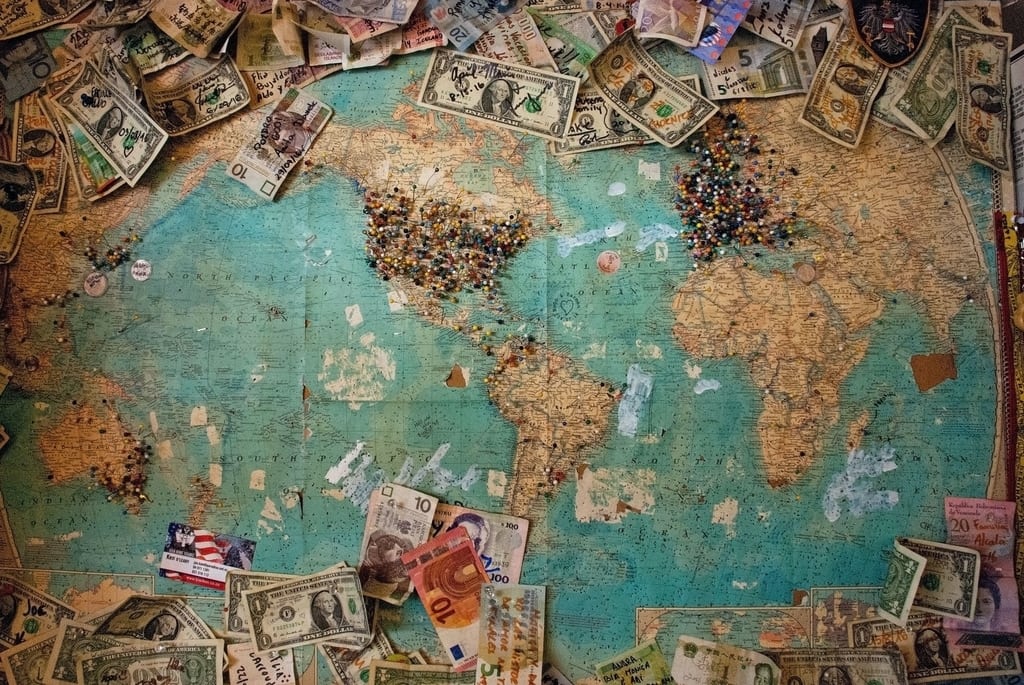
But what’s the purpose of tourism marketing? Well, even though the thought of travelling is attractive enough on its own, many tourism businesses are competing to be the number one tour marketing company for their destination/s.
This is why it’s important to use tourism marketing to promote your business and distinguish it from competitors.
The Tourism Industry & Marketing Trends
Any tour business must be aware of the different tourism types and changing consumer behaviours and travel trends in this industry.
Many years back, people perceived travelling as a luxury that only the influential and wealthy could afford.

Now, we know that there are different kinds of trips suitable for just about every pocket. From budget backpackers to luxury five-star hotel stays, people are becoming more aware of their travel needs and choosing their destinations accordingly.
Considering the rapid changes in the industry, tourism marketers need to understand and keep up to date with these developments and trends. They should also aim to adapt their strategies to cater to these conversions in consumer behaviour.
What Is Tourism Marketing?
Tourism marketing is the term used to describe the different marketing methods and strategies used in the tourism industry.

At its core, tourism marketing refers to a business that aims to attract tourists to a specific location.
The tourism field is multifaceted, so tourism marketing includes airlines, automobile rental services, and hotels and other forms of lodgings. Additionally, it covers restaurants, tours, and travel agents to generate awareness, online sales, and increase consumer acquisition.
There are many ways to do this. But first, it’s essential to understand that the foundation of a tourism marketing strategy is a well-constructed marketing plan. This marketing plan must outline the techniques, processes, and tools a company intends on using to promote tourism.
The Concept of Tourism Marketing
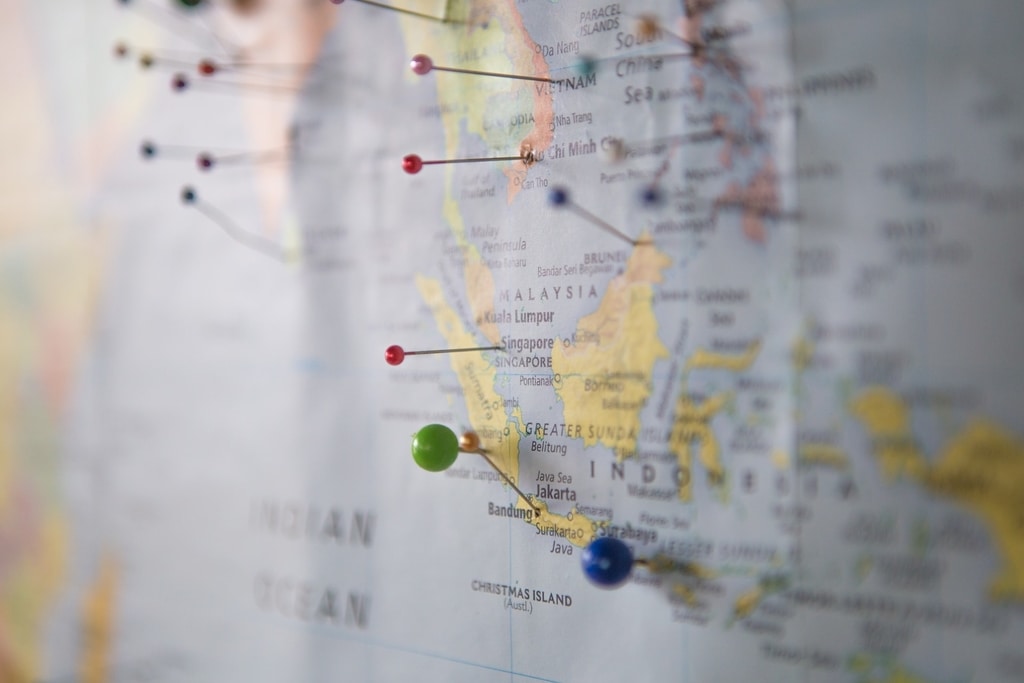
Tourism marketing is known to flourish in places already considered “hotspots” amongst tourists. But, it can also be used in lesser-known places to attract more visitors. One of the critical aspects of tourism marketing is strategic planning to achieve brand visibility, which ultimately leads to brand awareness.
When an enterprise has successfully created a tourism website , it can focus on achieving brand awareness and targeting potential customers. Through tourism marketing strategies and tools, companies can expand on their tourism market.
A successful marketing mix strategy can even help an entry-level travel business become a monopoly in the travel industry.
Why Marketing Tourism Is Beneficial

An essential part of tourism marketing is adopting the appropriate and relevant marketing strategy. Adopting the right plan could help your company maximise revenue and build awareness.
As one of the world’s largest industries, the travel industry is expected to keep growing in the upcoming years. Naturally, because of its demand and expected growth, this industry is highly competitive.
Travel businesses must research, formulate strategies, and think of innovative ways to stand out from their rivals. By using tourism marketing practices and tools, these businesses can promote themselves as the best option for travellers.

The key role is to find a unique selling point and then promote it to reach the masses. But reaching the masses is not enough. Capturing their attention, keeping them engaged (through experiential marketing), and using a content marketing strategy that’s relatable is just as crucial.
So, as part of your marketing efforts, you must keep up with the latest trends and adopt a marketing mix strategy that’s a perfect blend of the best practices and tools.
Different Types of Tourism Marketing
While there are many types of tourism marketing, here are a few major broad types.
1. Location Marketing
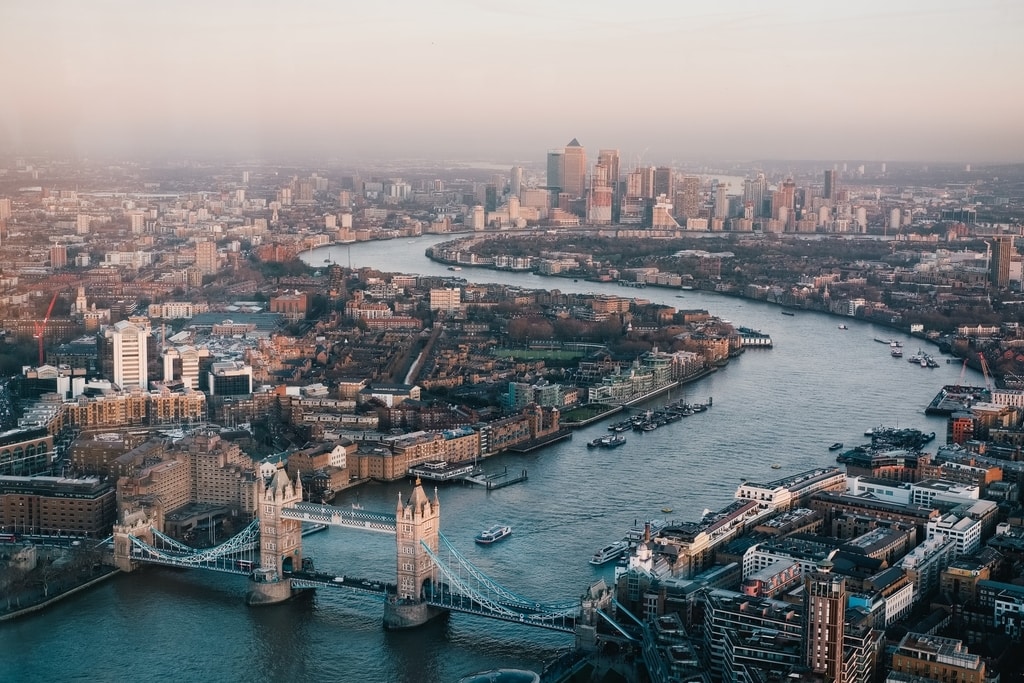
Think of the most popular locations that come to mind when you think of a particular continent or country. For instance, if someone says “Europe”, your mind already conjures up images of the UK, Spain, France, or Italy — even if you’ve never been there. Why is this so?
Destination (or location) marketing strategies are among the most common forms of marketing in travel and tourism. The focus here is to increase customer attention to a specific place. Destination advertisers will highlight an entire location as a travel destination instead of singling out one attraction or accommodation.
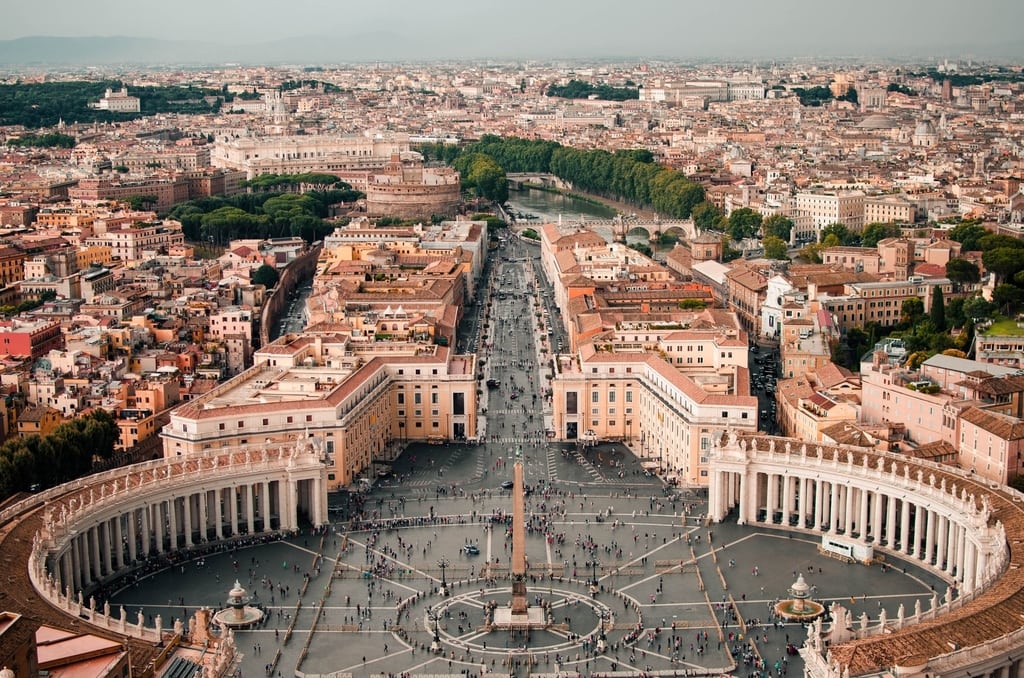
Through this type of marketing, some locations have become so popular worldwide that just the mere mention of their name is enough to elicit a response. For this reason, some travel agencies do, and can, use this type of marketing to remind consumers of these destinations.
2. Activity Marketing
Often, consumers will associate a specific activity with a place that’s already famous for that activity. Switzerland is renowned for skiing, France for vineyards, Yellowstone National Park for hiking and camping, and Alaska for Northern Lights. The list goes on and on.
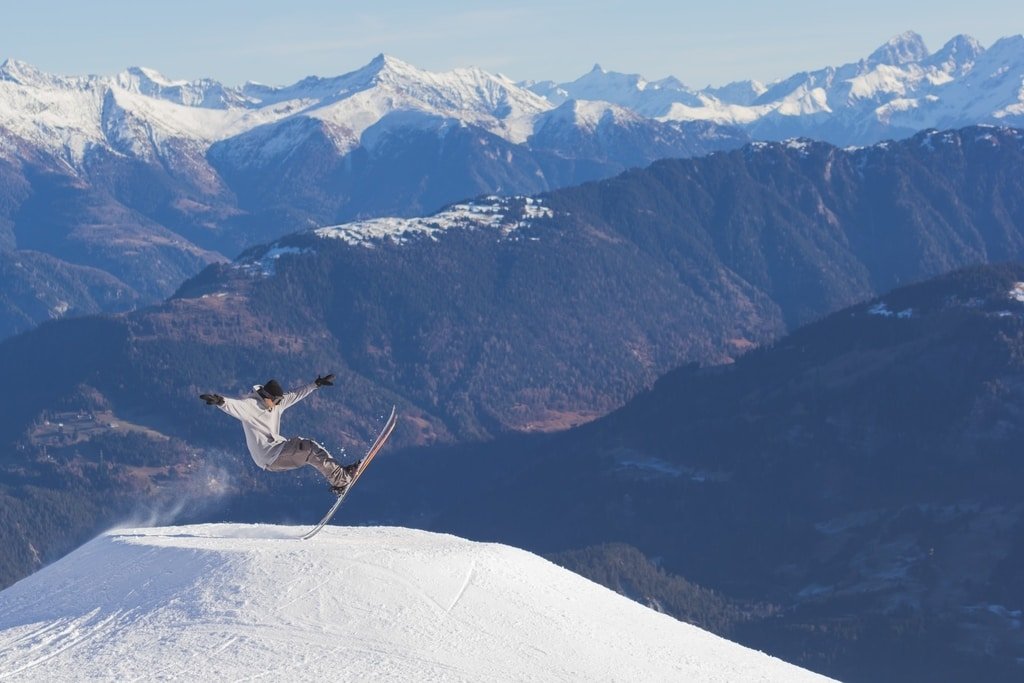
When tourism marketers capitalise (or market) a particular activity in relation to a specific place, it’s called “Activity Marketing”. This type of marketing has a wide range of different kinds of tourist activities it can cater to; like adventure sports, food tours, and art galleries.
Activity marketing is the type of marketing you should adopt if your goal is to highlight a specific thing to do.
3. Corporate Marketing
It’s vital to consider travellers who travel for reasons other than tourism. One of these includes corporate workers who may travel to different places for business purposes.

Imagine a company executive attending a meeting or conference overseas. They wouldn’t then be interested in the activities of a destination.
Corporate marketing emerged as a branch of tourism marketing. In this type of tourism marketing, professionals can highlight places where business events can take place. Through this, they can make touristy places more popular and profit off the large number of corporates who would gather at these spots.
Different Methods of Marketing in the Tourism Industry
Most modern tourism marketing strategies make use of multiple channels to attract consumers. Some of these include emails, SMSes, user-generated content, and websites.

If you want your marketing mix strategy to succeed, it’s best to use multiple channels and tools. Here are some channels you can use to include in your tourism marketing plan:
1. Digital Marketing
Since we’re in the Age of Information and heading towards the Age of Experience , focusing on digital marketing is a must. The travel journey of consumers in this field is centred more on seeking information from trusted sources and experienced travellers.
This is especially true for first-time travellers who plan their trip from thousands of miles away. These travellers will probably spend a couple of hours on each website searching for flight tickets, accommodations, and other touristy things.

Thus, you should focus on building your brand in the digital space to reach your target audience. It’s also good to know that most searchers now use their mobile devices for travel information , either on social channels or through website content (for example, a blog post).
You should ensure your digital marketing strategy is compatible with mobile devices.
2. Social Media Marketing
A part of the digital marketing strategy mentioned above, social media marketing includes establishing your brand on social media. Influencer marketing and user-generated content are practical parts of social media marketing to make your brand seem credible and trustworthy.

If you’re reading this article, chances are you’re just as tech-savvy as most Millennials and Gen Zs today. This also means you probably have a social media account where you may enjoy or create content on travelling.
Many tourists and travellers use social media to look for travel inspiration, accommodation and tour reviews, and hot travel tips. So, to keep up to date with the social era, your enterprise should use a robust social media strategy that showcases your travel products and services.
3. Email Marketing

Email marketing in the tourism sector can be used for many purposes, like loyalty programs, weekly newsletters, or lead nurturing. Through email marketing, brands and companies can continuously contact existing and potential customers to build on their relationships.
A form of direct and digital marketing, email marketing can help you send updates to your target market on your latest products and services. You can also use segmented marketing to collect data on your ideal customers’ preferences and send out highly personalised content they have a higher chance of liking.
Marketing Strategies for Tourism

All this talk about the importance of marketing strategies, but which strategy to adopt and implement? The truth is that there’s no one-size-fits-all formula when it comes to tourism marketing.
You could take inspiration from other marketing companies, but you’ll still have to make some adjustments to the adopted strategy, so it’s suitable for your company. Alternatively, you could start from scratch by conducting market research and then selecting the appropriate tools, methods, and marketing activities.
Tourism marketing strategies don’t have to be boring; they can be just as exciting as their industry.

Firstly, it’s essential to keep up with the latest tourism marketing trends and developments. But that’s not enough, also consider the meaning behind these updates and how they’ll impact your travel business. Here are some strategies and marketing tips you could use for your company’s plan.
1. Don’t Forget Local
The coronavirus outbreak in 2020 led to governments implementing a lockdown that restricted movements in and around countries. Over the months, lockdown regulations eased, with some countries allowing international travel but mainly sticking to local travel only.
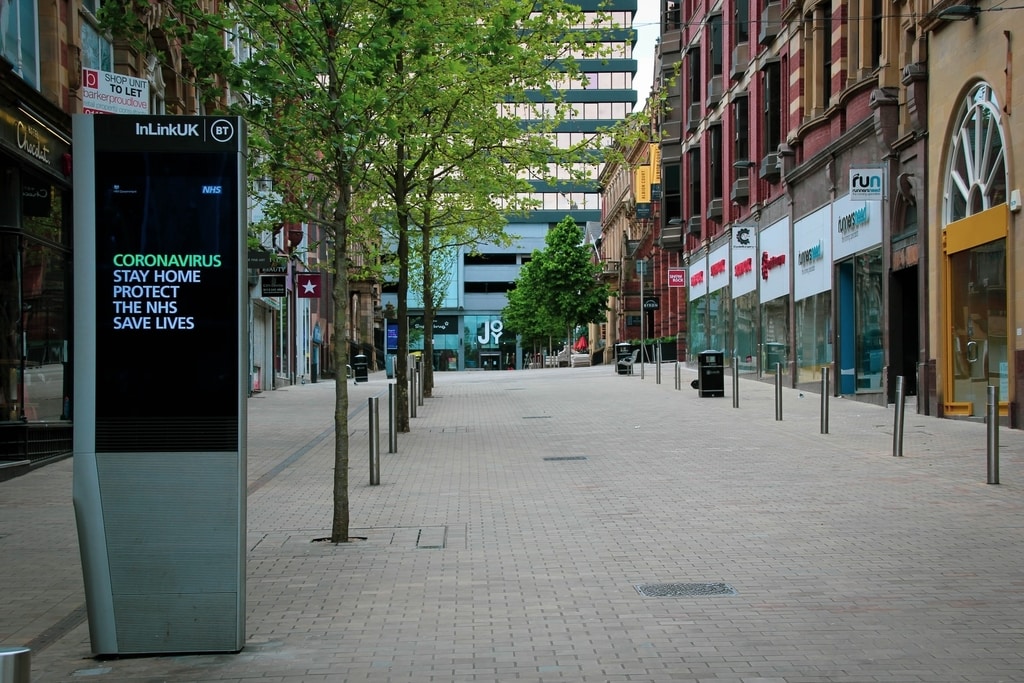
To heal themselves from COVID-19 fatigue, many tourists resorted to touring their own countries. This increased domestic travel, bringing about a new target market.
Destination marketers can then use this to sell the features of their business in such a way that’ll appeal to local consumers. Instead of focusing on weather and famous attractions, highlight facilities, one-day trips, and a site’s ability to host events.
Additionally, emphasise the best hotels, cafes, and bars in an area as this will appeal to locals who are now more attracted to discovering the best of their town.
2. Remote Working

This may sound completely unrelated to tourism marketing, but a result of the pandemic is an increase in remote work.
When many businesses moved to an online working model during the lockdown, the workforce looked for alternate places to serve as their workplace. This created a specific niche of remote workers who turned to hotels and foreign destinations to enjoy work with a different view.
To cater to these business needs, travel marketing companies can create and promote product offerings that appeal to remote workers. Whether it’s a business suite in a 5-star hotel in Dubai or an Airbnb in the forest, the appetite for work-friendly spaces and accommodations is expected to keep growing.
3. Virtual Reality (VR) tours

A part of experiential marketing, Virtual Reality is just one of the many exciting tourism technologies available today. Through VR, tourists and travellers can experience a flight, hotel, restaurant, or attraction from a great distance away.
Easily accessible from a computer or mobile, virtual reality tours provide an opportunity for users to get a sense of an experience that awaits them. By getting a sense of what they can expect, virtual reality tours effectively clear clients’ doubts during the booking process and increase their appetite for travel.
4. Voice Search, Chatbots & Other Technologies

Technology just keeps outshining itself, doesn’t it? Tour operators can use voice search technology to allow customers to make bookings, seek information, and give feedback just by speaking. This makes it easier for mobile users on the go to use your services.
Chatbots allow for quick responses to customers, even when staff members are not available. Using chatbots on your website allows you to communicate with clients 24/7, in multiple languages, and promote your products and services. This can help increase revenue and improve the customer experience.

Other beneficial technologies include contactless payments, cybersecurity measures, and augmented reality. Or, improving your existing digital content through strategies like on-page SEO optimization and content upgrades to rank higher on search engine result pages.
5. Personalisation
Personalisation marketing is a branch of marketing that can be used to create more relevant customer offerings.
This type of marketing can be used with email, social media, and other similar marketing tools. Since modern customers have such individualistic personalities and tastes, personalised offerings appeal more to them.

So, through this marketing, travel companies can capture data (for example, from the company’s Facebook page or website). And then they can use this data to curate customer profiles and offer personalised offerings and future recommendations.
Final Thoughts on the Marketing of Tourism and Travel
Remember that customers don’t just pay for products and services; they pay for the experience they expect to gain from it. The trick is to find your unique selling point and promote it as a comparatively superior experience in your tourism marketing efforts.
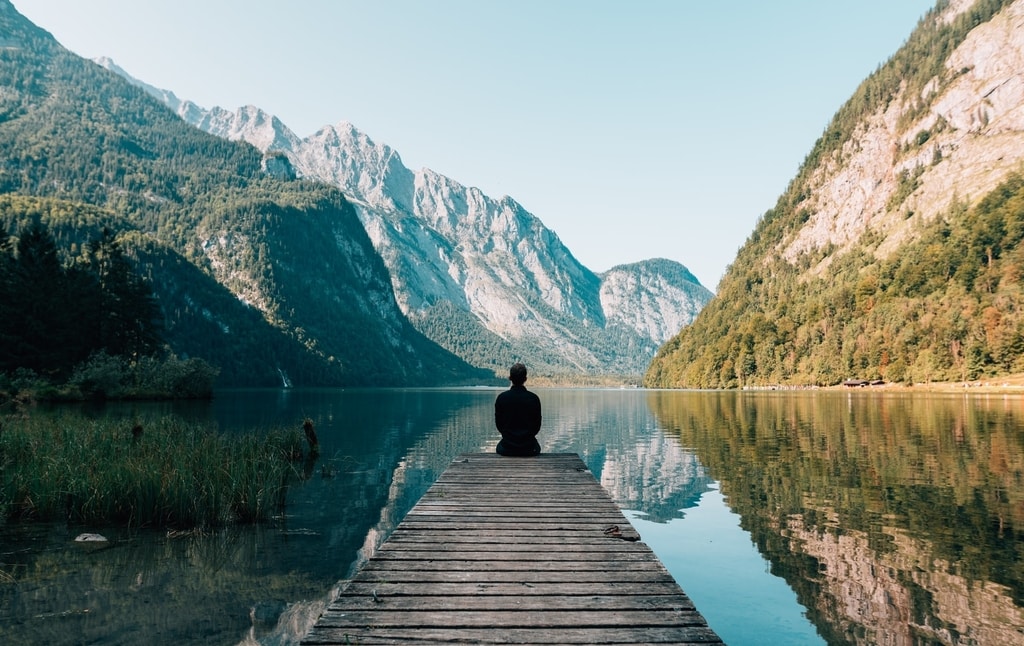
Since so many people love leisure trips, you must aim to make your company or brand stand out as unique compared to other tourism companies in this competitive industry. An effective advertising and marketing strategy can boost brand visibility and awareness for a new audience and the existing customer base.
Hopefully, you found these marketing tips and tricks useful for your tourism business.
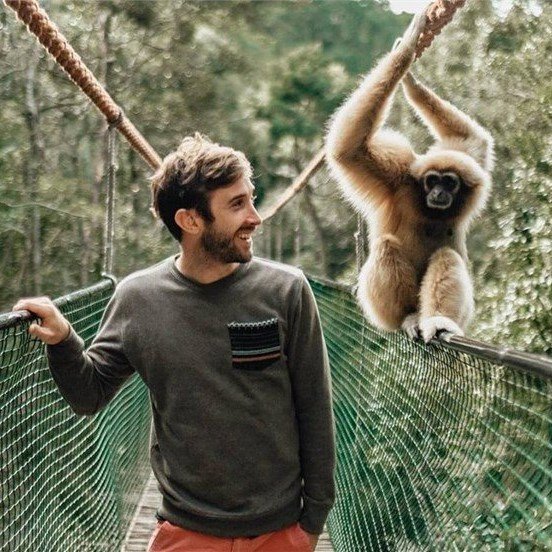
More to explorer

ChatGPT vs Jasper AI | The Pros & Cons of Each AI Writing Tool

9 Common SEO Mistakes You Should Avoid + How to Fix Them

Storytelling in Digital Marketing for Travel Websites
Book a call with an digital strategist.

Cohen’s tourist typology- The 4 major types of tourists
Disclaimer: Some posts on Tourism Teacher may contain affiliate links. If you appreciate this content, you can show your support by making a purchase through these links or by buying me a coffee . Thank you for your support!
Cohen’s tourist typology was one of the first major typologies developed in the travel and tourism space. If you are studying travel and tourism, you will probably be introduced to Cohen’s tourist typology at some point (and that’s probably why you are here now!). If you are wondering what this tourist typology is all about and how Cohen categorised his four major types of tourists, then you have come to the right place… read on….
Who is Erik Cohen?
What is cohen’s tourist typology, cohen’s types of tourists, institutionalised tourists, noninstitutionalised tourists, cohen’s tourist typology- 4 types of tourists, the drifter, the explorer, the individual mass tourist, the organised mass tourist, why is cohen’s tourist typology beneficial, types of tourists- further reading.

Erik Cohen is an Emeritus Professor in the Department of Sociology and Anthropology, Hebrew University of Jerusalem. Erik focuses his research in Social Anthropology, Sociological Theory and Tourism Studies. Erik is most well known for his work on tourist typologies published in the 1970s.

Cohen’s tourist typology is a model that aims to categorise tourists into different types. Cohen’s theory is well known as being the first to attempt to categorise types of tourists. Cohen derived this theory on the types of tourists based on his knowledge of sociology and anthropology and applied it to the context of tourism, he is not necessary a tourism specialist. Cohen’s theory was first published in 1972 in his article entitles ‘Towards a Sociology of International Tourism .
Whilst a lot has clearly changed in the tourism industry since the 1970, Cohen’s tourist typology has continued to be used as a guide for understanding the different types of tourists throughout the years by academics and tourism industry professionals.

The types of tourists identified by Cohen in his typology are based on a continuum- a spectrum that allows tourists to be placed at some point between the familiar and the novel. Essentially, Cohen teaches us that there are many different types of tourists, some who seek familiar experiences (such as familiar food chains, branded accommodation options that they know or languages that they can speak), others who seek entirely new experiences (new cultures, new locations, new languages etc) and those who fall somewhere in between.

In Cohen’s tourist typology there are two groups of tourists- the institutionalised tourists and the noninstitutionalised tourists. Lets take a look at what these are-
Cohen describes institutionalised tourism as the organised mass tourism . This is the tourism industry that is designed to make the tourist experience as smooth and as organised as possible. There are a number of tourism agents involved with institutionalised tourism, such as travel agents , tour operators and tourism resorts. Institutionalised tourists experience novelty with the comforts of the familiar.
Cohen’s noninstitutionalised tourists are the opposite of institutionalised tourists. These types of tourists do not seek the commodified products and services that the mass tourism industry provides, instead, the institutionalised tourist seek deep immersive and experiential travel experiences that cannot be obtained through institutionalised tourism. These types of tourists travel independently and are often in search of adventure, the new and the unfamiliar and authenticity .
Cohen breaks down his tourist typology further, suggesting that there are four main types of tourists:
The first two types of tourists (the Drifter and the Explorer) are deemed noninstitutionalised tourists and the latter two (The Individual Mass Tourist and the Organised Mass Tourist) are examples of institutionalised tourists. Now, lets take a deeper a deeper look at what each of these four types of tourists are…

The Drifter is the type of tourist that is least connected with the mass tourism industry. Drifters typically have an authentic and deep immersive experience, opting for staying with members of the local community rather than in hotels and spending their time in the local community. They seek adventure and plan their own itineraries. This type of tourist always opts for novelty over familiarity- you won’t see a Drifter eating in McDonalds or shopping in Zara!

This type of tourist is similar to a Drifter in that they seek novelty over the familiar, however Explorers do often have a little more interaction with the commodities associated with the tourism industry. For example, an Explorer may travel independently and enjoy an immersive cultural experience, but they may rest their head on a hotel pillow at the end of the day. This type of tourist will generally eat and shop local, but don’t be surprised if they enjoy a Big Mac from time to time too.

In Cohen’s tourist typology the Individual Mass Tourist seeks the familiar. This type of tourist wants familiar food, they want to be able to communicate in a familiar language and they want to stay in types of accommodation that they are familiar with. However, the Individual Mass Tourist is not constrained by the likes of group tours and activities- yes, they may book their holiday through a travel or use a local tour guide, but they will typically opt for solo travel over group tours.

The last of the types of tourists outlined in Cohen’s tourist typology is the Organised Mass Tourist. The Organised Mass Tourist seeks the familiar in the same way that the The Individual Mass Tourist does, however, they tend to do this as part of an organised group. This type of tourist seeks the familiar over novelty every time and they are often found with tour guides and undertaking group tours. The Organised Mass Tourist will generally have an itinerary or a plan and they will stick to it.
Whilst we can easily criticise this theory for being too generalised and for accounting for the specific and the individual, there is no questioning that it does have real-world value. By better understanding the different types of tourists tourism businesses and tourism industry stakeholders can better provide for the tourists- they can tailor their products and services better, they can understand the tourist demands and desires and they can help to improve the overall quality of the tourism provision that is offered to particular tourists.
There are many academic studies which utilise Cohen’s tourist typology as a means to understanding particular issues within the tourism industry, you can see one example here .
If you have found this article helpful, you may also enjoy these-
- Butler’s Tourism Area Life Cycle Model: A simple explanation
- Leiper’s Tourism System: A simple explanation
- 150 types of tourism! The ultimate tourism Glossary
- The mass tourism industry EXPLAINED
Liked this article? Click to share!
- Architecture and Design
- Asian and Pacific Studies
- Business and Economics
- Classical and Ancient Near Eastern Studies
- Computer Sciences
- Cultural Studies
- Engineering
- General Interest
- Geosciences
- Industrial Chemistry
- Islamic and Middle Eastern Studies
- Jewish Studies
- Library and Information Science, Book Studies
- Life Sciences
- Linguistics and Semiotics
- Literary Studies
- Materials Sciences
- Mathematics
- Social Sciences
- Sports and Recreation
- Theology and Religion
- Publish your article
- The role of authors
- Promoting your article
- Abstracting & indexing
- Publishing Ethics
- Why publish with De Gruyter
- How to publish with De Gruyter
- Our book series
- Our subject areas
- Your digital product at De Gruyter
- Contribute to our reference works
- Product information
- Tools & resources
- Product Information
- Promotional Materials
- Orders and Inquiries
- FAQ for Library Suppliers and Book Sellers
- Repository Policy
- Free access policy
- Open Access agreements
- Database portals
- For Authors
- Customer service
- People + Culture
- Journal Management
- How to join us
- Working at De Gruyter
- Mission & Vision
- De Gruyter Foundation
- De Gruyter Ebound
- Our Responsibility
- Partner publishers

Your purchase has been completed. Your documents are now available to view.
4. Tourism and Market Structure
From the book tourism economics and policy.
- Larry Dwyer , Peter Forsyth and Wayne Dwyer
- X / Twitter
Supplementary Materials
Please login or register with De Gruyter to order this product.
Chapters in this book (25)
The different types of Tourism according to Cohen, UNWTO, motivation and type
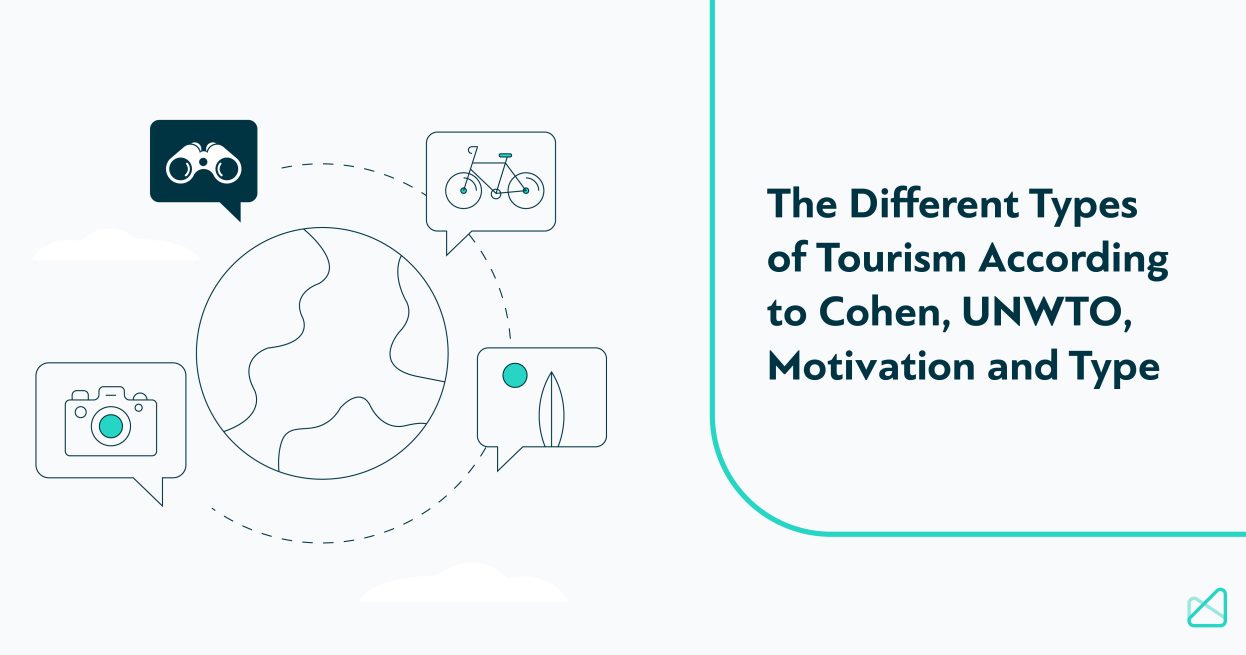
Types of Tourism according to the UNWTO
Types of tourism according to cohen:, types of tourism according to motivation, types of tourism according to type and purpose of the trip.
The Tourism industry has a direct impact on the global economy. In 2019 alone, 1.4 billion international arrivals were recorded, which is equivalent to one-fifth of the world’s population .
Due to the number of components that play an active role in tourism, there are an infinite number of criteria that can be used to classify it. In this article we will share what we consider to be the most significant of these criteria.
The World Tourism Organization defines three basic types of tourism in its glossary :
- Domestic Tourism : these are the activities carried out by a person within their country of residence as part of a touristic trip.
- Inbound Tourism : carried out by a non-resident tourist in the destination as part of a touristic trip.
- Outbound Tourism : tourism activities undertaken outside the country of residence.
These types can be combined with each other to give rise to other categories:
- Internal Tourism : combines domestic and inbound tourism, as it encompasses the activities that both foreigners and nationals undertake within the borders of a country.
- National Tourism : Combines domestic and outbound tourism, as it involves trips made by residents of the same country both within and outside its borders.
- International Tourism : carried out both by residents outside their country of residence (outbound) and by foreigners within the borders (inbound).
Beyond this categorization, there is a sociological approach, in which Erik Cohen, sociologist and winner of the UNWTO Ulysses Prize for his contribution to the knowledge of tourism, defines different types of tourism associated with the organization of the trip, as well as the nature of the interaction with the destinations.
Institutionalized
- Individual mass : this is the tourist who goes to an agency in search of a tourist package. They make individual trips, taking advantage of the destination’s infrastructure established for mass tourism.
- Organized mass : these travelers take organized tours where all the details are covered and there are no surprises of any kind. It is usually family tourism without any major variations.
Non-institutionalized
- Drifter : this is the independent tourist who backpacks. They do not depend on the infrastructure and have little influence on the destination, as they interact with the environment and usually integrate with it.
- Explorer : This is the tourist who seeks new experiences, often extreme. The definition they use is “off the beaten track.” They prioritize the experience and can sacrifice comforts.
Cohen also proposes a division based on the importance of travel in people’s lives . There are five types of experience:
- Fun or recreational tourism
- Distraction tourism
- Experiential tourism
- Experimental tourism
- Existential tourism
Valene Smith, a key figure in the Anthropology of Tourism, defines in her introduction to “Host and Guest” the following types of tourism, according to the motivation of the trip:
- Recreational
- Environmental
And later she expands the classification according to Tourist types , where she describes:
They engage with the destination environment and are willing to adapt their behavior to the environment. They choose to visit less-traveled places and do not want to be seen as tourists.
Elite tourists
They also travel in small groups and adapt to local life, but for a limited time. They demand more amenities.
Off-beat tourists
These are independent tourists who break away from traditional itineraries and are looking to see new places. They use guidebooks for tips.
Unusual tourists
They travel on package tours or tours to visit indigenous communities. Their interest in local cultures is contemplative, and they demand the comforts of modern life so as not to take risks in the exchange.
Incipient mass tourists
Although not large in volume, these groups are beginning to demand infrastructure in the destinations they visit.
Mass tourists
They do not forgo the comforts of their country of origin and expect to be served in their own language.
Charter tourists
They purchase tours for short periods of time, demand high-quality services and have almost no interaction with the local environment.
There are infinite approaches and classifications for tourism around the world. A study by the Inter-American University for Development (UNID) makes an interesting distinction between “Classification” and “Typology” in which it defines eight kinds of tourism according to their form, which can, in turn, be subdivided into types.
Beyond these broad approaches, there is a series of categories approved by the UNWTO that is defined by the destination and purpose of the trip , and can be summarized as follows:
Rural Tourism
This takes place in destinations with low population density where agriculture and forestry are prevalent. The main objective is to experience nature, culture and productive activities.
- Angling tourism
- Observation tourism
The core element is responsible contact with the natural environment, where the tourist observes and carries out activities in the open air.
- Bird watching
- Observation of autochthonous species
Adventure tourism
Tourism in contact with nature, involving physical dexterity to undertake activities that are generally carried out in the open air.
- Scuba diving
- Sport fishing
Cultural Tourism
This takes place in destinations that have a remarkable cultural heritage and preserve its value. The objective is to discover and enjoy these values and traditions.
- Field trips
- Artistic performances
- Festivals or other cultural events
- Visits to sites and monuments
- Folklore
- Art
Business Tourism
Regardless of the destination, the reason for the trip is business or professionally motivated. This type of tourism entails a specific approach, as it is carried out by demanding travelers, with little time and particular needs.
- Attending conferences and congresses
- Attending Trade Fairs and Exhibitions
- Other professional and business reasons
Gastronomic Tourism
The trip must involve culinary experiences in the destination, which can range from enjoying a meal to learning how to cook.
UNWTO notes the high potential of this category as a sustainable activity to boost the development of local economies and promote inclusiveness.
A growing trend worth highlighting is Wine Tourism.
Coastal, Maritime and Inland Water Tourism
Includes all water-related activities. The most prominent category is Sun and Beach Tourism . However, the following should not be overlooked:
- Inland river navigation
Urban Tourism
This tourism takes place in a non-agricultural economic environment. Urban destinations offer a wealth of experiences related to art, architecture, commerce, social activities and good transport connectivity
Health tourism
Relates to the physical, mental or spiritual health benefit that travel can offer, provided by specific activities.
- Medical tourism
- Wellness tourism
- Spiritual tourism
Mountain Tourism
The nature of the trip is determined by the relief of the destination. It is not related to adventure sports, but to enjoying the attributes of the environment.
Educational Tourism
The objective is focused on acquiring new skills and knowledge.
- Exchange trips
- Language courses
- Tours for school groups
Sports Tourism
This is aimed at those who are going to enjoy or watch a sporting activity.
- Attending the Football World Cup
- Attending the Olympic Games
- Sports Delegation Trips
Each category will also be defined according to the needs and possibilities offered by the tourist destination, but in principle it is important to be able to sustain a basic classification in order to guide the statistics and to be able to work on comparisons and equivalences, depending on the focus we are addressing.
Bibliography
Erik Cohen , Major trends in contemporary tourism . Department of Sociology and Anthropology. The Hebrew University of Jerusalem, 2004
Erik Cohen , The sociology of tourism: Approaches, issues and findings. in Annual Review of Sociology, 10,373-392., 1984
Smith, Valene , Hosts and guests. The anthropology of tourism . Philadelphia, University of Pennsylvania Press, 1989.
Subscribe to our newsletter
Yay you are now subscribed to our newsletter.
Cristóbal Reali, VP of Global Sales at Mize, with over 20 years of experience, has led high-performance teams in major companies in the tourism industry, as well as in the public sector. He has successfully undertaken ventures, including a DMO and technology transformation consulting. In his role at Mize, he stands out not only for his analytical and strategic ability but also for effective leadership. He speaks English, Spanish, Portuguese, and Italian. He holds a degree in Economics from UBA, complementing his professional training at Harvard Business School Online.
Mize is the leading hotel booking optimization solution in the world. With over 170 partners using our fintech products, Mize creates new extra profit for the hotel booking industry using its fully automated proprietary technology and has generated hundreds of millions of dollars in revenue across its suite of products for its partners. Mize was founded in 2016 with its headquarters in Tel Aviv and offices worldwide.
Related Posts

30 Most Important Travel Industry Events for 2024
30 min. Social share: 2024 is packed with must-attend travel industry events. Stop by to discover all relevant events conveniently grouped by continents with listed dates, themes, and locations! Many travel industry experts believe that travel industry events play a pivotal role in shaping the future of the travel industry. Why is this so? It’s […]

Empowering Equality: Mize Leads the Way in Travel Technology
7 min. Are we all equal? Are we all equally represented in the business world? In some professional sectors, there might still be some under-representation of women, minorities, and the LGBTQIA+ community. The tech sphere is no different, but is the travel tech sector a spark of hope? As the business world becomes more diverse, […]
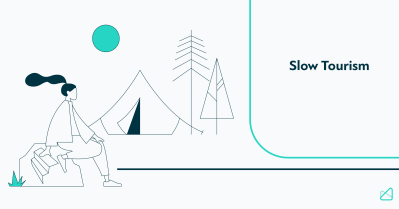
Slow Tourism Case Studies: Examples to Truly Understand Slow Tourism
14 min. The tourism industry is moving at an ever-accelerating pace. That’s because the tourism industry is perhaps one of the verticals that depend on the most factors. One of the main factors that affect it is social movements, given that tourism brands of all sizes always cater to the needs of consumers. One of […]
Marketing91
What is Tourism Marketing? 15 Strategies in 2023
March 22, 2023 | By Hitesh Bhasin | Filed Under: Marketing
From hotels and other types of accommodation to car rental services, airlines , restaurants, entertainment spots, and travel agents – tourism marketing encompasses a wide range of advertising and marketing strategies often used by companies in the tourism and travel industry themselves. All these various marketing efforts are put together under one collective name – Tourism Marketing!
Tourism marketing is an essential tool for a business to ensure they are standing apart from its competitors, garnering customers, and creating brand recognition. Nowadays, various digital marketing platforms such as websites, online ads, email marketing campaigns , and social media marketing outlets have become vital components of modern tourism marketing initiatives for businesses.
Table of Contents
What is Tourism Marketing?
Tourism marketing is a type of marketing used by businesses operating in the travel and tourism industry to attract tourists to a business name or particular location which can be a state, a city, a particular heritage site or tourist destination spot, a hotel, or a convention center anything.
Achieving success in the travel and tourism industry requires thoughtful Tourism Marketing campaigns that are designed to generate brand awareness , create both, reach the most target audience or potential customers, drive traffic, foster loyalty among existing clients, and create a captivating customer experience . By utilizing these strategies, businesses can effectively engage with travelers while generating more sales opportunities.
Tourism Marketing has been profoundly impacted in recent years by digital development, as well as changes in consumer attitudes and desires. Crafting successful Tourism marketing messages today entails taking advantage of social media platforms, featuring user generated content, leveraging online reviews and search engines to your benefit, collaborating with influencers to drive traffic and expand reach, and experimenting with various channels for targeted messaging to attract travelers and optimize their customer journey in a way to convert them into loyal customers.
Why is Tourism Marketing Important?
To make a tourism business thrive, savvy marketing is an absolute must. By staying up-to-date with current trends and launching impactful campaigns, businesses can boost the recognition of their brand, gain customer loyalty and attract travellers. Moreover, tourism marketing holds promise for contributing to the economic growth of the region by driving tourists towards local enterprises.
The tourism industry is one of the biggest in the world and therefore highly competitive. To succeed, businesses must differentiate themselves from their competitors by promoting and advertising what makes them unique, showcasing why they’re the best option for tourists, and advertising and highlighting any special features that set them apart.
To allow businesses to gain a competitive advantage , marketing is essential. Many of the top tourism marketing approaches concentrate on highlighting a business’ unique selling point and broadcasting it effectively. Moreover, marketers must keep abreast with current trends to generate an effective promotional mix and deploy the most viable methods for disseminating their message across all channels.
Understanding the concept of Tourism Marketing
Tourism marketing is associated with most businesses, with marketing strategies in the field of tourism. Today there are many countries in the world, where the tourism industry plays a major role in economic development , enhancing their GDP.
In such cases, tourism and digital marketing become important things. Many of the places are generally the hotspot for tourists like the Taj Mahal in India. Now places like these are considered the perfect areas where one can boost tourism through digital marketing.
The places which are more likely to be the major spots for attracting tourists are the places where tourism marketing flourishes the most. Now tourism marketing is all about applying several marketing techniques and strategies to create and boost the tourism industry of that place.
For successful tourism marketing to take place, the thing that is required the most is that the brands should speak for themselves in such a way that makes sense that their voices can be heard in the targeted markets. This way they will be able to generate the cleanest successfully. Also, they need to be really careful in providing services to clients.
This is because if the customers are happy with the services chances they will spread the word and this may bring them more customers. In the case of tourism marketing, it becomes easy to find the right audiences and create content to draw the attention of the targeted customers to the website by providing encouraging content. Thus strategic planning , content marketing, and branding is the key to effective tourism marketing.
With it being carried out by keeping these two points in mind, chances are that the company that is involved in tourism marketing will be able to gain the advantage over their existing customers in no time and become a monopoly in the tourism industry.
What are the different ways in which Tourism Marketing Can Be Done in 2023?
Now various methods are applied for tourism marketing to flourish. Below are some of the important ways in which the tourism marking of any place is given a boost.
1) Location marketing
In this type of marketing strategy , the main focus of tourism marketing is one bringing people’s attention to a specific location. In this strategy , no recommendations are made with respect to a particular site or any accommodation. Now some locations are already so popular all over the world that tourism marketers don’t have to make many efforts to attract their attention to such places.
All they need to do to attract customers is remind them of such locations and chances are that the consumer can easily get convinced to spend money and visit any such place. For example, Las Vegas is popular for its undying charm and full of life kind of prospects.
Now there s also a popular slogan related to Las Vegas which is ‘What happens in Vegas, stays in Vegas’. This slogan has gained worldwide popularity and almost everyone wants to visit Las Vegas at least once.
So here the tourism marketers have to simply remind people of how amazing this city is and what are the different ways in which they can have the time of their lives here. Another example that can be taken in Florida.
They use a more ‘benefit-oriented’ approach. Their slogan and website are ‘The Sunshine State’. This way they are presenting their state with a joyous and charming climate and as a perfect place for beach and football lovers. Also with their slogan and website, they are successfully able to present their state as an ideal ‘summer vacation’ destination and are definitely a dream for many to visit this place.
Thus location marketing is one of the simplest forms of tourism marketing in which without even putting much effort, with the brand value and the popularity of some specific location, the customers can be attracted.
2) Activity marketing
Now, this type of tourism is carried out keeping in mind both the location and the activities that are performed in such places. This type of tourism marketing strategy usually keeps in mind travelers who are adventure lovers or activity freaks.
There are many other sites and locations all over the world that are famous for some specific activities. Like Alaska is famous for snowboarding, Yellowstone national park is famous for thrilling activities like hiking, and camping and is a perfect place for all nature lovers, similarly, there is ‘Colonial Williamsburg’ which attracts all history lovers.
Thus depending on the target audience and the type of activity that a particular place is famous for, tourism marketing can be carried out. Some people may be adventure lovers, some people may be looking for art and culture some people love hunting, depending upon their area of expertise and interest, the tourism markers can segment the groups of potential visitors and customers and approach them.
Thus activity marketing is a form of tourism making and social media marketing that emphasizes the booking process and bringing the attention of a customer to particular places on the basis of the activities that are performed there.
3) Corporate marketing
This is quite an interesting approach to tourism marketing. Now it has been found that a large number of people working in corporate sectors have to travel to different places to attend a conference or a meeting.
Then according to research, it was found these locations were ideal for tourists, and a number of people came to attend those places. Also, they brought their families and their loved ones as well. Now considering these scenarios’ latest trends in mind, corporate influencer marketing can contribute a lot to tourism marketing as it has significant potential.
Here the tourism marketers take advantage of the fact that by planning the business meeting in touristy places, people come in large numbers thus they can make a lot of profit out of it.
What are the four basic pillars of Tourism Marketing?
The foundation of tourism marketing stands firmly on four of its important pillars which are the product , the price, the place, email marketing, and the promotion.
Let us understand each of these separately as to how they contribute to tourism marketing!
Marketing Mix of Tourism
1) product in tourism marketing.
One of the most important aspects of the tourism marketing strategy is to determine the effect of the selling benefits and the other types of benefits that are re-obtained by competing with their rivals in the same market .
Tourism marketers need to focus more on such destinations that provide both business advantages to travel brands and pleasure to their customers. These pleasures depend on several factors like the ease of traveling, facilities of the sites and the hotels, the nightlife of that place, activities offered, and the overall culture of that place.
Thus by considering these factors, tourism marketers will understand the areas that have to focus more on, so that marketing can be done effectively.
2) Price in Tourism Marketing
The price point is yet another important aspect of tourism marketing. Now many people avoid traveling due to money-related issues. And this is where tourism marketing comes in to save the day. Today so many mobile apps have been developed, on which if a person books a hotel r a transport like a flight or a train, they get discounts. This attracts a lot of customers.
Along with the free referral marketing, they also try to give value-added services to their customers. Some hotels also offer free shuttle services to their visitors. Also depending on whether it is a high season or an offseason, the prices are altered.
3) Place in Tourism Marketing
Now for tourism marketing to earn a profit, deciding the location where they want to perform the marketing can play a key role in how far they can go. The place refers to the area where the products and services can be distributed.
Now in tourism and destination marketing, the location and the destination marketers offer their products and services to their customers through travel agents, tour operators, inside sales teas, etc. The distribution of their products and services to visitors can be done through catalogs, online, sites, mobile devices, websites, stores, etc.
4) Promotion
In this numerous different strategies and technologies are used for the promotion of any specific area or tourist destination. In fact, trade magazines and meeting planners are also efficient ways for promotion purposes.
These often come with many other forms of discount coupons, brochures, etc. also they try their target customers to come across the ads that pop up on the website to make them aware of the various tourist places.
15 Tourism Marketing Strategies in 2023
1. prioritising hygiene and safety via marketing communication.
Tourism marketers must now prioritize safety and hygiene to give their customers peace of mind when they travel. By highlighting the protocols that are being taken, tourists can rest assured knowing they will be protected while visiting.
2. Developing Loyalty Programmes
Loyalty programs are the ideal way to demonstrate your appreciation for existing customers and stimulate repeated patronage. Tourism marketers should construct loyalty programs that will not only retain existing customers but also appeal to fresh audiences.
3. Capitalising on Voice Search
In the age of voice search, it is essential for tourism marketers to create content that can be quickly found and accessed. Optimizing your site and content for this new technology will bolster your site for visibility and success in the long term.
4. Facilitating User-Generated Content
User-generated content, such as ratings and reviews on social media, is critical in helping customers make informed decisions. User-generated social media content is one of the key tourism marketing trends.
5. Deploying Artificial Intelligence:
AI technology is a valuable asset for Tourism marketers, allowing them to track customer behavior and create personalized brand experiences tailored to each individual. This can help customers find the brand information they need quicker and more easily than ever before.
6. Not Neglect Review Marketing
Reviews and ratings are a critical resource for Tourism companies, making them an invaluable asset in swaying potential customer decisions. Any Tourism marketer must recognize the importance of reviews if they wish to stay competitive.
7. Enhancing the Guest Experience & Satisfaction Through Chatbots
Chatbots can be a vital tool in creating an effortless, tailored experience for all customers. Chatbot technology should be a top priority for the hospitality and tourism industry to provide quick customer service and support, as well as respond promptly to any inquiries.
8. Investing in Remarketing Efforts
Maximizing your Tourism business’ potential by tapping into already engaged customers is a surefire way of increasing sales. Leverage the power of remarketing to maximize your potential and gain more qualified leads.
9. Utilising Augmented Reality Technology
Augmented reality provides the ideal platform for tourism businesses to build mesmerizing and unforgettable experiences for their customers.
10. Prioritising Personalisation
Customization is a crucial element of this form of marketing. By personalizing content and messages to the target audience’s wants and needs, Tourism marketers can engineer and create an experience that will ensure positive word-of-mouth publicity for their business or brand.
11. Exploring Metaverse
The metaverse is becoming more and more popular with tourism companies, as it allows them to give their customers an unparalleled, immersive experience.
12. Using NFTs
Non-fungible tokens, or NFTs, are quickly becoming a widely recognized trend. Tourism companies can harness this technology to propel their marketing campaigns and draw in more visitors.
13. Promoting Virtual Reality (VR) Tours
Allow your customers to explore new destinations without even having to leave their homes – with VR tours, the possibilities are endless!
14. Focusing on the Customer Experience
Crafting an exceptional customer experience should be the primary focus of any Tourism promotional strategy . Optimizing customer experiences on all marketing channels is crucial.
15. Embracing content and influencer marketing
Content and influencer marketing are essential building blocks of any successful tourism strategy. It helps in optimizing the presence of a travel business in the search engine.
Thus, tourism and travel agency marketing are one of the branches of marketing that deal with the tourism and travel industry only.
It is essential to carry out efficient tourism marketing, as one can make a lot of money through this because there are so many people in this world who love traveling, and this can help the tourism marketing industry to flourish their business.
Liked this post? Check out the complete series on Marketing
Related posts:
- 15 Promotional Strategies to Use in 2023 (Types, Steps & Role in Marketing)
- What is B2B Marketing? A Comprehensive Guide with Strategies, Examples & Trends in 2023
- Database Marketing – Definition, Types, Importance and Strategies
- One-to-one marketing: Definition, Examples and Strategies
- What Is Affinity Marketing? Definition and Strategies for Success
- What is Consumer Marketing? Definition, Strategies & Example
- What is Offline Marketing? Strategies and Advantages
- Trade Marketing: Definition, Strategies, Advantages, Disadvantages
- Luxury Brand Marketing – Concept and Strategies
- Healthcare Marketing – Definition, Strategies and Challenges
About Hitesh Bhasin
Hitesh Bhasin is the CEO of Marketing91 and has over a decade of experience in the marketing field. He is an accomplished author of thousands of insightful articles, including in-depth analyses of brands and companies. Holding an MBA in Marketing, Hitesh manages several offline ventures, where he applies all the concepts of Marketing that he writes about.
All Knowledge Banks (Hub Pages)
- Marketing Hub
- Management Hub
- Marketing Strategy
- Advertising Hub
- Branding Hub
- Market Research
- Small Business Marketing
- Sales and Selling
- Marketing Careers
- Internet Marketing
- Business Model of Brands
- Marketing Mix of Brands
- Brand Competitors
- Strategy of Brands
- SWOT of Brands
- Customer Management
- Top 10 Lists
This was a great article! Now I’m interested in a career in tourism marketing. How do I start? I already write travel content/copywriting blogs for an agency. Where would I go from there?
this article really helped me in conducting research on tourism. Thank you very much
This article helped me alot on my academic research
Hello,the article is highly assisting and I am seriously having interest in studying Tourism Marketing.
This information was very helpful
hey! This is a good and interesting article about tourism marketing. I am a second degree student in tourism business administration,the program is all about tourism as a business perspective.if you can possible,please post such relevant articles via email address that i have attached below the space provided.
Leave a Reply Cancel reply
Your email address will not be published. Required fields are marked *
- About Marketing91
- Marketing91 Team
- Privacy Policy
- Cookie Policy
- Terms of Use
- Editorial Policy
WE WRITE ON
- Digital Marketing
- Human Resources
- Operations Management
- Marketing News
- Marketing mix's
- Competitors

4 Digital Marketing Strategies for B2B Companies
How to write a marketing plan in 9 steps, 5 marketing strategies for events, 4 keys to using instagram for businesses , 5 keys to master sms marketing.

- Acquisition
Tourism Marketing: 4 Strategies to Attract More Tourists
[covid-19] to help mitigate covid’s impact on tourism businesses , kolau is waiving the cost of creating a forbes award-winning website with e-commerce enabled., create your website quickly and easily clicking here – offer available for a limited time only..
?blog_origin=blog-
If you are in the tourism and hospitality industry and are looking to boost your business and increase your bottom line, a better marketing strategy can help. Whether you own a hotel, restaurant, travel agency, or a transport company there are things you can do to help gain visibility, attract customers, and build a loyal following. These four tourism marketing strategies can help you figure out the best way to enhance your business and stay present in the industry.
The travel and tourism industry is one of the largest in the world and has experienced stable growth over the last five years. It’s also a very fragmented industry. According to a report by IBISWorld , it’s estimated that the four main companies in this industry represent less than 10 percent of the total market share.
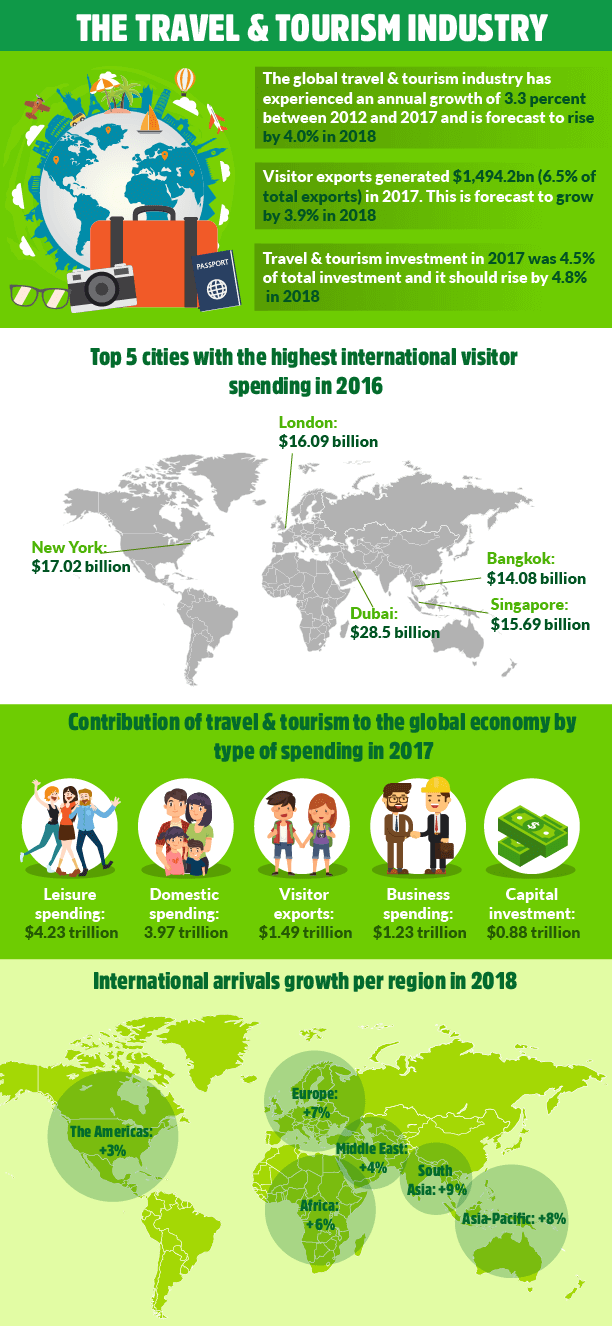
Many segments of the industry are dominated by small businesses and this facilitates access to all those who wish to build their own business. Given this opportunity, implementing the right tourism marketing strategies is crucial to stand out from the competition and to establish yourself as an authority in the industry.
With all the available opportunities for growth and development, creating a solid marketing plan with the four following strategies can be your key to success and the difference between breaking even and making a profit.
#1 Apply storytelling on your social media posts
According to HubSpot , consumers today (among them, tourists) process more than 100,500 digital words a day. Every time they want to know something they ask Google and they can compare prices instantly in three clicks. It’s not that everyone wants to ignore your marketing messages, but given a large amount of information they are exposed to, it’s inevitable that your efforts can get lost in the shuffle. Therefore, it’s necessary to find new ways to communicate to get their attention and get them to interact with your brand .
In a TED Talk , Simon Sinek, founder of Start With Why, said:
People don’t buy what you sell, they buy why you sell it.
When designing your marketing messages on social media it’s not effective to only describe the characteristics of the products or services you offer.
To effectively capture the attention of your target audience and generate more engagement, tell them why your service is made for them while also explaining what they will experience if they decide to buy your product or use your service.
In this sense, stories have enormous power. They generate empathy, transmit confidence, are easy to remember and, most importantly, are easy to share. Storytelling is a technique that allows you to link your product or service with a concrete, symbolic and emotional experience through a story and take advantage of its full potential.
When coming up with stories about your business, try to link them to your product or to the daily activities of your business in subtle ways and put them in your company’s social media posts.
Here are some examples of tourist establishments that use this technique in their Instagram, Facebook and Twitter posts:

If your content on social media doesn’t get “likes” or isn’t shared on Facebook or similar platforms, another proven resource that can help you is creating a mascot or character associated with your brand that acts as the protagonist of your stories.
For example, the travel company Travelocity has associated a traveling gnome with their brand. He appears as the protagonist in several of their publications. In addition, this travel company has created additional social profiles for the character including a fan page on Facebook, a Twitter account and an Instagram account through which they offer exclusive discounts to their followers.
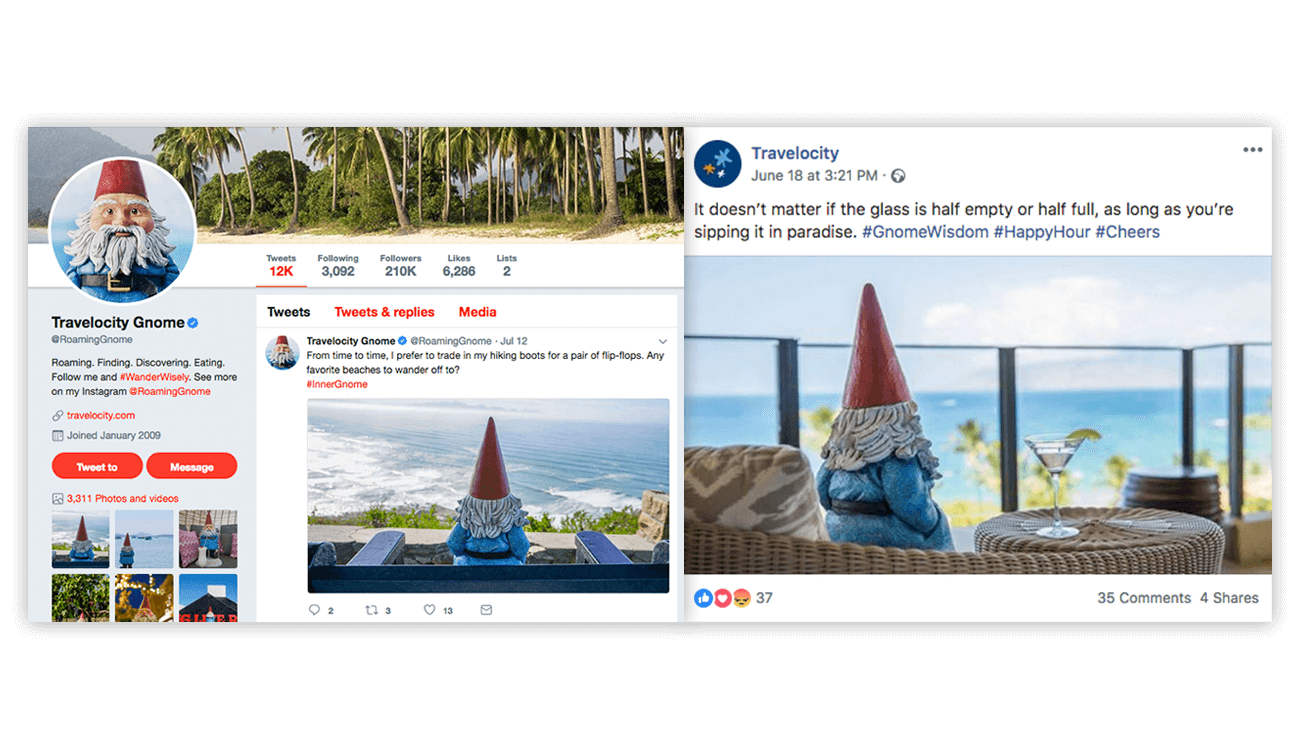
In this way, they manage to promote their trips in an entertaining way that captures the attention of the users, generates engagement and manages to create a community of fans around their character and, therefore, around their brand. On Twitter alone, they’ve got more than 210,000 followers.
#2 Use augmented reality to offer memorable experiences
Within the tourism sector, offering an incredible experience is essential to get customers to remember you, recommend your brand or use your service again. Using new technologies such as augmented reality in your marketing strategy can help you create innovative and memorable experiences for your visitors and, at the same time, differentiate yourself from your competitors.
If you’re not familiar with the term augmented reality, TechTerms provides a very simple definition:
Augmented reality, commonly abbreviated as “AR,” is computer-generated content overlaid on a real-world environment.
Surely you’ve heard of Pokémon Go , a mobile augmented reality game whose launch in 2016 was a massive success. This game uses the GPS of your mobile to locate, capture and engage in battles with virtual creatures (Pokémon). By activating the camera, players can see these creatures through the screen as if they were in a real location. This is augmented reality.
The potential of this technology in the tourism industry is enormous and many tourist establishments are already using it to offer different experiences to tourists. According to a Zenith analysis , in 2018 the pervasiveness of smartphones will reach 66 percent, which means that more than half of the world uses a smartphone.
Hotels were one of the first industries to apply this technology to their marketing actions. For example, the Casa Madrona Hotel in New York used this technology to show tourists walking the street the impressive balcony views of one of its 360-degree suites, as you can see in the following video:
Augmented reality also offers great possibilities for the transportation industry . With a travel app with augmented reality, you could point the camera to a transport vehicle and discover your route, the next stop and places of interest you pass through, something very useful if you are a foreigner.
For example, the transport company, Tunnel Vision , created an app that transforms the New York subway map into an interactive guide in different languages, as you can see in the following video:
According to an analysis of augmented reality published in Harvard Business Review , the three elements that allow the massive adoption of augmented reality apps are:
- Relevant content
- A realistic and compelling interaction of the virtual with the physical environment
- A unique value that goes beyond what other technologies offer
To design a successful augmented reality app that offers a memorable experience, you must make sure it has these three elements.
#3 Create valuable content and optimize your website for SEO
According to a study by Aberdeen , conversion rates are six times higher for those who adopt content marketing than for those who don’t.
Since content marketing is incredibly important, to ensure you get the best results, consider hiring an SEO specialist to help you design a tailored strategy for your business is recommended. That being said, there are things you can do on your own. Here are a few basic tips to help you create a content and SEO strategy for your tourism marketing plan.
- Include a blog on your website and publish content that provides valuable information for your target audience: According to Ascend2, 72 percent of marketers say that creating relevant content was the most effective SEO tactic . Constructing high-quality content that provides valuable information about topics related to your tourism business (such as travel tips or interesting places to visit) can help you increase the authority of your website and, therefore, improve your positioning on Google.
If you manage to publish really interesting posts, they’re more likely to be shared or linked by other sites. This way you will get high-quality inbound links that Google will look at when positioning your website. For example, Jerry’s Motel in Los Angeles incorporates a blog in its website that publishes posts with useful and practical tips for traveling to the city.

- Choose long keywords (more than three terms) that have a high search volume and a low level of competition: According to WordStream, 50 percent of Internet searches have four or more words. You must make sure that the keywords you insert in your content are long and describe your business, products, services or—if it’s a blog post—the subject you are dealing with. Look at the number of times users search for them. This should be a significant figure relative to your pages’ click rates.
Similarly, there will be more chances of getting a good position on Google if the level of competition for your keywords is low. You have tools at your fingertips that help you discover this type of data such as the Keyword planner through Google AdWords, SEMrush or Moz .
- Take care of SEO on your website: There are several factors that influence to a greater or lesser extent the positioning of a website on search engines like Google. SEO experts agree that for Google to position your page or your post for the keyword you have chosen, you must add it in the beginning of the title of the page, in the subtitles , in the first paragraph of the content, repeat it several times throughout the content, in the URL , in the “Alt” tags of the images and in the meta tags (the summaries that appear in the Google’s results pages).
On the other hand, you must also create internal links that allow users to navigate between the different pages of your website. You should also aim to get external links (those that appear on third-party websites and direct visitors to your website). Make sure that your website has a fast loading speed and that it adapts to mobile device screens (responsive design) as Google started penalizing non-responsive websites in 2015.
- Create long and interesting content: Content marketing has changed a lot since Google no longer recognizes short articles with superfluous content. Instead, it gives the first positions to websites that publish pages with long and substantiated content that provides interesting information about a topic. Several studies agree that longer pages or posts tend to get a better position on Google which translates into more traffic. For example, HubSpot discovered that the posts that got more organic visits were those that contained between 2,250 and 2,500 words.
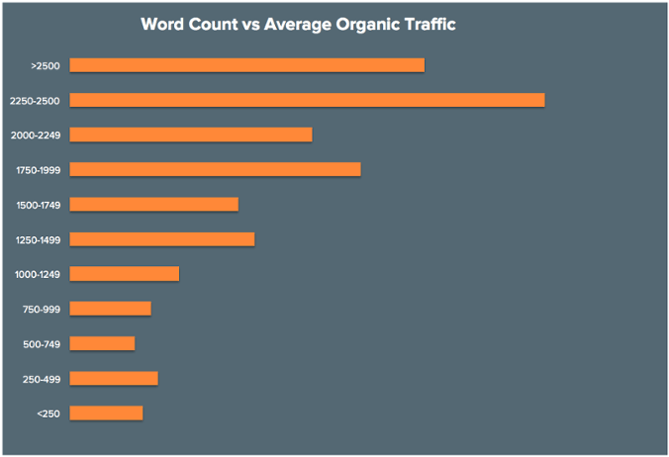
Source: HubSpot
- Create localized content: The tourism sector is a local industry so you can take advantage of this feature to create localized content which will allow you to reduce competition and attract only your potential customers. If your tourism business is located in London, try to create content that deals with topics related to travel and tourism applied to London making sure to include the term “London” in your keywords. For example, a tourist guide agency in London can create a post about “hidden places in London that you have never visited.”
#4 Manage your reviews on TripAdvisor
TripAdvisor is the largest travel review platform in the world and has more than 450 million users and more than 570 million reviews. If you are the owner of a hotel, a restaurant, a theme park or a provider of tourist activities you should know that reviews play an important role in the tourist’s decision. A survey carried out by PhoCusWright reported that 70 percent of travelers read TripAdvisor reviews before choosing a hotel and that 53 percent do not decide to make any reservations before having read reviews .
While it’s true that reviews can be as beneficial as they are harmful to your business, if you manage them well you can avoid having your image seriously affected by a bad review. Responding to negative comments in an assertive and polite manner is the best way to do this. The PhoCusWright survey also revealed that 87 percent of users believe that an appropriate response to a negative review improves their impression of the establishment .
However, you have to be very careful not to create the opposite effect. In order to respond successfully to a negative review you should :
- Respond as quickly as possible
- Do it politely
- Thank the user for sharing his opinion
- Apologize, if necessary
- Demonstrate that your company takes user comments seriously
- Demonstrate that your team will be fully involved to improve the service
- Try to offer a solution whenever possible
Here’s how the Gray Line San Francisco tour company responded cautiously to a negative review on TripAdvisor, following these recommendations:

Even so, you shouldn’t see criticism as a threat since the opinions of your customers can provide you with valuable information to implement improvements in your business and thus offer a better experience to future visitors. You should also know that, according to the PhoCusWright survey, 66 percent of users tend to ignore extreme comments when they read reviews, so while positive reviews predominate, you shouldn’t worry too much about the destructive ones.
Taking into account that the reviews are, many times, a key factor in a tourist’s decision when booking a table in a restaurant, a room in a hotel, a tour or when buying tickets for a theme park, not having a full profile on TripAdvisor means closing doors to a community of more than 450 million users willing to discover new sites and miss a great opportunity to promote your company and generate more sales.
There are also other review platforms that are gaining popularity, such as Yelp , which currently receives about 130 million unique visits and has more than 70 million reviews.
Unlike TripAdvisor, Yelp is not intended exclusively for the tourism and travel industry (there are reviews on all types of businesses), but it has an important base of reviews on restaurants, hotels and other companies operating within the tourism sector. If you want to discover how to incorporate this platform into your marketing plan, read How to increase reviews on Yelp .
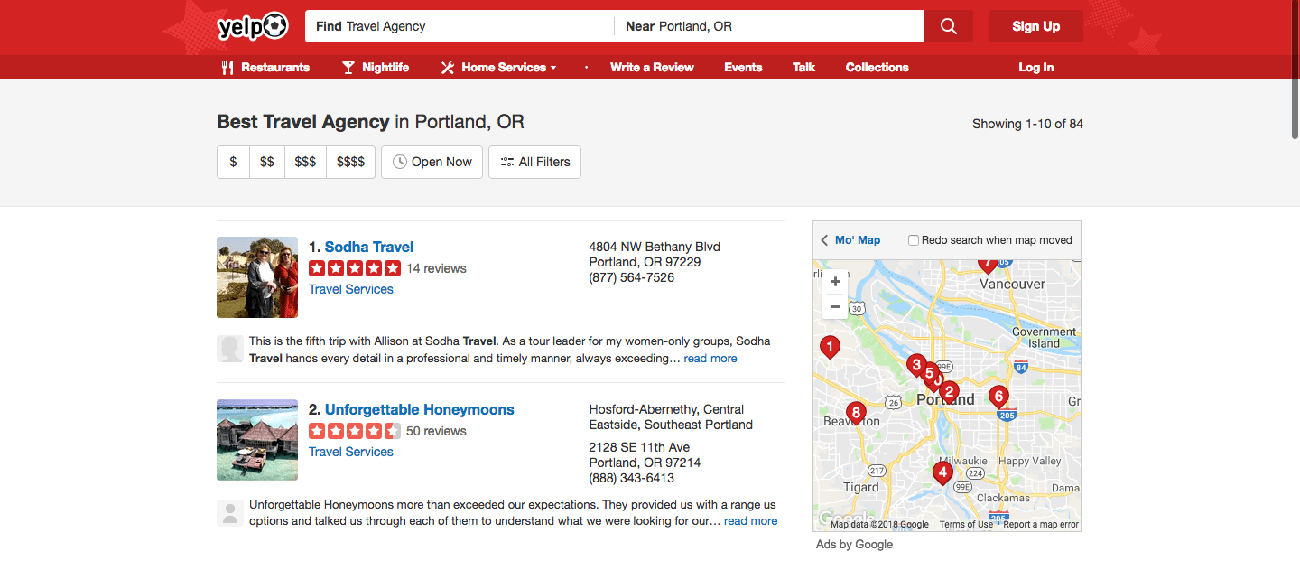
The implementation of these four tourism marketing strategies will help you increase the visibility of your business, attract your target audience and get a better return on your marketing investment. Although these techniques can be applied in most cases within the tourism scope, take into account the needs of your business and choose those that best suit it.
RELATED ARTICLES MORE FROM AUTHOR
Interview with nuh gluten – msme digitalization plan in jamaica, how to increase visibility on google, what is google adsense and how to monetize your hobbies , guide to youtube ads for ecommerce, 4 best practices for local magazine advertising, marketing automation for beginners, marketing para peluquerías: 5 ideas, marketing for clothing store: 5 strategies to better “dress” your business, 3 jewelry marketing ideas to attract more customers, marketing para clínicas veterinarias: 5 estrategias, editor picks, interview with develop digitally limited – msme digitalization plan in jamaica, interview with camaria school – msme digitalization plan in jamaica, interview with health and wellness consultant to travelers – msme digitalization..., popular posts, popular category.
- Strategy 14
- Acquisition 10
- Food Services 5
- Real Estate 4
- Minority-Owned Business 2
- Massage Therapy 2
- Email Marketing 2

Bradenton-area taxes are going up -- for visitors. Here's how it will impact residents
A pr. 16—BRADENTON — Manatee County's tourism board unanimously recommended on Monday to increase the tourism tax that visitors are charged when they make a trip to the Bradenton area.
Tourism taxes are charged to anybody in a Manatee County hotel, vacation rental, Airbnb and other types of short-term housing for less than six months. Those funds go toward improving and marketing local attractions.
Tourists come for a short stay, but residents can expect to see long-term benefits from tourism taxes, such as replenished sand at Anna Maria Island beaches, improvements at LECOM Park and upgrades to Manatee County's new water taxi service.
Right now, the county charges 5%, but that fee could rise to 6% if the Manatee County Commission approves the increase at its April 23 meeting. Collection of the higher fee would begin Aug. 1, and generate an extra $6 million every year.
In 2023, the Manatee County Tax Collector took in more than $30 million in tourism taxes. In addition, Manatee County's tourism industry generated more than $625.9 million in direct revenues.
Those two thresholds met state criteria that allow Manatee County to levy an additional 1% bed tax, tourist director Elliott Falcione told the Manatee County Tourist Development Council on Monday.
Manatee's tourism tax increase brings the county in line with Sarasota, Pinellas and Hillsborough counties which already have a 6% tourist tax.
"This tourism tax would help support the development of assets that appeal to visitors, but would also be utilized by residents," Falcione said. "It's not a resident tax. It's paid by visitors in short-term accommodations."
The bed tax is used not only to market the area to visitors but to enhance the quality of life for residents, Falcione said, pledging not to use the new money to market the community during the 90-day peak of the season when bumper-to-bumper traffic is at its worst.
The bed tax helps market and promote Bradenton area tourism, as well as funding:
— Beach renourishment
— Special events facilities
— Sports venues
— Arts, culture and heritage amenities
— Piers and docks
— Theaters and museums
— Airline partnerships
This story was originally published April 16, 2024, 5:50 AM.
(c)2024 The Bradenton Herald (Bradenton, Fla.) Distributed by Tribune Content Agency, LLC.
Money latest: Drivers warned 'psychological shock' coming from petrol prices
The RAC and the AA have said drivers should brace for "tough" times ahead as prices at the pump rise. Read this and all the latest consumer and personal finance news in the Money blog. Listen to the latest Sky News Daily podcast about inflation as you scroll.
Thursday 18 April 2024 21:03, UK
- Drivers warned 'psychological shock' coming from petrol prices
- Revealed: Broadband provider that gets most complaints
- How to claim for pothole damage - as expert warns it's becoming 'increasingly difficult'
- New savings account offers 7%
Essential reads
- Spotlight on unpaid carers: 'I'm juggling caring for my dad with dementia, looking after my children and my job'
- Ian King analysis: Why an interest rate cut may not come as soon as you think
- Basically… How to improve your credit score
- Money Problem: My boss ruined end of maternity leave with ultimatum - what are my rights?
The Duchess of Sussex seems to be soft-launching the first product from her upcoming lifestyle brand.
Influencers and friends of Meghan have been posting pictures of American Riviera Orchard's debut item - strawberry jam - in recent days.
Parenting campaigner Kelly McKee Zajfen has become the latest to promote the jar, posting an image of it in a basket of lemons and flowers on Instagram.
View this post on Instagram A post shared by Kelly McKee Zajfen (@_heartmom_)
The Duchess reportedly sent out 50 jam jars to online influencers.
Los Angeles-based fashion designer Tracy Robbins shared a photo of a jar - marked 17 out of 50 - earlier this week.
Megan has already launched the American Riviera Orchard website, but it does not feature any products and simply invites visitors to join a waiting list.
An Instagram profile has also been set up for the business, but just features several posts making up its gold logo.
"By Meghan, The Duchess of Sussex. Established 2024", is all the description says.
You can read more about when we first saw a glimpse of the product here ...
Barristers and judges have the biggest gender pay gap in the UK, a study has shown.
Women in the profession earn just over 29% less than their male counterparts - around £8.31 an hour.
That's according to ONS data analysed by Claims.co.uk.
Financial managers and directors were found to have the second-biggest difference, with women paid approximately £11.56 less an hour than men in the same occupation.
"Perhaps in 2024, studies like this will raise awareness of the gender pay gap and precipitate change in these industries, starting with pay reviews," Claims.co.uk said.
You can see the 10 jobs with the biggest pay gaps below...
As the season for high pollen count is upon us, anyone who suffers from hay fever will be thinking about stocking up on their medication.
But this can mean the pocket takes a hit.
Branded tablets from pharmacies can set buyers back quite a bit, with Clarityn allergy relief costing £10.99 for 30 tablets . Piriteze is another common brand, priced at £11.55 for 30 tablets .
But most of these medications have identical properties, regardless of brand.
It's important to look out for the "active" ingredients - and then buy the cheapest option.
These include loratadine and cetirizine hydrochloride.
Supermarkets and discount stores can provide cheaper alternatives to the brand names.
Poundstretcher, for example, sells 30 loratadine tablets for 79p.
Supermarkets will often sell the branded versions alongside their own cheaper equivalents - so compare the ingredients before deciding which to go for.
Here are some examples:
- Asda: £2.50 for cheapest generic v £6.50 for cheapest Clarityn tablets
- Boots: £5.99 for cheapest generic v £11.55 for Piriteze, Zirtek or branded equivalent
- Boots: £2.75 for cheapest generic v £10.99 for Clarityn tablets
- Sainsbury’s: £2.50 for cheapest generic v £11.10 for Clarityn tablets
- Tesco: £2.95 for cheapest generic v £11 for Piriteze, Zirtek or branded equivalent
- Waitrose: £3.25 for cheapest generic v £11.85 for Clarityn tablets
There are no cheaper equivalent options for Benadryl tablets, but Amazon offers cheaper deals of £7.20 or £6.48 with Prime vs a standard price of around £10 from supermarkets.
Remember, certain options could seem cheaper, such as an option of 90p for 10 tablets vs £1 for 10 one-a-day tablets.
However, you'll need to keep taking the first option throughout the day, with the second option lasting you much longer.
You should only buy medications from legitimate pharmacies and shops, as they must adhere to certain standards and inspections.
By Mickey Carroll, science and technology reporter
If you had a great meal out, you'd probably leave a tip. Why don't you tip the people that make your video games too?
That's the suggestion from former game studio president Mike Ybarra. He sparked a debate on X when he posted the idea he'd been thinking about "for a while".
"When I beat a game, there are some that just leave me in awe of how amazing the experience was.
"I've often thought 'I wish I could give these folks another $10 or $20' because it was worth more than my initial $70 and they didn't try to nickel and dime me every second," he posted.
His idea was a flop.
A lot of the more than 1,700 replies asked why games studios didn't just pay their developers properly, at a time when the industry is in crisis.
"Maybe it's time companies start giving salaries and a bonus structure adequate to all their employees," posted @leqvist.
Game developers are facing mass redundancies. ( You can read more about that here .)
In the Past two years, more than 19,000 people have lost their jobs and just four months into 2024, another 8,000 have gone.
Only yesterday, an estimated 600 redundancies were announced by Grand Theft Auto-6 publisher Take-Two, which could include jobs at Scotland’s Rockstar Games UK.
The other criticism that cropped up a lot was that games are pretty expensive anyway and should just be… good?
"A horrible idea. The game should be an amazing experience for $70! Paying extra for a 'great game' means that you are settling for a **** or mediocre game normally," posted @LinuxMostly.
The average price for a boxed video game in the UK is now £35.70, according to the Entertainment and Retail Association yearbook.
After posting his idea, Mr Ybarra clearly went about his life, posting afterwards: "Whoever runs SteamDB [a database of everything on Steam], I tip my hat to you."
"Maybe you should tip them," came the reply.
Crisis-hit Boeing has rushed to defend itself from fresh whistleblower allegations of poor practice as the airline grapples its latest safety crisis.
A Congressional investigation heard evidence yesterday on the safety culture and manufacturing standards at the company - rocked in January by a mid-air scare that saw an Alaska Airlines 737 MAX 9 flight suffer a panel blowout.
One Boeing quality engineer, Sam Salehpour, told members of a Senate subcommittee that Boeing was taking shortcuts to bolster production levels that could lead to jetliners breaking apart.
Read more on this story here ...
Almost one million private renters in England have been handed no-fault evictions since the Conservative government promised to abolish them, new data has shown.
Research by YouGov on behalf of homelessness charity Shelter - and shared exclusively with Sky News - showed that since April 2019 943,000 people had been given Section 21 notices, the equivalent of more than 500 renters every day.
The figures also showed unwanted moves were costing private renters in England £550m a year, with 830,000 people having to move in the past 12 months alone due to either their fixed tenancies coming to an end, being priced out by rent increases or being served with a Section 21.
You can read more on our political reporter Jennifer Scott's exclusive here ...
The Co-operative Bank will this week move a step closer to regaining its mutual status when it announces that it has struck a £780m deal to be bought by the Coventry Building Society.
Sky News has learnt that the two organisations are expected to announce as early as today that they have reached agreement on the terms of a transaction.
Insiders said the cash price to be paid by the Coventry would be close to £800m.
Read more on this story here ...
The 10 cheapest European summer holidays have been revealed, with some "surprising" destinations making the list.
Which? compiled the list after analysing more than 4,500 package holidays.
The consumer group found the least expensive were often in locations that people "assume come with a higher price tag", such as Italy's Amalfi Coast or Greek islands.
Interestingly, traditionally low-cost destinations such as Bulgaria and Turkey failed to make the top 10.
Which? said this was partly because of the type of packages available, with the Amalfi Coast having a wide choice of accommodation on either a self-catering or bed and breakfast basis, which is usually cheaper than full board packages.
These are the 10 cheapest package holidays for seven nights during the first week of August:
Petrol prices could go well above 150p a litre, the RAC has warned, as data shows it has already risen by nearly 8p this year.
The price at the pump has hit a five-month high of 148.5p, according to government figures.
It was 140.8p at the start of the year.
During this week alone, the cost has gone up by 1.6p - there has not been a sharper weekly rise since August 2023.
Average pump prices for diesel have also increased to 157.5p, the highest since November 2023.
"This year is proving to be another tough one for drivers," RAC fuel price spokesperson Simon Williams said.
"Both petrol and diesel are now the most expensive they've been since November last year, which is bad for households, businesses and the economy, especially as we know there is a close link between fuel prices and inflation.
"With increased tensions in the Middle East, the cost of oil is only likely to go up, which could push petrol well above 150p a litre."
This was echoed by AA fuel price spokesman Luke Bosdet, who said pump prices were climbing towards the point "drivers fear".
"It is a psychological shock that shouts out from the price boards each time motorists drive past," he said.
"The early part of the summer could be a tough time for UK motorists."
Mr Williams also explained that while diesel is edging towards 160p, that is due to retailers taking much bigger margins.
"There's only been a few pence between the wholesale prices of both fuels since mid-March," he added.
"We find it hard to believe that a margin of 13p a litre on diesel - compared to the long-term average of 8p - is fair.
"This surely won't go unnoticed by the Competition and Markets Authority, which only two weeks ago expressed its concern about higher retailer margins."
Virgin Media has topped the rankings of the most complained-about broadband, landline and pay-TV providers, Ofcom figures show.
The regulator said Virgin Media received the most complaints between October and December last year.
The company received 20 complaints per 100,000 broadband customers in the three-month period.
But this was an improvement on the 32 per 100,000 in the previous quarter.
Complaints handling was the cause of 43% of customer complaints, compared with an industry average of 32%.
Some 22% of its complaints were about faults, service and provisioning, well below the industry average of 37%.
It was slightly ahead of Now Broadband, which received 18 complaints per 100,000, but lagged behind the industry average of 12.
Sky, Sky News' parent company, came in with the fewest complaints at five per 100,000 customers.
Virgin Media complaints for landline came in at 13 per 100,000, just ahead of Shell Energy and Now Broadband.
It also received 13 complaints per 100,000 for pay-TV, almost double that of BT.
A Virgin Media O2 spokesman said: "We're committed to providing an excellent service to our customers, and while overall these complaints represent a very small proportion of our customer base, we acknowledge there is a need for improvement, which is under way, and we're focused on getting this right.
"We are investing heavily and making changes across our business to deliver tangible improvements, for example through multi-skilling our teams and rolling out new IT platforms that will make it easier for customers to get support when they need it, and empowering our people to resolve any issues quickly and effectively first time."
By James Sillars , business reporter
The FTSE 100 has recovered a bit more ground in early dealing after Tuesday's sharp losses.
The index opened 0.4% higher at 7,880, building on a 0.4% gain yesterday.
The Tuesday rout, on fears of US interest rates remaining higher for longer, saw more than 1.8% of its value lost.
While the issue remains a concern for investors, miners have dug the FTSE's way to recovery.
Among other sectors making strides were airline and holiday stocks. That was after easyJet reported strong summer bookings and an easing of first-half losses.
The no-frills carrier, which makes all its profits in the six months to the end of September, said it expected to be among the fastest growing European airlines. Shares took off by 4.5%.
Deliveroo stock also gained, by 2.3%, after it returned to order growth in the first three months of the year.
One deal making waves is a takeover of troubled British music investor Hipgnosis Songs Fund. The FTSE 250 firm, which has a catalogue including rights to work by artists including Shakira, Ed Sheeran, Blondie and Red Hot Chili Peppers, is set to be bought by Concord Chorus. Under the terms of the deal, shareholders of Hipgnosis will get $1.16 per share in cash, valuing the company at $1.4bn (£1.1bn).
The price, musical and theatrical rights holder Concord said, represented a 30% premium on the recent value of Hipgnosis shares.
Hipgnosis has been mired by troubles since mid-last year, including valuation concerns, board and legal battles, and a shareholder revolt against a catalogue sale deal that forced a strategic review.
Be the first to get Breaking News
Install the Sky News app for free

Watch CBS News
U.S. issues travel warning for Israel with Iran attack believed to be imminent and fear Gaza war could spread
By Debora Patta , Tucker Reals
Updated on: April 13, 2024 / 5:25 PM EDT / CBS News
Update: Iran launched drone attacks against Israel on Saturday. Read CBS News' latest coverage here .
Tel Aviv — Israel is bracing for a worst-case scenario that U.S. officials believe could materialize within just hours — the possibility of a direct attack on Israeli soil by Iran in retaliation for a strike almost two weeks ago that killed seven Iranian military officers. Iran has vowed to take revenge for Israel killing its commanders, who were hit by an April 1 strike on the Iranian embassy in Syria's capital.
Two U.S. officials told CBS News that a major Iranian attack against Israel was expected as soon as Friday, possibly to include more than 100 drones and dozens of missiles aimed at military targets inside the country. Sources have told CBS News the retaliation could include attacks carried out both by Iranian forces, and proxy groups around the region that it has been funneling additional arms to for weeks.
The officials said it would be challenging for the Israelis to defend against an attack of that magnitude, and while they held out the possibility that the Iranians could opt for a smaller-scale attack to avoid a dramatic escalation, their retaliation was believed to be imminent.
Asked Friday how imminent he believes an attack is, President Biden responded, "I don't want to get into secure information, but my expectation is sooner than later." The president urged Iran not to move forward, saying his message to Tehran was: "Don't."
Tehran has not indicated publicly how or when it will return fire, so it's unclear how far Iran's leaders will go. If they decide to carry out a direct attack on Israel, there's fear it could blow Israel's ongoing war against Iranian ally Hamas up into a much wider regional conflict.
With the Iranian retaliation expected at any time, the U.S. State Department on Thursday warned Americans in Israel not to travel outside major cities, which are better protected from incoming rocket fire by the country's Iron Dome missile defense system. The latest guidance noted that travel by U.S. government employees in Israel could be further restricted with little notice as things develop in the tinderbox region.
"Whoever harms us, we will harm them," Prime Minister Benjamin Netanyahu vowed Thursday as he visited troops at an Israel Defense Forces airbase. "We are prepared … both defensively and offensively."

On Saturday, all U.S. embassies in the Middle East were put on high alert and required to hold emergency action committee meetings. Diplomats in Lebanon and Israel were specifically told not to travel to certain areas within those countries.
Sima Shine, a security expert and former official with Israel's national intelligence agency Mossad, told CBS News it was a dangerous moment for the region, and the "most worried" she has been. She said anxiety over an all-out war was likely just as high "on both sides, in Israel and in Iran."
If Iran does choose to strike Israel directly, it could involve a complex missile and drone attack similar to the one Iranian forces launched against a Saudi oil facility in 2019 .
"They will try to do it on the military or some military asset," Shine predicted. "But the question will be the damage. If there would be many injured people, killed or injured … I think it has the potential for a huge escalation."
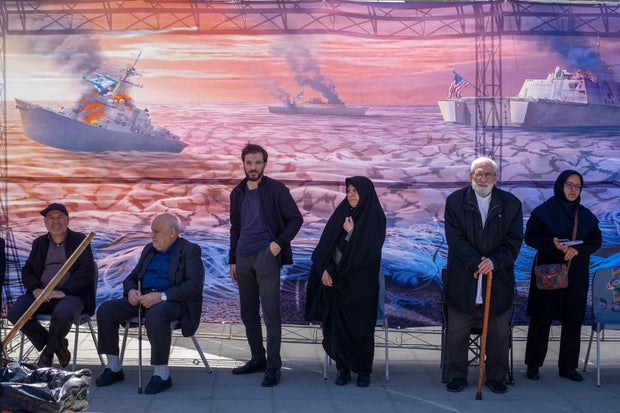
Shine stressed, however, that she still believes neither side actually wants a regional conflict.
U.S. "really trying to avoid war"
The U.S. sent a senior general to Israel this week to coordinate with the close American ally on any response it might make to an Iranian attack. Speaking Friday on "CBS Mornings," America's top military officer said, "we're really trying to avoid war."
"This is part of the dialogue that I have with my counterparts within the region, to include the Israeli chief of defense, who I talked to yesterday," said Joint Chiefs chairman Gen. Charles Q. Brown, Jr., adding that the U.S. military was "doing things not only to prevent a war, but at the same time, one of my primary things is to make sure all the forces in the region are protected."
"My role, as the chairman of the Joint Chiefs, is to plan and prepare," Brown said. "That's one thing we do very well."
Brown's Israeli counterpart, Chief of the General Staff Lt. Gen. Herzi Halevi, "completed a comprehensive situational assessment on the readiness of the IDF for all scenarios," Israel's military said Friday.
"The IDF is very strongly prepared, both offensively and defensively, against any threat," Halevi was quoted as saying in the statement. "The IDF continues to monitor closely what is happening in Iran and different arenas, constantly preparing to deal with existing and potential threats in coordination with the United States Armed Forces."
The IDF said the visiting U.S. general, Central Command chief Gen. Michael Erik Kurilla, was taking part in the IDF's situational assessment.
The dilemma for Iran, said Israeli expert Shine, is to figure out how to deliver its promised response to Israel's attack in Syria, but in a way that does not lead to further escalation. Likewise, Shine said Israel could choose to show restraint when it responds to whatever Iran eventually does.
If either side gets the balance wrong, the consequences for the region, and even the world, could be dire.
Weijia Jiang, David Martin, Margaret Brennan and Olivia Gazis contributed reporting.
- Middle East
- Benjamin Netanyahu
Debora Patta is a CBS News foreign correspondent based in Johannesburg. Since joining CBS News in 2013, she has reported on major stories across Africa, the Middle East and Europe. Edward R. Murrow and Scripps Howard awards are among the many accolades Patta has received for her work.
More from CBS News

Israel blames starvation in Gaza on U.N. making excuses
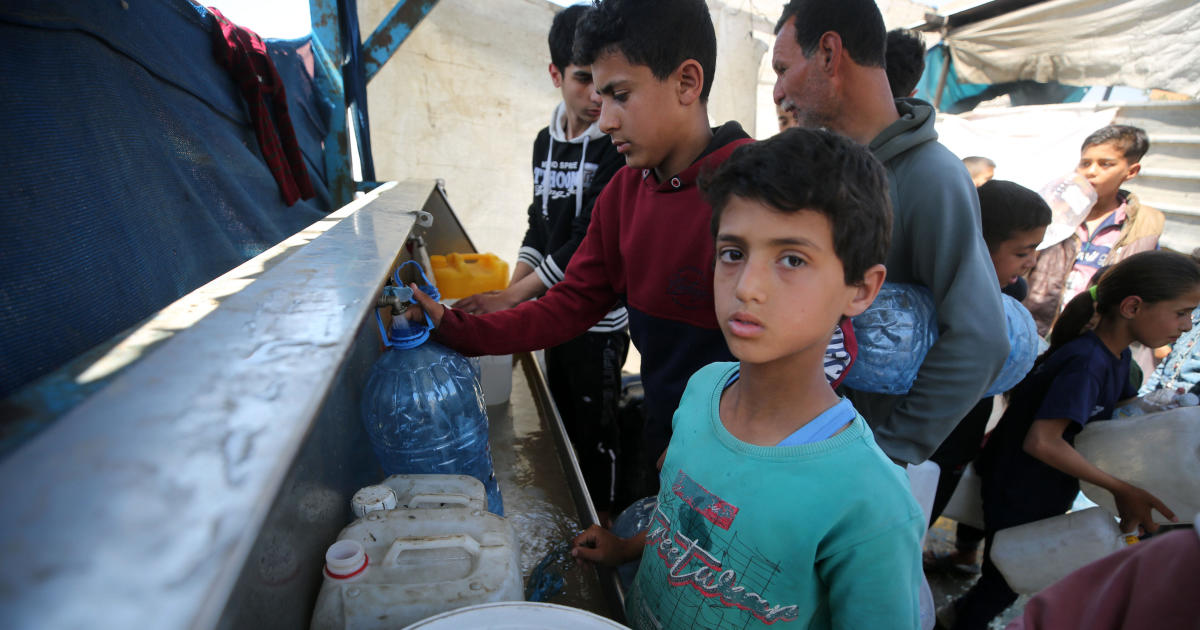
U.N. official says Israel systematically impeding Gaza aid distribution

Kenya defense chief among 10 officers killed in helicopter crash

Trump allies encourage visits with foreign leaders at Mar-a-Lago before election

IMAGES
VIDEO
COMMENTS
The four main tourism market segments include: Demographic segmentation in tourism: Dividing customers based on age, gender, income, education, and other demographic factors. Geographic segmentation in tourism: Segmenting customers based on location, such as country, region, or city. Psychographic segmentation in tourism: Dividing customers ...
Travel Marketing School January 8, 2024. Welcome to our ultimate guide to types of tourism! This collection is a comprehensive exploration of the diverse world of travel. In this guide, we delve into an extensive array of tourism types, each offering unique experiences and perspectives on the world. From thrill-seekers to animal enthusiasts and ...
The specific features of tourism marketing are: The demand for tour package is highly elastic and seasonal in nature. Tour package is a combination of various service ingredient. Designing, developing and marketing of tour package a number of intermediaries are involved. Bed experience at one level can spoil the entire image of the package as ...
6. Culinary Tourism. Culinary tourism is a delightful and immersive way to experience the heart of any destination - its food. It focuses on inviting travelers to try top authentic food of any specific country or region. Travelers savor the flavors, aroma, and traditional cooking techniques of local cuisines.
The tourism sector is constantly evolving, expanding beyond the basics of domestic, inbound, and outbound tourism. As travel agencies, it is crucial to stay informed about the diverse range of tourism types to develop effective strategies and fuel the growth of your business. This comprehensive guide presents 62 types of tourism, offering ...
The tourism industry is an ever-growing and competitive landscape, presenting both challenges and opportunities for businesses operating within it.This is where market segmentation comes in handy. In this blog post, we will discuss what market segmentation is, the importance of market segmentation in the tourism industry, and how online travel agencies can benefit from it.
The global tourism market size was USD 12.4 Trillion in 2023 and is projected to reach USD 23.1 Trillion by 2032, expanding at a CAGR of 5.4% during 2024-2032. The market growth is attributed to the increasing standard of living and mobility. Increasing global mobility and disposable income are expected to boost the market.
Tourism Market Overview. Valued at US$ 10.5 Trillion in 2022, the global tourism market is expected to develop at a CAGR of 5% over the next ten years. By the end of this forecast year in 2032, analysts anticipate the tourism market size would be worth US$ 17.1 Trillion.. Countries such as the United States, France, and other European countries are traditionally famous tourist destinations ...
Tourism market segmentation is the tactical instrument for getting a clear picture of the heterogeneity and commonalities among potential tourist groups. Tourism industry customers have different backgrounds, preferences, aspirations, habits, and of course price sensitivities; even the media they are exposed to varies. ...
Data-driven market segmentation analysis consists of a sequence of steps: (1) clarification of the conceptual foundation, (2) determination of tourists characteristics expected. to be of most ...
These different types have been successively examined, generating a wide range of tourist typologies. For instance, the extant literature suggests at least four motivation-based typologies for the pleasure travel market: anomie and ego-enhancement tourists; fuzzy tourists, recreation seekers, active tourists, escape seekers, and relax seekers ...
Tourism marketing is essential to drive success to a company in the tourism industry. Across different industries, most businesses acknowledge the importance of marketing. Yet, every industry has its challenges and doubts. Marketing strategies need to fit your industry like a glove. So, for those working in the tourism industry, this article will tackle everything related to the best practices ...
Three research hypotheses are selected to guide this study: Hypothesis 1: the types of tourist will pursue different types of authenticity in tourism. Hypothesis 2: a tourist's previous experiences will affect the types of authenticity in tourism. Hypothesis 3: a tourist's socio-demographics will affect the types of authenticity in tourism.
3. Email Marketing. Email marketing in the tourism sector can be used for many purposes, like loyalty programs, weekly newsletters, or lead nurturing. Through email marketing, brands and companies can continuously contact existing and potential customers to build on their relationships.
Slide 10 - Module 4 Unit 2 Market Research Slide 11 - Objectives of Market Research The basis of any strategy for tourism development is market research. Go through the points on the slide. Explain that: The tourism market is one of the most competitive markets with limited resource inside each business. Thus it is imperative for
These types of tourists travel independently and are often in search of adventure, the new and the unfamiliar and authenticity. Cohen's tourist typology- 4 types of tourists . Cohen breaks down his tourist typology further, suggesting that there are four main types of tourists: The Drifter; The Explorer ; The Individual Mass Tourist
4. Tourism and Market Structure was published in Tourism Economics and Policy on page 91.
The Tourism industry has a direct impact on the global economy. In 2019 alone, 1.4 billion international arrivals were recorded, which is equivalent to one-fifth of the world's population. Due to the number of components that play an active role in tourism, there are an infinite number of criteria that can be used to classify it.
Evaluating consumers on five factors, Bain has identified five traveler archetypes. High rollers are more likely to travel long distances and spend more than average—about 22% spend €1,000 to €2,500 on a trip. Voracious travelers tend to be younger, digitally savvy consumers who seek out the best accommodations, experiences, and services.
Optimizing customer experiences on all marketing channels is crucial. 15. Embracing content and influencer marketing. Content and influencer marketing are essential building blocks of any successful tourism strategy. It helps in optimizing the presence of a travel business in the search engine.
EAC Tourism Marketing Strategy @ EAC 2020 ii | P a g e PREFACE The East African Community Tourism Marketing Strategy for the period 2021 -2025 outlines broad strategic objectives to be pursued as well as the priority actions to be undertaken during the period.
Here are a few basic tips to help you create a content and SEO strategy for your tourism marketing plan. Include a blog on your website and publish content that provides valuable information for your target audience: According to Ascend2, 72 percent of marketers say that creating relevant content was the most effective SEO tactic.
There are several benefits of conducting travel and tourism market research including: Identifying consumer trends and preferences: Market research can help identify consumer behavior, preferences, and trends in the travel and tourism industry. This information can help businesses, airports, and travel destinations tailor their products and ...
Those funds go toward improving and marketing local attractions. Tourists come for a short stay, but residents can expect to see long-term benefits from tourism taxes, such as replenished sand at ...
The index opened 0.4% higher at 7,880, building on a 0.4% gain yesterday. The Tuesday rout, on fears of US interest rates remaining higher for longer, saw more than 1.8% of its value lost.
Americans in Israel have been warned to limit their travel as U.S. officials say Iran is expected to launch an attack on the country as soon as Friday.
Some large mobility scooters can travel up to 18 miles per hour. Battery range: The distance a mobility scooter can travel on a single battery charge can vary dramatically—anywhere from 8 to 55 ...
Almost all the ballistic missiles and drones Iran launched at Israel in an unprecedented attack late Saturday were intercepted and failed to meet their mark, according to Israel and the United ...
Local labour market indicators. Local labour market indicators cover employment, unemployment, economic inactivity and jobs density for subregional geographical areas such as local and unitary authorities, counties and regions in the UK for the most recent 12-month period available of the Annual Population Survey (APS).
5. Glossary Average weekly earnings. Average weekly earnings, detailed in our Guide to labour market statistics methodology, measure money paid by employers to employees in Great Britain before tax and other deductions from pay.The estimates are not just a measure of pay rises, because they also reflect, for example, changes in the overall structure of the workforce.